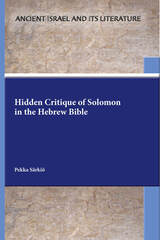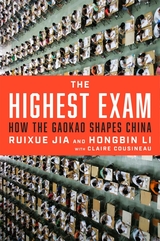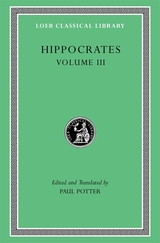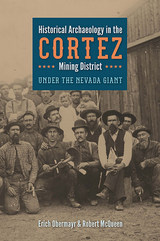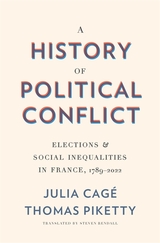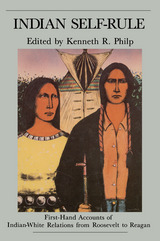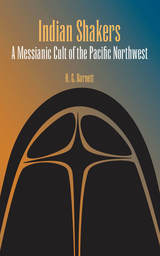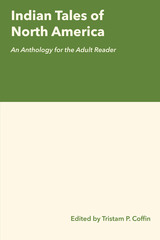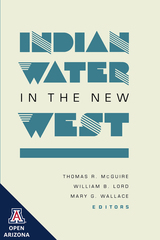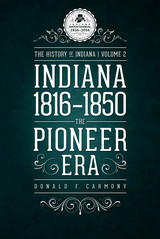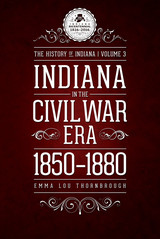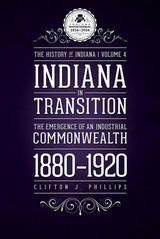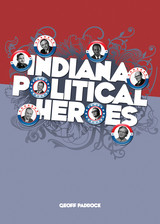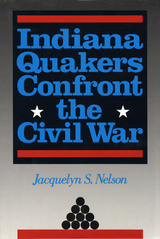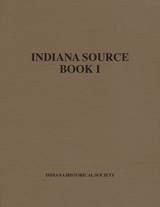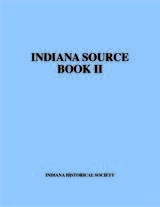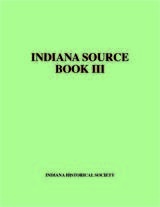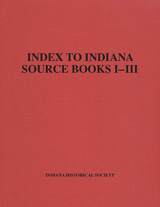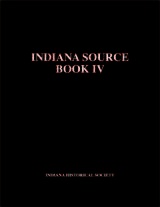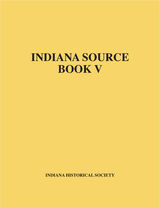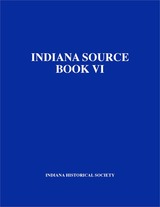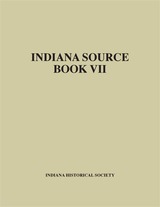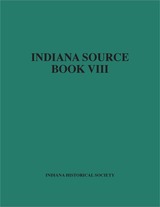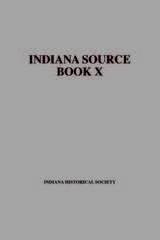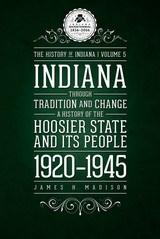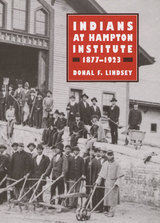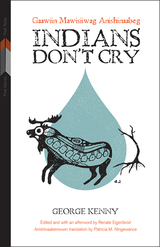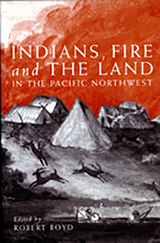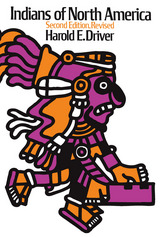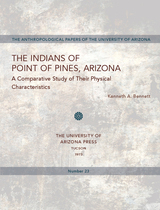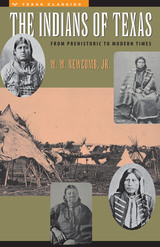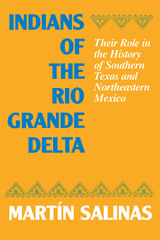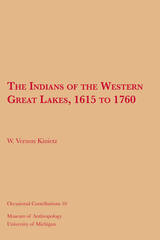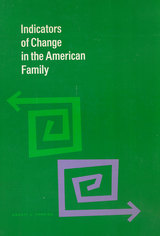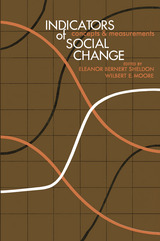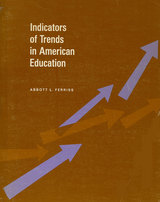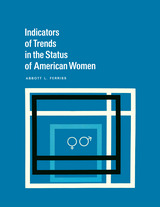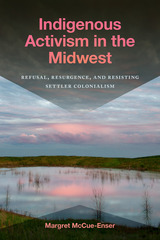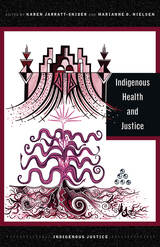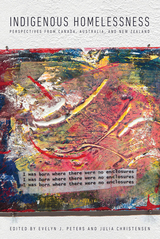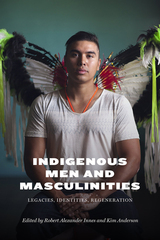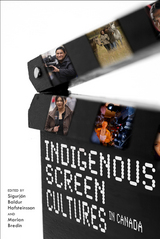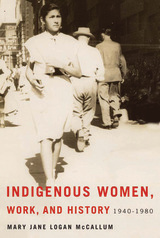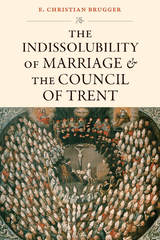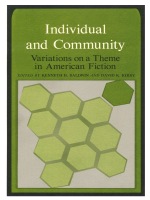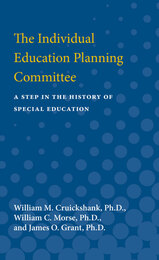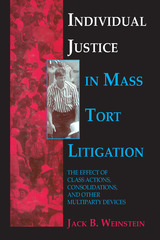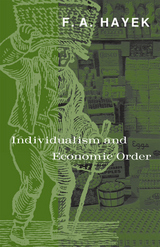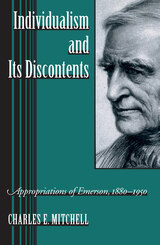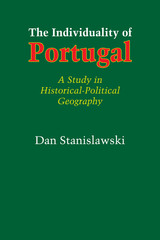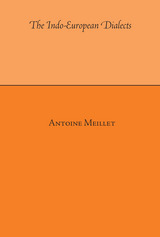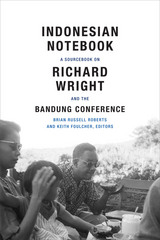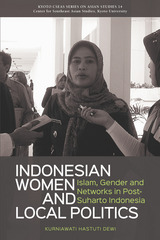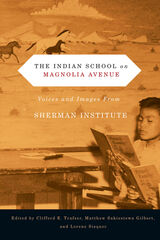 The Indian School on Magnolia Avenue: Voices and Images from Sherman Institute
Edited by Clifford E. Trafzer, Matthew Sakiestewa, and Lorene Sisquoc
Oregon State University Press, 2012 The first collection of writings and images focused on an off-reservation Indian boarding school, The Indian School on Magnolia Avenue shares the fascinating story of this flagship institution, featuring the voices of American Indian students.
In 1902, the federal government opened Sherman Institute in Riverside, California, to transform American Indian students into productive farmers, carpenters, homemakers, nurses, cooks, and seamstresses. Indian students helped build the school and worked daily at Sherman; teachers provided vocational education and placed them in employment through the Outing Program.
Contributors to The Indian School on Magnolia Avenue have drawn on documents held at the Sherman Indian Museum to explore topics such as the building of Sherman, the school’s Mission architecture, the nursing program, the Special Five-Year Navajo Program, the Sherman cemetery, and a photo essay depicting life at the school.
Despite the fact that Indian boarding schools—with their agenda of cultural genocide— prevented students from speaking their languages, singing their songs, and practicing their religions, most students learned to read, write, and speak English, and most survived to benefit themselves and contribute to the well-being of Indian people.
Scholars and general readers in the fields of Native American studies, history, education, public policy, and historical photography will find
The Indian School on Magnolia Avenue an indispensable volume.
Indian Self Rule: First-Hand Accounts of Indian-White Relations from Roosevelt to Reagan
edited by Kenneth R. Philp
Utah State University Press, 1995 Now back in print, this important collection of first-hand accounts from individuals who had leading roles in Indian-white relations is a necessary reference for anyone interested in the modern Indian experience.
Reviewing fifty years of Indian history since the Indian Reorganization Act was passed during FDR's New Deal administration, the contributors include Indian leaders and activists from a wide cross-section of America's varied native communities.
Indian Shakers: A Messianic Cult of the Pacific Northwest
H. G. Barnett
Southern Illinois University Press, 1972 A thorough anthropological study of a distinct religious cult of the Indian tribes of the Pacific Northwest. The book traces the Shaker cult’s development, its ceremonies, ritual elements, faiths, and doctrine.
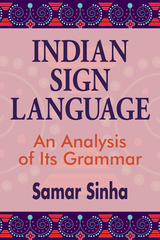 Indian Sign Language: A Linguistic Analysis of Its Grammar
Samar Sinha
Gallaudet University Press, 2017 Samar Sinha presents pioneering research into the grammatical properties of Indian Sign Language (ISL), a language used by members of the Deaf community in India. This detailed and well-illustrated study describes the grammar of ISL and is supplemented by comparative and theoretical analyses in the core areas of sublexical structure, morphology, and syntax. Sinha offers a field-based, comprehensive analysis that covers topics such as
o sign formation parameters
o syllable structure
o sonority hierarchy
o semantics of space
o pluralization strategies
o phi-features
o indexing and localization
o agreement
o word order
He provides a description of the Indian Deaf community that serves to frame his analysis of ISL and highlights the need for greater awareness and acknowledgment of the language and its users. The lack of research on ISL in Indian academia has slowed efforts toward the standardization of ISL and the development of pedagogical materials. This work adds to the growing understanding of natural human language in general and ISL in particular. It also contributes to the empowerment of the Deaf community in India and will strengthen the efforts carried out by d/Deaf activists and researchers.
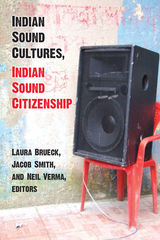 Indian Sound Cultures, Indian Sound Citizenship
Laura Brueck, Jacob Smith, and Neil Verma, editors
University of Michigan Press, 2020 From the cinema to the recording studio to public festival grounds, the range and sonic richness of Indian cultures can be heard across the subcontinent. Sound articulates communal difference and embodies specific identities for multiple publics. This diversity of sounds has been and continues to be crucial to the ideological construction of a unifying postcolonial Indian nation-state.
Indian Sound Cultures, Indian Sound Citizenship addresses the multifaceted roles sound plays in Indian cultures and media, and enacts a sonic turn in South Asian Studies by understanding sound in its own social and cultural contexts. “Scapes, Sites, and Circulations” considers the spatial and circulatory ways in which sound “happens” in and around Indian sound cultures, including diasporic cultures. “Voice” emphasizes voices that embody a variety of struggles and ambiguities, particularly around gender and performance. Finally, “Cinema Sound” make specific arguments about film sound in the Indian context, from the earliest days of talkie technology to contemporary Hindi films and experimental art installations.
Integrating interdisciplinary scholarship at the nexus of sound studies and South Asian Studies by questions of nation/nationalism, postcolonialism, cinema, and popular culture in India, Indian Sound Cultures, Indian Sound Citizenship offers fresh and sophisticated approaches to the sonic world of the subcontinent.
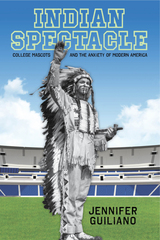 Indian Spectacle: College Mascots and the Anxiety of Modern America
Guiliano, Jennifer
Rutgers University Press, 2015 Amid controversies surrounding the team mascot and brand of the Washington Redskins in the National Football League and the use of mascots by K–12 schools, Americans demonstrate an expanding sensitivity to the pejorative use of references to Native Americans by sports organizations at all levels. In Indian Spectacle, Jennifer Guiliano exposes the anxiety of American middle-class masculinity in relation to the growing commercialization of collegiate sports and the indiscriminate use of Indian identity as mascots. Indian Spectacle explores the ways in which white, middle-class Americans have consumed narratives of masculinity, race, and collegiate athletics through the lens of Indian-themed athletic identities, mascots, and music. Drawing on a cross-section of American institutions of higher education, Guiliano investigates the role of sports mascots in the big business of twentieth-century American college football in order to connect mascotry to expressions of community identity, individual belonging, stereotyped imagery, and cultural hegemony. Against a backdrop of the current level of the commercialization of collegiate sports—where the collective revenue of the fifteen highest grossing teams in Division I of the National Collegiate Athletic Association (NCAA) has well surpassed one billion dollars—Guiliano recounts the history of the creation and spread of mascots and university identities as something bound up in the spectacle of halftime performance, the growth of collegiate competition, the influence of mass media, and how athletes, coaches, band members, spectators, university alumni, faculty, and administrators, artists, writers, and members of local communities all have contributed to the dissemination of ideas of Indianness that is rarely rooted in native people’s actual lives.
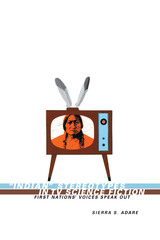 Indian Stereotypes in TV Science Fiction: First Nations' Voices Speak Out
By Sierra S. Adare
University of Texas Press, 2005 According to an early 1990s study, 95 percent of what college students know about Native Americans was acquired through the media, leading to widespread misunderstandings of First Nations peoples. Sierra Adare contends that negative "Indian" stereotypes do physical, mental, emotional, and financial harm to First Nations individuals. At its core, this book is a social study whose purpose is to explore the responses of First Nations peoples to representative "Indian" stereotypes portrayed within the TV science fiction genre. Participants in Adare's study viewed episodes from My Favorite Martian, Star Trek, Star Trek: Voyager, Quantum Leap, The Adventures of Superman, and Star Trek: The Next Generation. Reactions by viewers range from optimism to a deep-rooted sadness. The strongest responses came after viewing a Superman episode's depiction of an "evil medicine man" who uses a ceremonial pipe to kill a warrior. The significance of First Nations peoples' responses and reactions are both surprising and profound. After publication of "Indian" Stereotypes in TV Science Fiction, ignorance can no longer be used as an excuse for Hollywood's irresponsible depiction of First Nations peoples' culture, traditions, elders, religious beliefs, and sacred objects.
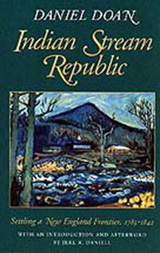 Indian Stream Republic: Settling a New England Frontier, 1785-1842
Daniel Doan
Brandeis University Press, 1996 In the late 18th and early 19th centuries, while governments, politicians, and entrepreneurs argued about the boundary between northern New England and British Canada, a group of hardy individuals were otherwise occupied, carving a life in the wooded frontier that would come to be known as Indian Stream. The Treaty of Paris ending the American Revolution set the US boundary at "the northwesternmost head of the Connecticut River," but with three streams feeding into that head, conflict was inevitable. For nearly 60 years residents of this wild northern outpost were caught in a dispute that ren-dered both land titles and international boundaries uncertain. As squabbling increased among the US, Canada, New Hampshire legislators, and two companies claiming land rights, the settlers decided to take matters into their own hands. In 1832, they declared themselves the independent Indian Stream Republic, establishing a constitution, a bicameral legislature, courts, laws, and a militia. But New Hampshire and Canada were not impressed. The state tried to enforce its laws, the jurisdictional battle escalated, the Indian Stream militia "invaded" Canada, and blood"though only a trickle -- was shed.
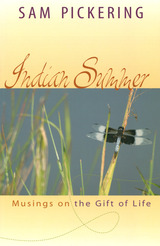 Indian Summer: Musings on the Gift of Life
Sam Pickering
University of Missouri Press, 2005
Returning to Nova Scotia every summer contributes to the illusion of smooth continuance, each summer not the first thread in a new fabric but another button on a cardigan, perhaps looser than buttons below but still familiar and comfortable. Every summer the songs of white-throated sparrows bounce from scrub like novelty tunes from the fifties. Early in the morning ravens grind woodenly. . . . No matter how slowly I jog, on the headland butterflies spring from my feet in clumps, first azures and orange crescents, then wood nymphs, and finally over the lowlands near the Beaver River outlet cabbage whites spiraling, dizzy with mating.
Indian Summer is the newest collection of personal essays by Sam Pickering. In typical Pickering fashion, he seeks to capture the gift of living. He brings to the page again his family, students, and a wealth of country characters who live in places that exist only in his imagination and who wander through the stories he tells.
He describes how his life has been altered by his children leaving home for college, and he ponders the changes aging brings and the things that never change. The consummate teacher, he celebrates academic life and the pleasures of the classroom. Readers will roam familiar ground with Pickering as he explores the fields and small hills of eastern Connecticut and the bogs and woods on his farm in Nova Scotia.
Indian Summer celebrates hearing and seeing. Butterflies tumble across the pages, flowers bloom and wilt, and dragonflies glitter like stained glass in the sunlight. Pickering teaches us to value our words and to laugh at the world around us. His musings mirror his desire for his readers to appreciate life a little more after exploring this book.
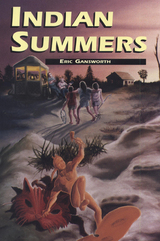 Indian Summers
Eric Gansworth
Michigan State University Press, 1998 The first work of fiction published in the MSU Press American Indian Studies Series, Indian Summers concerns issues of identity for Native Americans. Set against the backdrop of a contemporary reservation that has had its own losses to the dominant culture—a third of its total land mass taken earlier in the century for a New York State water reservoir, its only religious structures Christian churches—Indian Summers introduces these identity conflicts through the lives and circumstances of its major characters. This is a time when belonging to a tribe is difficult, when dominant societal forces encourage either the acts of abandoning a perceived anachronistic lifestyle or of embracing one of a number of simplistic, prescribed, false identities: warrior, environmentalist, crystal-carrying shaman. None of these options is real for the individuals who populate these pockets of different—not alternative—societies. The people who live these lives do not explore alternatives, nor do they necessarily have the desire to—inextricably entwined as they are with their families, culture, history, and land.
Indian Tales of North America: An Anthology for the Adult Reader
Edited by Tristam P. Coffin
University of Texas Press, 1961 This collection of folktales, originally published in 1961, presents stories from a wide range of North American indigenous peoples. The stories are grouped into three categories: “The Way the World Is,” “What Man Must Know and Learn,” and “The Excitement of Living.”
 An Indian Theory of Defeasible Reasoning: The Doctrine of upādhi in the Upādhidarpaṇa
Eberhard Guhe
Harvard University Press The anonymous pre-Gaṅgeśa Navya-Nyāya treatise Upādhidarpaṇa (UD) deals exclusively with the so-called upādhi, a key concept in the Navya-Nyāya theory of inference. The present volume contains the first published edition and translation of the only extant manuscript of the UD. Numerous notes have been added to the translation in order to elucidate the contents and to give a clue to the historical context, as regards authors, works, and philosophical doctrines that are referenced in the UD. Moreover, an extensive introductory chapter provides new insights into relations between the Navya-Nyāya doctrine of upādhi and modern logical theories such as John L. Pollock’s theory of defeasible reasoning and property theories, especially property adaptations of well-founded and non-well-founded set theories.
A very intriguing aspect of the UD is the author’s attempt to define all candidate upādhis by means of a “general defining characteristic” (sāmānyalakṣaṇa) which is a property of itself. He advocates a non-well-founded property concept and distances himself from what is communis opinio in Nyāya, viz. that self-dependence (ātmāśraya) is a kind of absurdity. No such discussion concerning the problem of foundation in the Navya-Nyāya logic of property and location is to be found in the later Upādhivāda of Gaṅgeśa’s Tattavacintāmaṇi.
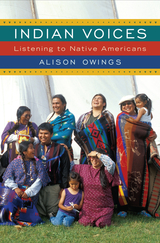 Indian Voices: Listening to Native Americans
Owings, Alison
Rutgers University Press, 2012 In Indian Voices, Alison Owings takes readers on a fresh journey across America, east to west, north to south, and around again. Owings's most recent oral history—engagingly written in a style that entertains and informs—documents what Native Americans say about themselves, their daily lives, and the world around them. Young and old from many tribal nations speak with candor, insight, and (unknown to many non-Natives) humor about what it is like to be a Native American in the twenty-first century. Through intimate interviews many also express their thoughts about the sometimes staggeringly ignorant, if often well-meaning, non-Natives they encounter—some who do not realize Native Americans still exist, much less that they speak English, have cell phones, use the Internet, and might attend powwows and power lunches. Indian Voices, an inspiring and important contribution to the literature about the original Americans, will make every reader rethink the past—and present—of the United States.
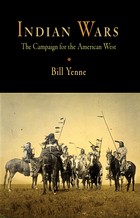 Indian Wars: The Campaign for the American West
Bill Yenne
Westholme Publishing, 2006 A Chronicle of the Longest Military Action in American History
"Splendid. . . .a book that has the rare quality of being both an excellent reference work and a pleasure to read."—Wall Street Journal "As complete and balanced an overview of nearly a century of fighting between the U.S. Army and dozens of Indian nations as there is." —Martin Naparsteck, Salt Lake Tribune "Excellent. . . . Indian Wars is an outstanding introduction to the 'longest campaign ever waged by any of the United States armed forces.' It also has the virtue of speaking eloquently to the past while offering valuable guidance for the future."—Military.com The Indian wars remain the most misunderstood campaign ever waged by the U. S. Army. From the first sustained skirmishes west of the Mississippi River in the 1850s to the sweeping clashes of hundreds of soldiers and warriors along the upper plains decades later, these wars consumed most of the active duty resources of the army for the greater part of the nineteenth century and resulted in the disruption of nearly all of the native cultures in the West. Yet the popular understanding of the Indian wars is marred by stereotypes and misinformation as well as a tendency to view these individual wars—the battles against the Sioux, the Cheyenne, the Nez Perce, the Apache, and other groups—as distinct incidents rather than parts of a single overarching campaign. Dispelling notions that American Indians were simply attempting to stop encroachment on their homelands or that they shared common views on how to approach the Europeans, Bill Yenne explains in Indian Wars: The Campaign for the American West, that these wars, fought for more than five decades across a landscape the size of continental Europe, were part of a general long-term strategy by the U. S. Army to control the West as well as extensions of conflicts among native peoples that predated European contact. Complete with a general history of Indian and European relations from the earliest encounters to the opening of the west, and featuring legendary figures from both sides, including Crazy Horse, Chief Joseph, Sitting Bull, Geronimo, George Custer, Kit Carson, and George Crook, Indian Wars allows the reader to better understand the sequence of events that transformed the West and helped define the American temperament.
Indian Water in the New West
Thomas R. McGuire
University of Arizona Press, 1993 Brings together the views of engineers, lawyers, ecologists, economists, professional mediators, federal officials, an anthropologist, and a Native American tribal leader--all either students of these processes or protagonists in them--to discuss how the legitimate claims of both Indians and non-Indians to scarce water in the West are being settled.
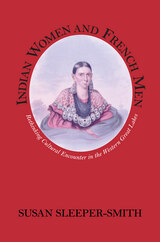 Indian Women and French Men: Rethinking Cultural Encounter in the Western Great Lakes
Susan Sleeper-Smith
University of Massachusetts Press, 2001 A center of the lucrative fur trade throughout the colonial period, the Great Lakes region was an important site of cultural as well as economic exchange between native and European peoples. In this well-researched study, Susan Sleeper-Smith focuses on an often overlooked aspect of these interactions—the role played by Indian women who married French traders.Drawing on a broad range of primary and secondary sources, she shows how these women used a variety of means to negotiate a middle ground between two disparate cultures. Many were converts to Catholicism who constructed elaborate mixed-blood kinship networks that paralleled those of native society, thus facilitating the integration of Indian and French values. By the mid-eighteenth century, native women had extended these kin linkages to fur trade communities throughout the Great Lakes, not only enhancing access to the region's highly prized pelts but also ensuring safe transport for other goods. Indian Women and French Men depicts the encounter of Old World and New as an extended process of indigenous adaptation and change rather than one of conflict and inevitable demise. By serving as brokers between those two worlds, Indian women who married French men helped connect the Great Lakes to a larger, expanding transatlantic economy while securing the survival of their own native culture. As such, Sleeper-Smith points out, their experiences illuminate those of other traditional cultures forced to adapt to market-motivated Europeans.
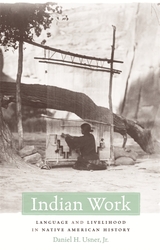 Indian Work: Language and Livelihood in Native American History
Daniel H. Usner Jr.
Harvard University Press, 2009 Representations of Indian economic life have played an integral role in discourses about poverty, social policy, and cultural difference but have received surprisingly little attention. Daniel Usner dismantles ideological characterizations of Indian livelihood to reveal the intricacy of economic adaptations in American Indian history.
Officials, reformers, anthropologists, and artists produced images that exacerbated Indians’ economic uncertainty and vulnerability. From Jeffersonian agrarianism to Jazz Age primitivism, European American ideologies not only obscured Indian struggles for survival but also operated as obstacles to their success. Diversification and itinerancy became economic strategies for many Indians, but were generally maligned in the early United States. Indians repeatedly found themselves working in spaces that reinforced misrepresentation and exploitation. Taking advantage of narrow economic opportunities often meant risking cultural integrity and personal dignity: while sales of baskets made by Louisiana Indian women contributed to their identity and community, it encouraged white perceptions of passivity and dependence. When non-Indian consumption of Indian culture emerged in the early twentieth century, even this friendlier market posed challenges to Indian labor and enterprise. The consequences of this dilemma persist today.
Usner reveals that Indian engagement with commerce has consistently defied the narrow choices that observers insisted upon seeing.
Indiana 1816-1850: The Pioneer Era
Donald F. Carmony
Indiana Historical Society Press, 1998 In Indiana 1816–1850: The Pioneer Era (vol. 2, History of Indiana Series), author Donald F. Carmony explores the political, economic, agricultural, and educational developments in the early years of the nineteenth state. Carmony's book also describes how and why Indiana developed as it did during its formative years and its role as a member of the United States. The book includes a bibliography, notes, and index.
 Indiana: A History
Howard H. Peckham
University of Illinois Press, 1978 For much of Indiana's history, its distinctiveness has lain in its typicality. It has embodied–-and continues to embody-–values and behavior that are specifically American. In the late eighteenth century Indiana was the heart of the Old Northwest, a vast area conceived as a preserve where independent farmers and their families could live free from the shadow of slavery.
During the Civil War, the state found itself divided, with Indianans' allegiances split between Southern partisans and zealous Yankees. Throughout this period, the workshops and farms of Indiana continued to provide the growing nation with food and other necessities. Countless small towns prospered; Indianapolis grew, and Gary, on the southern shore of Lake Michigan, became synonymous with steel production, symbolizing the industrial might of America. Readers all over the country embraced the writings of Indianans such as James Whitcomb Riley and Booth Tarkington, while Indiana's painters disseminated iconic and idyllic images of America.
This comprehensive history traces the history of the Hoosier state, revealing its most significant contributions to the nation as a whole, while also exploring the unique character of its land and people. Howard H. Peckham relates recent changes in Indiana as a variety of ethnic and racial groups have come seeking a share in the good life, enriching and redefining this ever-changing state for the new millennium.
Indiana in the Civil War Era, 1850-1880
Emma Lou Thornbrough
Indiana Historical Society Press, 1965 In Indiana in the Civil War Era, 1850–1880 (vol. 3, History of Indiana Series), author Emma Lou Thornbrough deals with the era of the Civil War and Reconstruction. Thornbrough utilized scholarly writing as well as examined basic source materials, both published and unpublished, to present a balanced account of life in Indiana during the Civil War era, with attention given to political, economic, social, and cultural developments. The book includes a bibliography, notes, and index.
Indiana in Transition: The Emergence of an Industrial Commonwealth, 1880-1920
Clifton J. Phillips
Indiana Historical Society Press, 1968 In Indiana in Transition: The Emergence of an Industrial Commonwealth, 1880–1920 (vol. 4, History of Indiana Series), author Clifton J. Phillips covers the period during which Indiana underwent political, economic, and social changes that furthered its evolution from a primarily rural-agricultural society to a predominantly urban-industrial commonwealth. The book includes a bibliography, notes, and index.
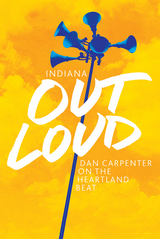 Indiana Out Loud: Dan Carpenter on the Heartland Beat
Dan Carpenter
Indiana Historical Society Press, 2013 Since 1976, Dan Carpenter’s writing has appeared in the pages of the Indianapolis Star as a police reporter, book critic, and renowned op-ed columnist. In writing for the state’s largest newspaper, Carpenter has covered the life and times of some notable Hoosiers, as well as serving as a voice for the disadvantaged, sometimes exasperating the Star’s readership in central Indiana as the newspaper’s “house liberal.” Indiana Out Loud is a collection of the best of Carpenter’s work since 1993 and includes timely and engaging examinations of the lives of such intriguing people as wrestling announcer Sam Menacker, survivor of the James Jones People’s Temple massacre Catherine Hyacinth Thrash, Indianapolis African American leader Charles “Snookie” Hendricks, Atlas Grocery impresario Sid Maurer, and coaches James “Doc” Counsilman and Ray Crowe. The book also includes a healthy dose of literary figures, politicians, historians, knaves, crooks, and fools.
Indiana Political Heroes
Geoff Paddock
Indiana Historical Society Press, 2008 Politics has always played an important role in Indiana, and the state itself at one time furnished candidates for national office for an assortment of American political parties. From 1840, when Whig William Henry Harrison captured the White House with his “Tippecanoe and Tyler too” campaign, to 1940, when Wendell Willkie won the Republican presidential nomination and challenged incumbent President Franklin D. Roosevelt's try for a third term in office, approximately 60 percent of the elections had Hoosiers on a party’s national ticket. Indiana Political Heroes features essays on eight Hoosier politicians who have made a difference in Indiana and in the nation’s capital.
Indiana Quakers Confront the Civil War
Jacquelyn S. Nelson
Indiana Historical Society Press, 1991 When members of the Society of Friends, or Quakers, first arrived in antebellum Indiana, they could not have envisioned the struggle which would engulf the nation when the American Civil War began in 1861. Juxtaposed with its stand against slavery a second tenet of the Society's creed--adherence to peace--also challenged the unity of Friends when the dreaded conflict erupted. Indiana Quakers Confront the Civil War chronicles for the first time the military activities of Indiana Quakers during America's bloodiest war and explores the motivation behind the abandonment, at least temporarily, of their long-standing testimony against war.
Indiana Through Tradition and Change: A History of the Hoosier State and Its People, 1920-1945
James H. Madison
Indiana Historical Society Press, 1982 In Indiana through Tradition and Change: A History of the Hoosier State and Its People, 1920–1945 (vol. 5, History of Indiana Series), author James H. Madison covers Indiana during the period between World War I and World War II. Madison follows the generally topical organization set by previous volumes in the series, with initial chapters devoted to politics and later chapters to social, economic, and cultural questions. The last chapter provides an overview of the home front during World War II. Each chapter is intended to stand alone, but a fuller understanding of subjects and themes treated in any one chapter will result from a reading of the whole book. The book includes a bibliography, notes, and index.
Indiana to 1816: The Colonial Period
John D. Barnhart
Indiana Historical Society Press, 2016 In Indiana to 1816: The Colonial Period (vol. 1, History of Indiana Series), authors John D. Barnhart and Dorothy L. Riker present Indiana's past from its prehistory through the advance to statehood. Topics covered include the French and British presence, the American Revolution, and the territorial days. Reprinted in 1999, the book includes a bibliography, notes, and index.
Indianapolis: A City of Immigrants
M. Teresa Baer
Indiana Historical Society Press, 2012 The booklet opens with the Delaware Indians prior to 1818. White Americans quickly replaced the natives. Germanic people arrived during the mid-nineteenth century. African American indentured servants and free blacks migrated to Indianapolis. After the Civil War, southern blacks poured into the city. Fleeing war and political unrest, thousands of eastern and southern Europeans came to Indianapolis. Anti-immigration laws slowed immigration until World War II. Afterward, the city welcomed students and professionals from Asia and the Middle East and refugees from war-torn countries such as Vietnam and poor countries such as Mexico. Today, immigrants make Indianapolis more diverse and culturally rich than ever before.
Indianapolis: The Bass Photo Company Collection
Susan Sutton
Indiana Historical Society Press, 2008 When the Bass Photo Company began its operations, Indiana had been a state for less than a hundred years, photography was less than seventy-five years old, and Indianapolis's centennial was more than a decade away. The capital city was growing rapidly. The Bass Photo Company photographed the local automobile industry, the rise of new office buildings, and activity along the commercial hub of Washington, Illinois, Meridian and Market streets. Included in the volume are 182 nostalgic images of the Indianapolis 500 Mile Race, leisure activities, individual portraits, street scenes, Monument Circle, a parade of returning World War I soldiers and more.
Indiana's 200: The People Who Shaped the Hoosier State
Linda C. Gugin
Indiana Historical Society Press, 2015 Part of the Indiana Historical Society's commemoration of the nineteenth state's bicentennial, Indiana's 200: The People Who Shaped the Hoosier State recognizes the people who made enduring contributions to Indiana in its 200-year history. Written by historians, scholars, biographers, and independent researchers, the biographical essays in this book will enhance the public's knowledge and appreciation of those who made a difference in the lives of Hoosiers, the country, and even the world. Subjects profiled in the book include individuals from all fields of endeavor: law, politics, art, music, entertainment, literature, sports, education, business/industry, religion, science/invention/technology, as well as "the notorious."
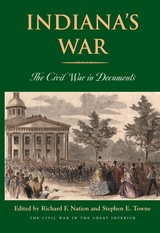 Indiana’s War: The Civil War in Documents
Richard F. Nation
Ohio University Press, 2009 Indiana’s War is a primary source collection featuring the writings of Indiana’s citizens during the Civil War era. Using private letters, official records, newspaper articles, and other original sources, the volume presents the varied experiences of Indiana’s participants in the war both on the battlefield and on the home front. Starting in the 1850s, the documents show the sharp political divisions over issues such as slavery, race, and secession in Indiana, divisions that boiled over into extraordinary strife and violence in the state during the rebellion. This conflict touched all levels and members of society, including men, women, and children, whites and African Americans, native-born citizens and immigrants, farmers and city and town dwellers.
Collecting the writings of Indiana’s peoples on a wide range of issues, chapters focus on the politics of race prior to the war, the secession crisis, war fever in 1861, the experiences of soldiers at the front, homefront hardships, political conflict between partisan foes and civil and military authorities, reactions to the Emancipation Proclamation, and antiwar dissent, violence, and conspiracy.
Indiana’s War is an excellent accompanying primary source text for undergraduate and graduate courses on the American Civil War. It documents the experiences of Indiana’s citizens, from the African American soldier to the antiwar dissenter, from the prewar politician to the postwar veteran, from the battle-scarred soldier to the impoverished soldier’s wife, all showing the harsh realities of the war.
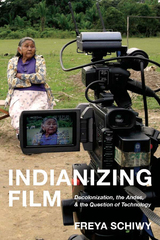 Indianizing Film: Decolonization, the Andes, and the Question of Technology
Schiwy, Freya
Rutgers University Press, 2009 Latin American indigenous media production has recently experienced a noticeable boom, specifically in Bolivia, Ecuador, and Colombia. Indianizing Film zooms in on a selection of award-winning and widely influential fiction and docudrama shorts, analyzing them in the wider context of indigenous media practices and debates over decolonizing knowledge. Within this framework, Freya Schiwy approaches questions of gender, power, and representation. Schiwy argues that instead of solely creating entertainment through their work indigenous media activists are building communication networks that encourage interaction between diverse cultures. As a result, mainstream images are retooled, permitting communities to strengthen their cultures and express their own visions of development and modernization. Indianizing Film encourages readers to consider how indigenous media contributes to a wider understanding of decolonization and anticolonial study against the universal backdrop of the twenty-first century.
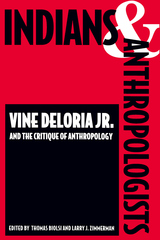 Indians and Anthropologists: Vine Deloria, Jr., and the Critique of Anthropology
Thomas Biolsi
University of Arizona Press, 1997 In 1969 Vine Deloria, Jr., in his controversial book Custer Died for Your Sins, criticized the anthropological community for its impersonal dissection of living Native American cultures. Twenty-five years later, anthropologists have become more sensitive to Native American concerns, and Indian people have become more active in fighting for accurate representations of their cultures. In this collection of essays, Indian and non-Indian scholars examine how the relationship between anthropology and Indians has changed over that quarter-century and show how controversial this issue remains. Practitioners of cultural anthropology, archaeology, education, and history provide multiple lenses through which to view how Deloria's message has been interpreted or misinterpreted. Among the contributions are comments on Deloria's criticisms, thoughts on the reburial issue, and views on the ethnographic study of specific peoples. A final contribution by Deloria himself puts the issue of anthropologist/Indian interaction in the context of the century's end.
CONTENTS
Introduction: What's Changed, What Hasn't, Thomas Biolsi & Larry J. Zimmerman
Part One--Deloria Writes Back
Vine Deloria, Jr., in American Historiography, Herbert T. Hoover
Growing Up on Deloria: The Impact of His Work on a New Generation of Anthropologists, Elizabeth S. Grobsmith
Educating an Anthro: The Influence of Vine Deloria, Jr., Murray L. Wax
Part Two--Archaeology and American Indians
Why Have Archaeologists Thought That the Real Indians Were Dead and What Can We Do about It?, Randall H. McGuire
Anthropology and Responses to the Reburial Issue, Larry J. Zimmerman
Part Three-Ethnography and Colonialism
Here Come the Anthros, Cecil King
Beyond Ethics: Science, Friendship and Privacy, Marilyn Bentz
The Anthropological Construction of Indians: Haviland Scudder Mekeel and the Search for the Primitive in Lakota Country, Thomas Biolsi
Informant as Critic: Conducting Research on a Dispute between Iroquoianist Scholars and Traditional Iroquois, Gail Landsman
The End of Anthropology (at Hopi)?, Peter Whiteley
Conclusion: Anthros, Indians and Planetary Reality, Vine Deloria, Jr.
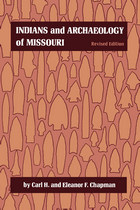 Indians and Archaeology of Missouri, Revised Edition
Carl H. Chapman & Eleanor F. Chapman
University of Missouri Press, 1983 This expanded edition of Indians and Archaeology of Missouri gives an excellent introduction to the cultural development of Missouri’s Indians during the past twelve thousand years. Providing a new chapter on the Hunter Foragers of the Dalton period and substantial revision of other chapters to incorporate recent discoveries, the Chapmans present knowledge based upon decades of experience with archaeological excavations in an understandable and fascinating form. The first edition of Indians and Archaeology of Missouri has been recognized in Missouri and nationally as one of the best books of its kind. The Missouri Historical Review called it “simply indispensable.” The Plains Anthropologist added similar praise: “Clearly written and exceptionally well illustrated…it is the answer to the amateur’s prayers.” Archaeology described it as “a boon to Missouri’s many amateur archaeologists, a useful source of information for professionals and interesting reading for the layman.”
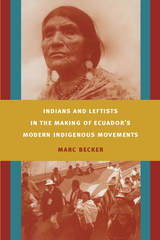 Indians and Leftists in the Making of Ecuador's Modern Indigenous Movements
Marc Becker
Duke University Press, 2008 In June 1990, Indigenous peoples shocked Ecuadorian elites with a powerful uprising that paralyzed the country for a week. Militants insisted that the government address Indigenous demands for land ownership, education, and economic development. This uprising was a milestone in the history of Ecuador’s social justice movements, and it inspired popular organizing efforts across Latin America. While the insurrection seemed to come out of nowhere, Marc Becker demonstrates that it emerged out of years of organizing and developing strategies to advance Indigenous rights. In this richly documented account, he chronicles a long history of Indigenous political activism in Ecuador, from the creation of the first local agricultural syndicates in the 1920s through the galvanizing protests of 1990. In so doing, he reveals the central role of women in Indigenous movements and the history of productive collaborations between rural Indigenous activists and urban leftist intellectuals. Becker explains how rural laborers and urban activists worked together in Ecuador, merging ethnic and class-based struggles for social justice. Socialists were often the first to defend Indigenous languages, cultures, and social organizations. They introduced rural activists to new tactics, including demonstrations and strikes. Drawing on leftist influences, Indigenous peoples became adept at reacting to immediate, local forms of exploitation while at the same time addressing broader underlying structural inequities. Through an examination of strike activity in the 1930s, the establishment of a national-level Ecuadorian Federation of Indians in 1944, and agitation for agrarian reform in the 1960s, Becker shows that the history of Indigenous mobilizations in Ecuador is longer and deeper than many contemporary observers have recognized.
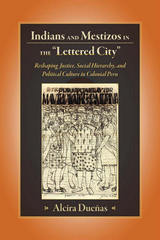 Indians and Mestizos in the "Lettered City": Reshaping Justice, Social Hierarchy, and Political Culture in Colonial Peru
Alcira Duenas
University Press of Colorado, 2010 Through newly unearthed texts virtually unknown in Andean studies, Indians and Mestizos in the "Lettered City" highlights the Andean intellectual tradition of writing in their long-term struggle for social empowerment and questions the previous understanding of the "lettered city" as a privileged space populated solely by colonial elites. Rarely acknowledged in studies of resistance to colonial rule, these writings challenged colonial hierarchies and ethnic discrimination in attempts to redefine the Andean role in colonial society. Scholars have long assumed that Spanish rule remained largely undisputed in Peru between the 1570s and 1780s, but educated elite Indians and mestizos challenged the legitimacy of Spanish rule, criticized colonial injustice and exclusion, and articulated the ideas that would later be embraced in the Great Rebellion in 1781. Their movement extended across the Atlantic as the scholars visited the seat of the Spanish empire to negotiate with the king and his advisors for social reform, lobbied diverse networks of supporters in Madrid and Peru, and struggled for admission to religious orders, schools and universities, and positions in ecclesiastic and civil administration. Indians and Mestizos in the "Lettered City" explores how scholars contributed to social change and transformation of colonial culture through legal, cultural, and political activism, and how, ultimately, their significant colonial critiques and campaigns redefined colonial public life and discourse. It will be of interest to scholars and students of colonial history, colonial literature, Hispanic studies, and Latin American studies.
Indians at Hampton Institute, 1877-1923
Donal F. Lindsey
University of Illinois Press, 1995 Reform and racism at the famed industrial school
Founded in 1868, Hampton Institute educated almost 1400 members of sixty-five Native American peoples. Donal F. Lindsey examines the interactions among Indigenous people, Blacks, and whites at the nation’s premier industrial school for racial minorities.
Lindsey's analysis traces the rise and decline of the program for Indigenous Americans while analyzing the program’s impact on the campaign for Native education. Lindsey also examines how the two marginalized races at Hampton viewed each other and white society. Though integration prevailed in much of student life, it resulted in even greater accommodation to a racist society. The weaknesses and strengths attributed to one race were used with “tender violence” to remake the other, in a program in which the powerful and the powerless remained so regardless of segregation or integration.
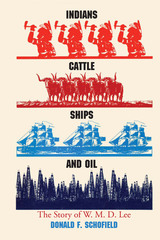 Indians, Cattle, Ships, and Oil: The Story of W. M. D. Lee
By Donald F. Schofield
University of Texas Press, 1985 Indian trader, rancher, harbor developer, oil impresario—these are the many worlds of one of the least chronicled but most fascinating characters of the American West. In the early, bustling years of the frontier, a brazen young man named William McDole Lee moved from Wisconsin to Kansas and then to Texas to forge a life for himself. Becoming a driving entrepreneurial force in Texas's development, Lee soon garnered the alliances and resources necessary to shape the financial destinies of disparate groups throughout the state. His story is expertly told in Donald F. Schofield's Indians, Cattle, Ships, and Oil. Beginning in 1869 as a trader to the southern Cheyenne and Arapaho tribes and fort provisioner to troops garrisoned at Camp Supply, Indian Territory, Lee gained a partner and amassed a fortune in short order from trading buffalo hides and robes. Vast herds of buffalo grazing on the southern plains were killed largely on his order. When buffalo were no longer a profitable commodity, Lee tackled his next challenge—the cattle trade. He began with herds branded LR that grazed on pastures near Fort Supply. Then came his LE herd in the Texas Panhandle. Another partnership, with noted cattle rancher Lucien Scott, resulted in the vast LS ranch, one of the most successful operations of its day. Lee even introduced a new breed of cattle, the Aberdeen-Angus, to the western range. But as his partnership faded, Lee moved on to his next undertaking—the development of Texas' first deep-water harbor. In 1888, Lee and other financiers put up one million dollars to finance a dream: opening international trade from the waters of the Gulf of Mexico to the mainland at the mouth of the Brazos River. Their Brazos River Channel and Dock Company was to construct, own, and operate a deep-water harbor at Velasco, with a railroad link to Houston. Though threats of financial disaster loomed large, the Velasco facility was to welcome, in its day, tugs, barges, and three-masted schooners and to provide impetus for Houston's boom. Yet with success, the mercurial Lee turned to yet another challenge—oil. Starting still another partnership, Lee committed himself to prospecting for oil on the West Columbia Ridge in Brazoria County. Lee and crew struck oil in 1907, developing one of the first producing wells of Brazoria County, but inadequate drilling equipment hampered further fruitful exploration. Lee moved his rigs to the famed Spindletop, where he perfected the technique of shallow drilling. Though spectacular success in the oil business eluded him, Lee's accomplishments set him squarely among the great entrepreneurs of the Texas oil industry. Lee's exploits led him to roles in some of the most dramatic moments in Texas and the West—Indian uprisings, buffalo hunts, political scandals, cowboy strikes and shoot-outs, railroad promotions, oil-well blow-outs and gushers. The people he encountered are the famous and infamous of western history: Cheyenne Chief Little Robe and the outlaw "Hurricane Bill" Martin; Indian Agent John D. Miles and Major General John Pope; outlaws Tom Harris and William Bonney, and Sheriff Pat Garrett. Altogether, Lee's biography vividly shows one man's manipulation of people and events during the settlement of the American frontier.
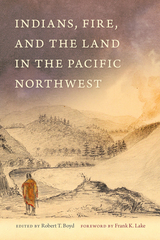 Indians, Fire, and the Land in the Pacific Northwest
Robert Boyd
Oregon State University Press, 2021 This publication is supported by a generous grant from the Confederated Tribes of Grand Ronde through their Cultural Resources Publication Sponsorship Program
Instead of discovering a land blanketed by dense forests, early explorers of the Pacific Northwest encountered a varied landscape including open woods, meadows, and prairies. Far from a pristine wilderness, much of the Northwest was actively managed and shaped by the hands of its Native American inhabitants. Their primary tool was fire.
This volume takes an interdisciplinary approach to one of the most important issues concerning Native Americans and their relationship to the land. Over more than 10,000 years, Native Americans in the Northwest learned the intricacies of their local environments and how to use fire to create desired effects, mostly in the quest for food.
Drawing on historical journals, Native American informants, and ethnobotanical and forestry studies, this book’s contributors describe local patterns of fire use in eight ecoregions, representing all parts of the Native Northwest, from southwest Oregon to British Columbia and from Puget Sound to the Northern Rockies. Their essays provide glimpses into a unique understanding of the environment, one that draws on traditional ecological knowledge. Together, these writings also offer historical perspective on the contemporary debate over “prescribed burning” and management of public lands.
This updated edition includes a foreword by Frank K. Lake and a new epilogue by editor Robert T. Boyd. Contributors include Stephen Arno, Stephen Barrett, Theresa Ferguson, David French, Eugene Hunn, Leslie Johnson, Jeff LaLande, Estella Leopold, Henry Lewis, Helen H. Norton, Reg Pullen, William Robbins, John Ross, Nancy Turner, and Richard White.
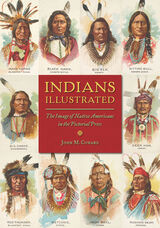 Indians Illustrated: The Image of Native Americans in the Pictorial Press
John M Coward
University of Illinois Press, 2016 After 1850, Americans swarmed to take in a raft of new illustrated journals and papers. Engravings and drawings of "buckskinned braves" and "Indian princesses" proved an immensely popular attraction for consumers of publications like Frank Leslie's Illustrated Newspaper and Harper's Weekly . In Indians Illustrated , John M. Coward charts a social and cultural history of Native American illustrations--romantic, violent, racist, peaceful, and otherwise--in the heyday of the American pictorial press. These woodblock engravings and ink drawings placed Native Americans into categories that drew from venerable "good" Indian and "bad" Indian stereotypes already threaded through the culture. Coward's examples show how the genre cemented white ideas about how Indians should look and behave--ideas that diminished Native Americans' cultural values and political influence. His powerful analysis of themes and visual tropes unlocks the racial codes and visual cues that whites used to represent--and marginalize--native cultures already engaged in a twilight struggle against inexorable westward expansion.
 Indians in Kenya: The Politics of Diaspora
Sana Aiyar
Harvard University Press, 2014 Working as merchants, skilled tradesmen, clerks, lawyers, and journalists, Indians formed the economic and administrative middle class in colonial Kenya. In general, they were wealthier than Africans, but were denied the political and economic privileges that Europeans enjoyed. Moreover, despite their relative prosperity, Indians were precariously positioned in Kenya. Africans usually viewed them as outsiders, and Europeans largely considered them subservient. Indians demanded recognition on their own terms. Indians in Kenya chronicles the competing, often contradictory, strategies by which the South Asian diaspora sought a political voice in Kenya from the beginning of colonial rule in the late 1890s to independence in the 1960s.
Indians’ intellectual, economic, and political connections with South Asia shaped their understanding of their lives in Kenya. Sana Aiyar investigates how the many strands of Indians’ diasporic identity influenced Kenya’s political leadership, from claiming partnership with Europeans in their mission to colonize and “civilize” East Africa to successful collaborations with Africans to battle for racial equality, including during the Mau Mau Rebellion. She also explores how the hierarchical structures of colonial governance, the material inequalities between Indians and Africans, and the racialized political discourses that flourished in both colonial and postcolonial Kenya limited the success of alliances across racial and class lines. Aiyar demonstrates that only by examining the ties that bound Indians to worlds on both sides of the Indian Ocean can we understand how Kenya came to terms with its South Asian minority.
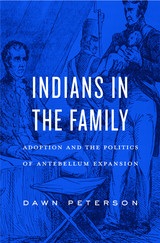 Indians in the Family: Adoption and the Politics of Antebellum Expansion
Dawn Peterson
Harvard University Press, 2017 During his invasion of Creek Indian territory in 1813, future U.S. president Andrew Jackson discovered a Creek infant orphaned by his troops. Moved by an “unusual sympathy,” Jackson sent the child to be adopted into his Tennessee plantation household. Through the stories of nearly a dozen white adopters, adopted Indian children, and their Native parents, Dawn Peterson opens a window onto the forgotten history of adoption in early nineteenth-century America. Indians in the Family shows the important role that adoption played in efforts to subdue Native peoples in the name of nation-building.
As the United States aggressively expanded into Indian territories between 1790 and 1830, government officials stressed the importance of assimilating Native peoples into what they styled the United States’ “national family.” White households who adopted Indians—especially slaveholding Southern planters influenced by leaders such as Jackson—saw themselves as part of this expansionist project. They hoped to inculcate in their young charges U.S. attitudes toward private property, patriarchal family, and racial hierarchy.
U.S. whites were not the only ones driving this process. Choctaw, Creek, and Chickasaw families sought to place their sons in white households, to be educated in the ways of U.S. governance and political economy. But there were unintended consequences for all concerned. As adults, these adopted Indians used their educations to thwart U.S. federal claims to their homelands, setting the stage for the political struggles that would culminate in the Indian Removal Act of 1830.
 Indians In Yellowstone National Park
Joel Janetski
University of Utah Press, 1987 The vast, pine-covered plateau now known as Yellowstone National Park has been lived in, traveled through, and exploited by humans for thousands of years. It is still possible to see the remnants of old camps and deep-rutted trails over which ancient peoples crossed the Park to reach the bison-rich plains. When did humans first visit the area we now call Yellowstone?
Who lived there when the first Europeans entered the region?
What happened to the last of the early inhabitants?
How did the Nez Perce, fleeing across the northen of the newly established Park in 1877, escape U.S. troops?
How did Indians perceive the Park's geysers and hot springs? These and other questions are answered in this popular history of the Park written by a professional archaeologist who is also a seasonal resident of West Yellowstone. Joel Janetski reconstructs past human events from archaeological evidence and historical sources to provide an engrossing story of the people who knew the area hundreds, even thousands, of years ago and who left their traces amidst the grandeur that is today's Yellowstone National Park.
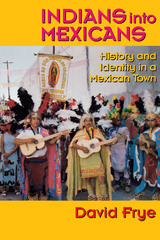 Indians into Mexicans: History and Identity in a Mexican Town
By David Frye
University of Texas Press, 1996 The people of Mexquitic, a town in the state of San Luis Potosí in rural northeastern Mexico, have redefined their sense of identity from "Indian" to "Mexican" over the last two centuries. In this ethnographic and historical study of Mexquitic, David Frye explores why and how this transformation occurred, thereby increasing our understanding of the cultural creation of "Indianness" throughout the Americas. Frye focuses on the local embodiments of national and regional processes that have transformed rural "Indians" into modern "Mexicans": parish priests, who always arrive with personal agendas in addition to their common ideological baggage; local haciendas; and local and regional representatives of royal and later of national power and control. He looks especially at the people of Mexquitic themselves, letting their own words describe the struggles they have endured while constructing their particular corner of Mexican national identity. This ethnography, the first for any town in northeastern Mexico, adds substantially to our knowledge of the forces that have rendered "Indians" almost invisible to European-origin peoples from the fifteenth century up to today. It will be important reading for a wide audience not only in anthropology and Latin American studies but also among the growing body of general readers interested in the multicultural heritage of the Americas.
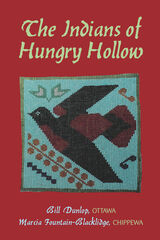 The Indians of Hungry Hollow
Bill Dunlop, Ottawa, and Marcia Fountain-Blacklidge, Chippewa
University of Michigan Press, 2004
Michael Blake's Dances with Wolves transformed denigrating Indian sterotypes and created widespread interest in Native American culture. The subsequent popularity of books on this topic underscores the power of a tale well told. While Blake's story relates the early chapters of Native Americans' survival struggles, later accounts of this struggle remain untold.
The Indians of Hungry Hollow authentically presents these later chapters. The days of Hungry Hollow have long passed, but the opportunity to capture its lessons of community, strong values, and an urge to thrive in matters of the heart and soul are still very much with us.
These are stories of survival, community, sharing, and caring. The situations are often dire: winter in the middle of the Depression; an Indian settlement illegally taken from its inhabitants and set on fire; boaters stranded by bad weather and threatened with death. But if the situations are extreme, the telling of the stories is consistently optimistic yet completely without self-pity or sentimentality, and the characters always find a way through the darkness.
Dunlop's unique style of storytelling is compelling and informative, and these historically significant stories help to elucidate the transition of the American Indian culture from post-tribal days to the present.
Bill Dunlop is a respected Ottawa elder and storyteller. Marcia Fountain-Blacklidge is a professional writer, counselor, and consultant.
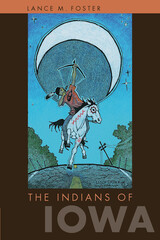 The Indians of Iowa
Foster, Lance M.
University of Iowa Press, 2009 Many different Indian tribes have lived in Iowa, each existing as an independent nation with its own history, culture, language, and traditions. Some were residents before recorded time; some lived in Iowa for relatively short periods but played memorable roles in the state’s history; others visited Iowa mostly during hunting trips or times of war. Stimulating and informative, Lance Foster’s The Indians of Iowa is the only book for the general reader that covers the archaeology, history, and culture of all the different native nations that have called Iowa home from prehistory to the present.
Foster begins with a history of Lewis and Clark’s travels along the Missouri River adjacent to western Iowa. Next, he focuses on the tribes most connected to Iowa from prehistoric times to the present day: the Ioway, Meskwaki, Sauk, Omaha and Ponca, Otoe and Missouria, Pawnee and Arikara, Potawatomi, Illinois Confederacy, Santee and Yankton Sioux, and Winnebago. In between each tribal account, “closer look” essays provide details on Indian women in Iowa, traditional ways of life, Indian history and spirituality, languages and place-names, archaeology, arts and crafts, and houses and landscapes. Finally, Foster brings readers into the present with chapters called “Going to a Powwow,” “Do You Have Indian Blood?” and “Indians in Iowa Today.” The book ends with information about visiting Native American museums, historic sites, and communities in Iowa as well as tribal contacts and a selection of published and online resources.
The story of the Indians of Iowa is long and complicated. Illustrated with maps and stunning original art, Lance Foster’s absorbing, accessible overview of Iowa’s Indian tribes celebrates the rich native legacy of the Hawkeye State. It is essential reading for students, teachers, and everyone who calls Iowa home.
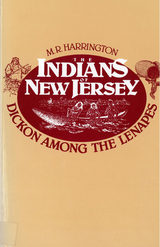 The Indians of New Jersey: Dickon Among the Lenapes
Harrington, M. R
Rutgers University Press, 1963 Here is a story of the Lenape Indians who lived in what is now New Jersey and eastern Pennsylvania. It describes their culture, crafts, and language as no other book has done. Hunters, fishers, artisans of flint and skins and basketry, tellers of traditional tales, dwellers in a region of hills and barrens, of rivers and forests, they had developed a way of life adjusted to the world around them.
In presenting the lore and heritage of the Lenapes, Dr. M.R. Harrington does so through the eyes of a shipwrecked English boy who became a captive of the Indians, and was eventually adopted into the tribe. The narrative is lively reading, and the facts on which it is based are accurate. With the accompanying Clarence Ellsworth line drawings, the reader can understand and even reproduce many of the objects the author describes: the Lenape bows and arrows, muccasins and mats, baskets and bowls.
This new edition is a reissue of an often asked for an unavailable New Jersey classic, first published in 1938.
Indians of North America
Harold E. Driver
University of Chicago Press, 1969 The art of reconstructing civilizations from the artifacts of daily life demands integrity and imagination. Indians of North America displays both in its description of the enormous variation of culture patterns among Indians from the Arctic to Panama at the high points of their histories—a variation which was greater than that among the nations of Europe.
For this second edition, Harold Driver made extensive revisions in chapter content and organization, incorporating many new discoveries and interpretations in archeology and related fields. He also revised several of the maps and added more than 100 bibliographical items. Since the publication of the first edition, there has been an increased interest in the activities of Indians in the twentieth century; accordingly, the author placed much more emphasis on this period.
The Indians of Point of Pines, Arizona: A Comparative Study of Their Physical Characteristics
Kenneth A. Bennett
University of Arizona Press, 1973 The Anthropological Papers of the University of Arizona is a peer-reviewed monograph series sponsored by the School of Anthropology. Established in 1959, the series publishes archaeological and ethnographic papers that use contemporary method and theory to investigate problems of anthropological importance in the southwestern United States, Mexico, and related areas.
Indians of the Rio Grande Delta: Their Role in the History of Southern Texas and Northeastern Mexico
By Martín Salinas
University of Texas Press, 1990 Indians of the Rio Grande Delta is the first single-volume source on these little-known peoples. Working from innumerable primary documents in various Texan and Mexican archives, Martin Salinas has compiled data on more than six dozen named groups that inhabited the area in the sixteenth through the eighteenth centuries. Depending on available information, he reconstructs something of their history, geographical range and migrations, demography, language, and culture. He also offers general information on various unnamed groups of Indians, on the lifeways of the indigenous peoples, and on the relations between the Indian groups and the colonial Spanish missions in the region.
The Indians of the Western Great Lakes, 1615 to 1760
W. Vernon Kinietz
University of Michigan Press, 1940 Indians of the Western Great Lakes, 1615–1760 is an ethnographic study of five tribes of the region: Huron, Miami, Ottawa, Potawatomi, and Chippewa. Author W. Vernon Kinietz based this study on a survey of contact-era accounts from archives in Ottawa, Montreal, Quebec, Chicago, Detroit, Ann Arbor, and Washington, DC.
The Indians of the Western Great Lakes, 1615-1760
W. Vernon Kinietz
University of Michigan Press, 1965 Indians of the Western Great Lakes, 1615–1760 is an ethnographic study of five tribes of the region: Huron, Miami, Ottawa, Potawatomi, and Chippewa. Author W. Vernon Kinietz based this study on a survey of contact-era accounts from archives in Ottawa, Montreal, Quebec, Chicago, Detroit, Ann Arbor, and Washington, DC.
 Indians on Indian Lands: Intersections of Race, Caste, and Indigeneity
Nishant Upadhyay
University of Illinois Press, 2024 Winner of a NWSA/University of Illinois Press First Book Prize Nishant Upadhyay unravels Indian diasporic complicity in its ongoing colonialist relationship with Indigenous peoples, lands, and nations in Canada. Upadhyay examines the interwoven and simultaneous areas of dominant Indian caste complicity in processes of settler colonialism, antiblackness, capitalism, brahminical supremacy, Hindu nationalism, and heteropatriarchy. Resource extraction in British Columbia in the 1970s–90s and in present-day Alberta offer examples of spaces that illuminate the dispossession of Indigenous peoples and simultaneously reveal racialized, gendered, and casted labor formations. Upadhyay juxtaposes these extraction sites with examples of anticolonial activism and solidarities from Tkaronto. Analyzing silence on settler colonialism and brahminical caste supremacy, Upadhyay upends the idea of dominant caste Indian diasporas as racially victimized and shows that claiming victimhood denies a very real complicity in enforcing other power structures. Exploring stories of quotidian proximity and intimacy between Indigenous and South Asian communities, Upadhyay offers meditations on anticolonial and anti-casteist ways of knowledge production, ethical relationalities, and solidarities. Groundbreaking and ambitious, Indians on Indian Lands presents the case for holding Indian diasporas accountable for acts of violence within a colonial settler nation.
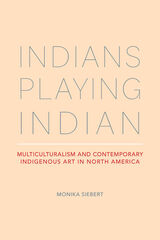 Indians Playing Indian: Multiculturalism and Contemporary Indigenous Art in North America
Monika Siebert
University of Alabama Press, 2015 Explores how American Indian artists have responded to the pervasive misunderstanding of indigenous peoples as cultural minorities in the United States and Canada
Contemporary indigenous peoples in North America confront a unique predicament. While they are reclaiming their historic status as sovereign nations, mainstream popular culture continues to depict them as cultural minorities similar to other ethnic Americans. These depictions of indigenous peoples as “Native Americans” complete the broader narrative of America as a refuge to the world’s immigrants and a home to contemporary multicultural democracies, such as the United States and Canada. But they fundamentally misrepresent indigenous peoples, whose American history has been not of immigration but of colonization.
Monika Siebert’s Indians Playing Indian first identifies this phenomenon as multicultural misrecognition, explains its sources in North American colonial history and in the political mandates of multiculturalism, and describes its consequences for contemporary indigenous cultural production. It then explores the responses of indigenous artists who take advantage of the ongoing popular interest in Native American culture and art while offering narratives of the political histories of their nations in order to resist multicultural incorporation.
Each chapter of Indians Playing Indian showcases a different medium of contemporary indigenous art—museum exhibition, cinema, digital fine art, sculpture, multimedia installation, and literary fiction—and explores specific rhetorical strategies artists deploy to forestall multicultural misrecognition and recover political meanings of indigeneity. The sites and artists discussed include the National Museum of the American Indian in Washington, DC; filmmakers at Inuit Isuma Productions; digital artists/photographers Dugan Aguilar, Pamela Shields, and Hulleah Tsinhnahjinnie; sculptor Jimmie Durham; and novelist LeAnne Howe.
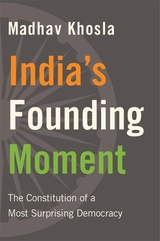 India’s Founding Moment: The Constitution of a Most Surprising Democracy
Madhav Khosla
Harvard University Press, 2020 An Economist Best Book of the Year
How India’s Constitution came into being and instituted democracy after independence from British rule.
Britain’s justification for colonial rule in India stressed the impossibility of Indian self-government. And the empire did its best to ensure this was the case, impoverishing Indian subjects and doing little to improve their socioeconomic reality. So when independence came, the cultivation of democratic citizenship was a foremost challenge.
Madhav Khosla explores the means India’s founders used to foster a democratic ethos. They knew the people would need to learn ways of citizenship, but the path to education did not lie in rule by a superior class of men, as the British insisted. Rather, it rested on the creation of a self-sustaining politics. The makers of the Indian Constitution instituted universal suffrage amid poverty, illiteracy, social heterogeneity, and centuries of tradition. They crafted a constitutional system that could respond to the problem of democratization under the most inhospitable conditions. On January 26, 1950, the Indian Constitution—the longest in the world—came into effect.
More than half of the world’s constitutions have been written in the past three decades. Unlike the constitutional revolutions of the late eighteenth century, these contemporary revolutions have occurred in countries characterized by low levels of economic growth and education, where voting populations are deeply divided by race, religion, and ethnicity. And these countries have democratized at once, not gradually. The events and ideas of India’s Founding Moment offer a natural reference point for these nations where democracy and constitutionalism have arrived simultaneously, and they remind us of the promise and challenge of self-rule today.
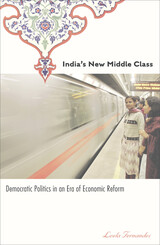 India’s New Middle Class: Democratic Politics in an Era of Economic Reform
Leela Fernandes
University of Minnesota Press, 2006 Today India’s middle class numbers more than 250 million people and is growing rapidly. Public reports have focused mainly on the emerging group’s consumer potential, while global views of India’s new economy range from excitement about market prospects to anxieties over outsourcing of service sector jobs. Yet the consequences of India’s economic liberalization and the expansion of the middle class have transformed Indian culture and politics. In India’s New Middle Class, Leela Fernandes digs into the implications of this growth and uncovers—in the media, in electoral politics, and on the streets of urban neighborhoods—the complex politics of caste, religion, and gender that shape this rising population. Using rich ethnographic data, she reveals how the middle class represents the political construction of a social group and how it operates as a proponent of economic democratization. Delineating the tension between consumer culture and outsourcing, Fernandes also examines the roots of India’s middle class and its employment patterns, including shifting skill sets and labor market restructuring. Through this close look at the country’s recent history and reforms, Fernandes develops an original theoretical approach to the nature of politics and class formation in an era of globalization.In this sophisticated analysis of the dynamics of an economic and political group in the making, Fernandes moves beyond reductionist images of India’s new middle class to bring to light the group’s social complexity and profound influence on politics in India and beyond.Leela Fernandes is associate professor of political science at Rutgers University, New Brunswick.
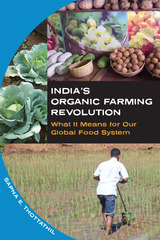 India's Organic Farming Revolution: What It Means for Our Global Food System
Sapna E. Thottathil
University of Iowa Press, 2014 Should you buy organic food? Is it just a status symbol, or is it really better for us? Is it really better for the environment? What about organic produce grown thousands of miles from our kitchens, or on massive corporately owned farms? Is “local” or “small-scale” better, even if it’s not organic? A lot of consumers who would like to do the right thing for their health and the environment are asking such questions.
Sapna Thottathil calls on us to rethink the politics of organic food by focusing on what it means for the people who grow and sell it—what it means for their health, the health of their environment, and also their economic and political well-being. Taking readers to the state of Kerala in southern India, she shows us a place where the so-called “Green Revolution” program of hybrid seeds, synthetic fertilizers, and rising pesticide use had failed to reduce hunger while it caused a cascade of economic, medical, and environmental problems. Farmers burdened with huge debts from buying the new seeds and chemicals were committing suicide in troubling numbers. Farm laborers suffered from pesticide poisoning and rising rates of birth defects. A sharp fall in biodiversity worried environmental activists, and everyone was anxious about declining yields of key export crops like black pepper and coffee.
In their debates about how to solve these problems, farmers, environmentalists, and policymakers drew on Kerala’s history of and continuing commitment to grassroots democracy. In 2010, they took the unprecedented step of enacting a policy that requires all Kerala growers to farm organically by 2020. How this policy came to be and its immediate economic, political, and physical effects on the state’s residents offer lessons for everyone interested in agriculture, the environment, and what to eat for dinner. Kerala’s example shows that when done right, this kind of agriculture can be good for everyone in our global food system.
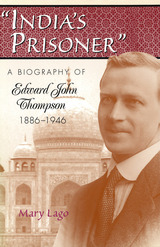 India's Prisoner: A Biography of Edward John Thompson, 1886-1946
Mary Lago
University of Missouri Press, 2001
Edward John Thompson—novelist, poet, journalist, and historian of India—was a liberal advocate for Indian culture and political self-determination at a time when Indian affairs were of little general interest in England. As a friend of Nehru, Gandhi, and other Congress Party leaders, Thompson had contacts that many English officials did not have and did not know how to get. Thus, he was an excellent channel for interpreting India to England and England to India.
Thompson first went to India in 1910 as a Methodist missionary to teach English literature at Bankura Wesleyan College. It was there that he cultivated the literary circle of Rabindranath Tagore, as yet little known in England, and there Thompson learned of the political contradictions and deficiencies of India's educational system. His major conflict, personal and professional, was the lingering influence of Victorian Wesleyanism. In 1923, Thompson resigned and returned to teach at Oxford.
Interest in South Asia studies was minimal at Oxford, and Thompson turned increasingly to writing Indian history. That work, and his unique account of his experiences in the Mesopotamian campaign in World War I, supply a viewpoint found nowhere else, as well as personal views of literary figures such as Robert Graves and Robert Bridges. Thompson was also a major influence on the work of his son, E. P. Thompson, a modern historian of eighteenth-century England.
This important biography covers politically significant events between Thompson's arrival in India and up to his death, and casts considerable light on Thompson and his struggles with his religion and his relationship with India. The first biography of E. J. Thompson, "India's Prisoner" will have widespread appeal, especially to those interested in South Asian and English history, literature, and cultural history.
 India's Revolution: Gandhi and the Quit India Movement
Francis G. Hutchins
Harvard University Press, 1973 Gandhi's Quit India Movement of 1942 was the climax of a nationalist revolutionary movement which sought independence on India's own terms. Indian independence was attained through revolution, not through a benevolent grant from the British imperial regime. "The British left India because Indians had made it impossible for them to stay."
The bases for Francis Hutchins' thesis are new facts from hitherto unused sources: interviews with surviving participants in the movement, private papers from the Gandhi Memorial Museum and the Nehru Memorial Museum and Library, documents in the National Archives of India. In particular, he has studied the secret records of the British government, recently made available, which reveal for the first time the extent of the revolutionary movement and Britain's plans for dealing with it.
Of the British records Hutchins says, "No other regime has left such careful documentation of its strategies or compiled such extensive records revealing the way in which it was overthrown." Even though England had always proclaimed its hope that India would one day become independent, the tacit assumption was that this was a remote eventuality. Only after Gandhi's Quit India Movement did Britain's political parties resign themselves to the necessity to leave quickly, whether or not they believed India was "ready."
Obscured by censorship in India and by preoccupation with World War II, the significance of Gandhi's revolutionary technique was not appreciated at the time. Hutchins' impressive analysis uses the Indian case to develop a general theory of the revolutionary nature of colonial nationalism.
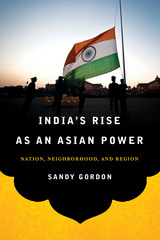 India's Rise as an Asian Power: Nation, Neighborhood, and Region
Sandy Gordon
Georgetown University Press, 2014 India’s Rise as an Asian Power examines India’s rise to power and the obstacles it faces in the context of domestic governance and security, relationships and security issues with its South Asian neighbors, and international relations in the wider Asian region. Instead of a straight-line projection based on traditional measures of power such as population size, economic growth rates, and military spending, Sandy Gordon’s nuanced view of India’s rise focuses on the need of any rising power to develop the means to deal with challenges in its domestic, neighborhood (South Asia), and regional (continental) spheres. Terrorism, insurgency, border disputes, and water conflict and shortages are examples of some of India’s domestic and regional challenges. Gordon argues that before it can assume the mantle of a genuine Asian power or world power, India must improve its governance and security; otherwise, its economic growth and human development will continue to be hindered and its vulnerabilities may be exploited by competitors in its South Asian neighborhood or the wider region. This book will appeal to students and scholars of India and South Asia, security studies, foreign policy, and comparative politics, as well as country and regional specialists.
Indicators of Change in the American Family
Abbott Lamoyne Ferriss
Russell Sage Foundation, 1970 Provides a selection of existing and new measures of family change. The statistical time series are presented and organized around the topics of marriage, marital status, households, fertility, divorce, dependency, work and income, and poverty. The series selected for inclusion were chosen because of an apparent or assumed significant change which they displayed. They are illustrated by graphs and accompanied by a brief commentary. The statistical series are numbered in an appendix, and sources of the data are cited at the foot of the page of commentary.
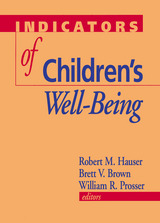 Indicators of Children's Well-Being
Robert M. Hauser
Russell Sage Foundation, 1997 The search for reliable information on the well-being of America's young is vital to designing programs to improve their lives. Yet social scientists are concerned that many measurements of children's physical and emotional health are inadequate, misleading, or outdated, leaving policymakers ill-informed. Indicators of Children's Well-Being is an ambitious inquiry into current efforts to monitor children from the prenatal period through adolescence. Working with the most up-to-date statistical sources, experts from multiple disciplines assess how data on physical development, education, economic security, family and neighborhood conditions, and social behavior are collected and analyzed, what findings they reveal, and what improvements are needed to create a more comprehensive and policy-relevant system of measurement. Today's climate of welfare reform has opened new possibilities for program innovation and experimentation, but it has also intensified the need for a clearly defined and wide-ranging empirical framework to pinpoint where help is needed and what interventions will succeed. Indicators of Children's Well-Being emphasizes the importance of accurate studies that address real problems. Essays on children's material well-being show why income data must be supplemented with assessments of housing, medical care, household expenditure, food consumption, and education. Other contributors urge refinements to existing survey instruments such as the Census and the Current Population Survey. The usefulness of records from human service agencies, child welfare records, and juvenile court statistics is also evaluated.
Indicators of Social Change: Concepts and Measurements
Eleanor Bernert Sheldon
Russell Sage Foundation, 1968 Includes many original contributions by an assembly of distinguished social scientists. They set forth the main features of a changing American society: how its organization for accomplishing major social change has evolved, and how its benefits and deficits are distributed among the various parts of the population. Theoretical developments in the social sciences and the vast impact of current events have contributed to a resurgence of interest in social change; in its causes, measurement, and possible prediction. These essays analyze what we know, and examine what we need to know in the study, prediction, and possible control of social change.
Indicators of Trends in American Education
Abbott Lamoyne Ferriss
Russell Sage Foundation, 1969 Assembles, collates, and analyzes data bearing on trends in American education. The author presents the basic data on school enrollment, retention, and attainment, indicating changes in the educational characteristics of the population and comparable time-series statistics on teachers and school finances reflecting change within the school system itself. Dr. Ferriss then relates these data to a statement of educational goals set some ten years ago, utilizing the data to provide an assessment of progress toward those goals.
Indicators of Trends in the Status of American Women
Abbott Lamoyne Ferriss
Russell Sage Foundation, 1971 Assembles, collates, and analyzes data bearing on trends in American education. The author presents the basic data on school enrollment, retention, and attainment, indicating changes in the educational characteristics of the population and comparable time-series statistics on teachers and school finances reflecting change within the school system itself. Dr. Ferriss then relates these data to a statement of educational goals set some ten years ago, utilizing the data to provide an assessment of progress toward those goals.
 Indie Cinema Online
Sarah E.S. Sinwell
Rutgers University Press, 2020 Indie Cinema Online investigates the changing nature of contemporary American independent cinema in an era of media convergence. Focusing on the ways in which modes of production, distribution, and exhibition are shifting with the advent of online streaming, simultaneous release strategies, and web series, this book analyzes sites such as SundanceTV, YouTube, Netflix, Hulu, and other online spaces as a means of redefining independent cinema in a digital era. Analyzing the intersections among cinema studies, cultural studies, and new media studies within contemporary convergence culture, author Sarah E.S. Sinwell looks at sites of media convergence that are often ignored within most studies of digital media. Emphasizing the ways in which the forms and technologies of media culture have changed during the age of convergence, this book analyzes contemporary production, distribution, and exhibition practices as a means of examining the changing meanings of independent cinema within digital culture.
 Indie, Inc.: Miramax and the Transformation of Hollywood in the 1990s
By Alisa Perren
University of Texas Press, 2012 During the 1990s, films such as sex, lies, and videotape, The Crying Game, Pulp Fiction, Good Will Hunting, and Shakespeare in Love earned substantial sums at the box office along with extensive critical acclaim. A disproportionate number of these hits came from one company: Miramax. Indie, Inc. surveys Miramax’s evolution from independent producer-distributor to studio subsidiary, chronicling how one company transformed not just the independent film world but the film and media industries more broadly. As Alisa Perren illustrates, Miramax’s activities had an impact on everything from film festival practices to marketing strategies, talent development to awards campaigning. Case studies of key films, including The Piano, Kids, Scream, The English Patient, and Life Is Beautiful, reveal how Miramax went beyond influencing Hollywood business practices and motion picture aesthetics to shaping popular and critical discourses about cinema during the 1990s. Indie, Inc. does what other books about contemporary low-budget cinema have not—it transcends discussions of “American indies” to look at the range of Miramax-released genre films, foreign-language films, and English-language imports released over the course of the decade. The book illustrates that what both the press and scholars have typically represented as the “rise of the American independent” was in fact part of a larger reconfiguration of the media industries toward niche-oriented products.
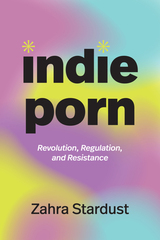 Indie Porn: Revolution, Regulation, and Resistance
Zahra Stardust
Duke University Press, 2024 In Indie Porn, Zahra Stardust examines the motivations and interventions of independent porn producers as they navigate criminal laws, risk-averse platforms, discriminatory algorithms, and rampant piracy. Herself a porn performer and participant, Stardust takes readers behind the scenes, offering intimate insights into this sociopolitical movement. She finds politicians who watch porn in parliament, protesters leading face-sitting demonstrations, sex workers making COVID-safe pornography, and artists reverse-engineering porn detection software. Against the backdrop of a global gig economy, Stardust documents the promises of indie porn to democratize content, revolutionize production, and redistribute wealth while outlining the fantasies of regulators, whose illusions of what porn is and does foreclose possibilities for transformation. Inevitably, as these paradigms collide, porn producers engage in creative tactics to hustle for survival and visibility, from ethical certification to law reform, sometimes reproducing hierarchies of stigma themselves. By highlighting how porn stigma is bound up with intersecting oppressions, Stardust identifies these junctions as coalitional opportunities for changing social relationships to sex, work, and capitalism.
The Indies Enterprise
Erik Orsenna
Haus Publishing, 2011 The Columbus brothers worked relentlessly for eight years to prepare the voyage Christopher dreamed of: the search for the passage to the Indies, Cipango and the Empire of the Great Khan. Bartolomeo tells the story from the very outset; he is his brother's accomplice and the main witness to the events leading to the Indies Enterprise.
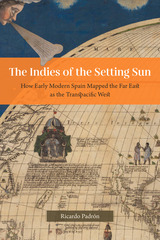 The Indies of the Setting Sun: How Early Modern Spain Mapped the Far East as the Transpacific West
Ricardo Padrón
University of Chicago Press, 2020 Padrón reveals the evolution of Spain’s imagining of the New World as a space in continuity with Asia.
Narratives of Europe’s westward expansion often tell of how the Americas came to be known as a distinct landmass, separate from Asia and uniquely positioned as new ground ripe for transatlantic colonialism. But this geographic vision of the Americas was not shared by all Europeans. While some imperialists imagined North and Central America as undiscovered land, the Spanish pushed to define the New World as part of a larger and eminently flexible geography that they called las Indias, and that by right, belonged to the Crown of Castile and León. Las Indias included all of the New World as well as East and Southeast Asia, although Spain’s understanding of the relationship between the two areas changed as the realities of the Pacific Rim came into sharper focus. At first, the Spanish insisted that North and Central America were an extension of the continent of Asia. Eventually, they came to understand East and Southeast Asia as a transpacific extension of their empire in America called las Indias del poniente, or the Indies of the Setting Sun.
The Indies of the Setting Sun charts the Spanish vision of a transpacific imperial expanse, beginning with Balboa’s discovery of the South Sea and ending almost a hundred years later with Spain’s final push for control of the Pacific. Padrón traces a series of attempts—both cartographic and discursive—to map the space from Mexico to Malacca, revealing the geopolitical imaginations at play in the quest for control of the New World and Asia.
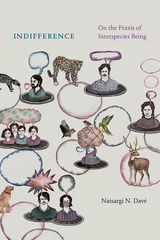 Indifference: On the Praxis of Interspecies Being
Naisargi N. Davé
Duke University Press, 2023 In Indifference, Naisargi N. Davé examines the complex worlds of animalists and animalism in India. Through ethnographic fieldwork with animal healers, animal activists, farmers, laborers, transporters, and animals themselves, and moving across animal shelters and dairy farms to city streets and abattoirs, Davé shows how human-animal relations often manifest through care and violence. More surprisingly, what Davé also finds animating interspecies relationality in India is an ethic of indifference---that is, an orientation of mutual regard rather than curiosity, love, desire, or animus. For Davé, indifference is a respect for others in their otherness that allows human and nonhuman animals to flourish in immanent encounters. Indifference, then, becomes the basis for an interspecies ethics and a method of care and practice in everyday life. With indifference, Davé describes both a mode of relationality in the world and a scholarly approach: seeking what is possible when we approach ethico-political concepts with indifference rather than commitment or antagonism. Moments of indifference, Davé contends, offer the promise of otherwise worlds.
Indifferent Cities
Ángel García
Tupelo Press, 2025 Poems exploring the push and pull of migration and immigration, familial archive, and regional history.
Through one state to another, from one country to the next Indifferent Cities traverses both distance and time to reconcile the most confounding reality of family: our people, sometimes, are the people we know least. Utilizing forms such as ekphrasis and epistolary, the collection sources photographs, postcards, and official documents as well as rumor, suspicion, and supposition to uncover the consequences, by choice or circumstance, of migration and immigration between Mexico and the United States across four generations.
Surveying the terrain of what one knows and does not know, what one inherits and disinherits, Indifferent Cities wrestles with every departure, each arrival, and the author’s inevitable return to determine where and to who he belongs.
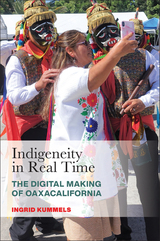 Indigeneity in Real Time: The Digital Making of Oaxacalifornia
Ingrid Kummels
Rutgers University Press, 2023 Long before the COVID-19 crisis, Mexican Indigenous peoples were faced with organizing their lives from afar, between villages in the Oaxacan Sierra Norte and the urban districts of Los Angeles, as a result of unauthorized migration and the restrictive border between Mexico and the United States. By launching cutting-edge Internet radio stations and multimedia platforms and engaging as community influencers, Zapotec and Ayuujk peoples paved their own paths to a transnational lifeway during the Trump era. This meant adapting digital technology to their needs, setting up their own infrastructure, and designing new digital formats for re-organizing community life in all its facets—including illness, death and mourning, collective celebrations, sport tournaments, and political meetings—across vast distances. Author Ingrid Kummels shows how mediamakers and users in the Sierra Norte villages and in Los Angeles created a transborder media space and aligned time regimes. By networking from multiple places, they put into practice a communal way of life called Comunalidad and an indigenized American Dream—in real time.
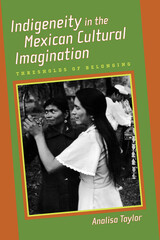 Indigeneity in the Mexican Cultural Imagination: Thresholds of Belonging
Analisa Taylor
University of Arizona Press, 2009 Since the end of the Mexican Revolution in 1917, the state has engaged in vigorous campaign to forge a unified national identity. Within the context of this effort, Indians are at once both denigrated and romanticized. Often marginalized, they are nonetheless subjects of constant national interest. Contradictory policies highlighting segregation, assimilation, modernization, and cultural preservation have alternately included and excluded Mexico’s indigenous population from the state’s self-conscious efforts to shape its identity. Yet, until now, no single book has combined the various elements of this process to provide a comprehensive look at the Indian in Mexico’s cultural imagination. Indigeneity in the Mexican Cultural Imagination offers a much-needed examination of this fickle relationship as it is seen through literature, ethnography, film and art.
The book focuses on representations of indigenous peoples in post-revolutionary literary and intellectual history by examining key cultural texts. Using these analyses as a foundation, Analisa Taylor links her critique to national Indian policy, rights, and recent social movements in Southern Mexico. In addition, she moves beyond her analysis of indigenous peoples in general to take a gendered look at indigenous women ranging from the villainized Malinche to the highly romanticized and sexualized Zapotec women of the Isthmus of Tehuantepec.
The contradictory treatment of the Indian in Mexico’s cultural imagination is not unique to that country alone. Rather, the situation there is representative of a phenomenon seen throughout the world. Though this book addresses indigeneity in Mexico specifically, it has far-reaching implications for the study of indigenaety across Latin America and beyond. Much like the late Edward Said’s Orientalism, this book provides a glimpse at the very real effects of literary and intellectual discourse on those living in the margins of society.
This book’s interdisciplinary approach makes it an essential foundation for research in the fields of anthropology, history, literary critique, sociology, and cultural studies. While the book is ideal for a scholarly audience, the accessible writing and scope of the analysis make it of interest to lay audiences as well. It is a must-read for anyone seeking a deeper understanding of the politics of indigeneity in Mexico and beyond.
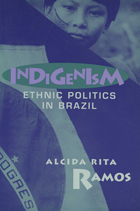 Indigenism: Ethnic Politics In Brazil
Alcida Rita Ramos
University of Wisconsin Press, 1998 Indigenous people comprise only 0.2% of Brazil's population, yet occupy a prominent role in the nation's consciousness. In her important and passionate new book, anthropologist Alcida Ramos explains this irony, exploring Indian and non-Indian attitudes about interethnic relations. Ramos contends that imagery about indigenous people reflects an ambivalence Brazil has about itself as a nation, for Indians reveal Brazilians’ contradiction between their pride in ethnic pluralism and desire for national homogeneity.
Based on her more than thirty years of fieldwork and activism on behalf of the Yanomami Indians, Ramos explains the complex ideology called indigenism. She evaluates its meaning through the relations of Brazilian Indians with religious and lay institutions, non-governmental organizations, official agencies such as the National Indian Foundation as well as the very discipline of anthropology. Ramos not only examines the imagery created by Brazilians of European descent—members of the Catholic church, government officials, the army and the state agency for Indian affairs—she also scrutinizes Indians' own self portrayals used in defending their ethnic rights against the Brazilian state.
Ramos’ thoughtful and complete analysis of the relation between indigenous people of Brazil and the state will be of great interest to lawmakers and political theorists, environmental and civil rights activists, developmental specialists and policymakers, and those concerned with human rights in Latin America.
 The Indigenization of Pali Meters in Thai Poetry: Mis Sea#87
Thomas Hudak
Ohio University Press, 1990 During the Ayutthaya period in Thailand (1350-1767), a group of meters based upon specific types and arrangements of syllables became a significant part of the Thai literary corpus. Known as chan in Thai literature, these meters, and the stanzas created from them, were adapted and transformed so that they corresponded in structure to other Thai verse forms. Although still used in compositions today, these meters reached their greatest popularity during the mid and late Ayutthaya period and the late nineteenth to early twentieth centuries.
This study of the Thai chan meters contends that Thai linguistic constraints and poetic principles determined the transformation of the Pali meters and stanzas into their Thai counterparts. Disproving the frequent claims that the old chan compositions ignored the sequencing of the particular syllable types required by the meters, the author determines why the meters became popular only during certain eras and just what the aesthetic conditions were that nurtured the use of the meters.
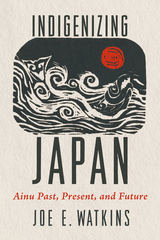 Indigenizing Japan: Ainu Past, Present, and Future
Joe E. Watkins
University of Arizona Press, 2025 In Indigenizing Japan, archaeologist Joe E. Watkins provides a comprehensive look at the rich history and cultural resilience of the Ainu, the Indigenous people of Hokkaido, Japan, tracing their journey from ancient times to their contemporary struggles for recognition.
Relaying the deep history of the islands of Japan, Watkins tells the archaeological story from the earliest arrivals some 40,000 years ago to 16,000 years ago when local cultures began utilizing pottery and stone tools. About 2,300 years ago, another group of people immigrated from the Korean peninsula into the Japanese archipelago, bringing wet rice agriculture with them. They intermarried with the people who were there, forming the basis of the contemporary Japanese majority culture. As the Japanese state developed on the central Islands of Honshu, Ryukyu, and Shikoku, the people of Hokkaido continued developing along a different trajectory with minimal interaction with the mainland until colonization in the mid-nineteenth century, when the people known as the Ainu came under Japanese governmental policy.
Watkins’s insightful analysis highlights the Ainu’s enduring spirit and their resurgence as part of the global Indigenous movement. Key events such as the 1997 Nibutani Dam case and the 2007 recognition of the Ainu as Japan’s Indigenous people are explored in depth, showcasing the Ainu’s ongoing fight for cultural preservation and self-determination. By situating the Ainu’s experiences within broader global colonial histories, Indigenizing Japan underscores the shared struggles and resilience of Indigenous communities worldwide.
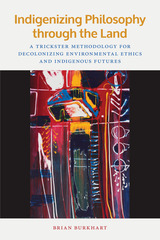 Indigenizing Philosophy through the Land: A Trickster Methodology for Decolonizing Environmental Ethics and Indigenous Futures
Brian Burkhart
Michigan State University Press, 2019 Land is key to the operations of coloniality, but the power of the land is also the key anticolonial force that grounds Indigenous liberation. This work is an attempt to articulate the nature of land as a material, conceptual, and ontological foundation for Indigenous ways of knowing, being, and valuing. As a foundation of valuing, land forms the framework for a conceptualization of Indigenous environmental ethics as an anticolonial force for sovereign Indigenous futures. This text is an important contribution in the efforts to Indigenize Western philosophy, particularly in the context of settler colonialism in the United States. It breaks significant ground in articulating Indigenous ways of knowing and valuing to Western philosophy—not as artifact that Western philosophy can incorporate into its canon, but rather as a force of anticolonial Indigenous liberation. Ultimately, Indigenizing Philosophy through the Land shines light on a possible road for epistemically, ontologically, and morally sovereign Indigenous futures.
 Indigenomicon: American Indians, Video Games, and the Structures of Dispossession
Jodi A. Byrd
Duke University Press, 2025 Settler colonial studies and Indigenous studies are often assumed to be the same intellectual project. In Indigenomicon, Jodi A. Byrd examines the differences between the two fields by bringing video game studies and Indigenous studies into conversation with Black studies, queer studies, and Indigenous feminist critique. Byrd theorizes “the image of the law of the Indigenous” as structuring dispossession in games including Assassin’s Creed, Animal Crossing, BioShock Infinite, and Demon Souls. They demonstrate how games and play might reveal histories of slavery, genocide, and theft of Indigenous lands even as their structures obscure Indigenous spatial and embodied practices that prioritize relationships with land, water, plants, and spirits. With ground and relationality defined as key concepts, Byrd centers Indigenous visions of dystopias to reveal how game spaces encode settler structures of governance even as the design of games might yet provide vital modes of resistance to Indigenous erasure.
Indigenous Activism in the Midwest: Refusal, Resurgence, and Resisting Settler Colonialism
Margret McCue-Enser
Michigan State University Press, 2025 In Indigenous Activism in the Midwest: Refusal, Resurgence, and Resisting Settler Colonialism, Margret McCue-Enser examines how Minnesota Indigenous activists use public memory sites to interrupt and challenge the dominant narrative of place. She explores how Indigenous activism reveals and disrupts material, discursive, and performative rhetorics of settler colonialism. This work cultivates the ground between rhetorical studies of place and space and Indigenous studies in which place is central to Indigeneity and activism. Using largely in situ analysis and drawing on Indigenous and rhetorical scholarship as well as Indigenous and mainstream press, the analysis focuses on sites such as an outdoor art installation, a historic settlers’ village, centennial and sesquicentennial farms, and a celebrated military fort.
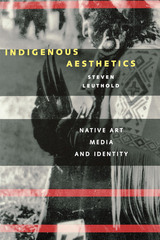 Indigenous Aesthetics: Native Art, Media, and Identity
By Steven Leuthold
University of Texas Press, 1998 What happens when a Native or indigenous person turns a video camera on his or her own culture? Are the resulting images different from what a Westernized filmmaker would create, and, if so, in what ways? How does the use of a non-Native art-making medium, specifically video or film, affect the aesthetics of the Native culture? These are some of the questions that underlie this rich study of Native American aesthetics, art, media, and identity. Steven Leuthold opens with a theoretically informed discussion of the core concepts of aesthetics and indigenous culture and then turns to detailed examination of the work of American Indian documentary filmmakers, including George Burdeau and Victor Masayesva, Jr. He shows how Native filmmaking incorporates traditional concepts such as the connection to place, to the sacred, and to the cycles of nature. While these concepts now find expression through Westernized media, they also maintain continuity with earlier aesthetic productions. In this way, Native filmmaking serves to create and preserve a sense of identity for indigenous people.
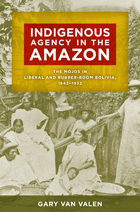 Indigenous Agency in the Amazon: The Mojos in Liberal and Rubber-Boom Bolivia, 1842–1932
Gary Van Valen
University of Arizona Press, 2013 The largest group of indigenous people in the Bolivian Amazon, the Mojos, has coexisted with non-Natives since the late 1600s, when they accepted Jesuit missionaries into their homeland, converted to Catholicism, and adapted their traditional lifestyle to the conventions of mission life. Nearly two hundred years later they faced two new challenges: liberalism and the rubber boom. White authorities promoted liberalism as a way of modernizing the region and ordered the dismantling of much of the social structure of the missions. The rubber boom created a demand for labor, which took the Mojos away from their savanna towns and into the northern rain forests.
Gary Van Valen postulates that as ex-mission Indians who lived on a frontier, the Mojos had an expanded capacity to adapt that helped them meet these challenges. Their frontier life provided them with the space and mind-set to move their agricultural plots and cattle herds, join independent indigenous groups, or move to Brazil. Their mission history gave them the experience they needed to participate in the rubber export economy and the politics of white society. Van Valen argues that the indigenous Mojos also learned how to manipulate liberal discourse to their advantage. He demonstrates that the Mojos were able to survive the rubber boom, claim the right of equality promised by the liberal state, and preserve important elements of the culture they inherited from the missions.
 Indigenous Alliance Making: Histories of Agency in Colonial Lowland South America
James Andrew Whitaker and Mark Harris
University of Arizona Press, 2025 During the colonial and postcolonial eras, local people in lowland South America experienced exploitation from outsiders. But as new kinds of societies emerged from engagements between outside and Indigenous communities, Indigenous Amazonians formed strategic alliances to defend livelihoods, territory, and symbolic values, as well as to curb exploitation, predation, and threats.
The contributors in Indigenous Alliance Making bring together historical analyses with anthropological investigations to explore the organizational patterns, goals, and strategies through which Indigenous people have intentionally created various alliances, partnerships, and similar relations with outsiders in lowland South America. Emphasizing class, ethnicity, gender, and race, the chapters bring new dimensions to understanding a vital but understudied region.
Through missions, war, and broader conflict, as well as marriage and kinship, local people aimed to maintain control even as personal and collective transformations unfolded. This volume explores the formation of diverse historical relations across regional societies within past and contemporary contexts and contributes to a growing historiographical turn among anthropologists and historians that foregrounds agency in past and present understandings of Indigenous peoples’ engagements with others in lowland South America. Contributors
Marta Amoroso
Elisa Frühauf Garcia
Mark Harris
Kris Lane
Camila Loureiro Dias
Cecilia McCallum
Gary Van Valen
Aparecida Vilaça
James Andrew Whitaker
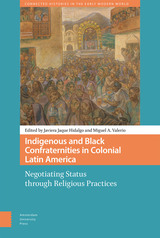 Indigenous and Black Confraternities in Colonial Latin America: Negotiating Status through Religious Practices
Javiera Jaque Hidalgo
Amsterdam University Press, 2022 Employing a transregional and interdisciplinary approach, this volume explores indigenous and black confraternities –or lay Catholic brotherhoods– founded in colonial Spanish America and Brazil between the sixteenth and eighteenth century. It presents a varied group of cases of religious confraternities founded by subaltern subjects, both in rural and urban spaces of colonial Latin America, to understand the dynamics and relations between the peripheral and central areas of colonial society, underlying the ways in which colonialized subjects navigated the colonial domain with forms of social organization and cultural and religious practices. The book analyzes indigenous and black confraternal cultural practices as forms of negotiation and resistance shaped by local devotional identities that also transgressed imperial religious and racial hierarchies. The analysis of these practices explores the intersections between ethnic identity and ritual devotion, as well as how the establishment of black and indigenous religious confraternities carried the potential to subvert colonial discourse.
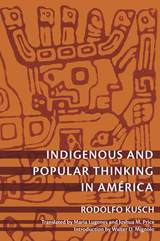 Indigenous and Popular Thinking in América
Rodolfo Kusch
Duke University Press, 2010 Originally published in Mexico in 1970, Indigenous and Popular Thinking in América is the first book by the Argentine philosopher Rodolfo Kusch (1922–79) to be translated into English. At its core is a binary created by colonization and the devaluation of indigenous practices and cosmologies: an opposition between the technologies and rationalities of European modernity and the popular mode of thinking, which is deeply tied to Indian ways of knowing and being. Arguing that this binary cuts through América, Kusch seeks to identify and recover the indigenous and popular way of thinking, which he contends is dismissed or misunderstood by many urban Argentines, including leftist intellectuals. Indigenous and Popular Thinking in América is a record of Kusch's attempt to immerse himself in the indigenous ways of knowing and being. At first glance, his methodology resembles ethnography. He speaks with and observes indigenous people and mestizos in Peru, Bolivia, and Argentina. He questions them about their agricultural practices and economic decisions; he observes rituals; he asks women in the market the meaning of indigenous talismans; he interviews shamans; he describes the spatial arrangement and the contents of shrines, altars, and temples; and he reproduces diagrams of archaeological sites, which he then interprets at length. Yet he does not present a "them" to a putative "us." Instead, he offers an inroad to a way of thinking and being that does not follow the logic or fit into the categories of Western social science and philosophy. In his introduction, Walter D. Mignolo discusses Kusch's work and its relation to that of other twentieth-century intellectuals, Argentine history, and contemporary scholarship on the subaltern and decoloniality.
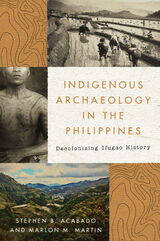 Indigenous Archaeology in the Philippines: Decolonizing Ifugao History
Stephen B. Acabado and Marlon M. Martin
University of Arizona Press, 2022 Dominant historical narratives among cultures with long and enduring colonial experiences often ignore Indigenous histories. This erasure is a response to the colonial experiences. With diverse cultures like those in the Philippines, dominant groups may become assimilationists themselves. Collaborative archaeology is an important tool in correcting the historical record. In the northern Philippines, archaeological investigations in Ifugao have established more recent origins of the Cordillera Rice Terraces, which were once understood to be at least two thousand years old. This new research not only sheds light on this UNESCO World Heritage site but also illuminates how collaboration with Indigenous communities is critical to understanding their history and heritage.
Indigenous Archaeology in the Philippines highlights how collaborative archaeology and knowledge co-production among the Ifugao, an Indigenous group in the Philippines, contested (and continue to contest) enduring colonial tropes. Stephen B. Acabado and Marlon M. Martin explain how the Ifugao made decisions that benefited them, including formulating strategies by which they took part in the colonial enterprise, exploiting the colonial economic opportunities to strengthen their sociopolitical organization, and co-opting the new economic system. The archaeological record shows that the Ifugao successfully resisted the Spanish conquest and later accommodated American empire building.
This book illustrates how descendant communities can take control of their history and heritage through active collaboration with archaeologists. Drawing on the Philippine Cordilleran experiences, the authors demonstrate how changing historical narratives help empower peoples who are traditionally ignored in national histories.
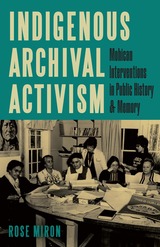 Indigenous Archival Activism: Mohican Interventions in Public History and Memory
Rose Miron
University of Minnesota Press, 2024 Who has the right to represent Native history?
The past several decades have seen a massive shift in debates over who owns and has the right to tell Native American history and stories. For centuries, non-Native actors have collected, stolen, sequestered, and gained value from Native stories and documents, human remains, and sacred objects. However, thanks to the work of Native activists, Native history is now increasingly being repatriated back to the control of tribes and communities. Indigenous Archival Activism takes readers into the heart of these debates by tracing one tribe’s fifty-year fight to recover and rewrite their history. Rose Miron tells the story of the Stockbridge-Munsee Mohican Nation and their Historical Committee, a group of mostly Mohican women who have been collecting and reorganizing historical materials since 1968. She shows how their work is exemplary of how tribal archives can be used strategically to shift how Native history is accessed, represented, written and, most importantly, controlled. Based on a more than decade-long reciprocal relationship with the Stockbridge-Munsee Mohican Nation, Miron’s research and writing is shaped primarily by materials found in the tribal archive and ongoing conversations and input from the Stockbridge-Munsee Historical Committee. As a non-Mohican, Miron is careful to consider her own positionality and reflects on what it means for non-Native researchers and institutions to build reciprocal relationships with Indigenous nations in the context of academia and public history, offering a model both for tribes undertaking their own reclamation projects and for scholars looking to work with tribes in ethical ways.
 Indigenous Archives: The Maya Diaspora and Mobile Cultural Production
Floridalma Boj Lopez
Duke University Press, 2026 Indigenous Archives analyzes the modes through which young Guatemalan Mayas in Los Angeles and Guatemala make sense of and respond to transnational structures of settler colonialism. Drawing on in-depth analysis of cultural production and interviews with Guatemalan Maya youth and young adults, Floridalma Boj Lopez examines how Mayas in diaspora craft and circulate narratives about their experiences across borders. Citing a more active practice of “archives in formation,” Boj Lopez depicts Indigenous archives as a cross-generational, collective conversation rooted in memory, survival, and cultural expression where Indigenous cultural practices and artifacts move, adapt, and assert their presence in the contemporary. Indigenous Archives invites readers to consider Indigeneity as a process, lived experience, and historical perspective, rather than as a static identity, and shows how extending analysis across borders is critical to understanding Latinidad and Indigeneity.
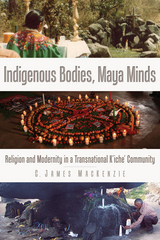 Indigenous Bodies, Maya Minds: Religion and Modernity in a Transnational K'iche' Community
C. James MacKenzie
University Press of Colorado, 2016 Indigenous Bodies, Maya Minds examines tension and conflict over ethnic and religious identity in the K’iche’ Maya community of San Andrés Xecul in the Guatemalan Highlands and considers how religious and ethnic attachments are sustained and transformed through the transnational experiences of locals who have migrated to the United States. Author C. James MacKenzie explores the relationship among four coexisting religious communities within Highland Maya villages in contemporary Guatemala—costumbre, traditionalist religion with a shamanic substrate; “Enthusiastic Christianity,” versions of Charismaticism and Pentecostalism; an “inculturated” and Mayanized version of Catholicism; and a purified and antisyncretic Maya Spirituality—with attention to the modern and nonmodern worldviews that sustain them. He introduces a sophisticated set of theories to interpret both traditional religion and its relationship to other contemporary religious options, analyzing the relation among these various worldviews in terms of the indigenization of modernity and the various ways modernity can be apprehended as an intellectual project or an embodied experience. Indigenous Bodies, Maya Minds investigates the way an increasingly plural religious landscape intersects with ethnic and other identities. It will be of interest to Mesoamerican and Mayan ethnographers, as well as students and scholars of cultural anthropology, indigenous cultures, globalization, and religion.
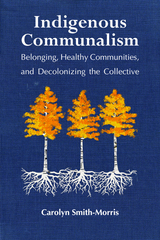 Indigenous Communalism: Belonging, Healthy Communities, and Decolonizing the Collective
Carolyn Smith-Morris
Rutgers University Press, 2020 From a grandmother’s inter-generational care to the strategic and slow consensus work of elected tribal leaders, Indigenous community builders perform the daily work of culture and communalism. Indigenous Communalism conveys age-old lessons about culture, communalism, and the universal tension between the individual and the collective. It is also a critical ethnography challenging the moral and cultural assumptions of a hyper-individualist, twenty-first century global society.
Told in vibrant detail, the narrative of the book conveys the importance of communalism as a value system present in all human groups and one at the center of Indigenous survival. Carolyn Smith-Morris draws on her work among the Akimel O'odham and the Wiradjuri to show how communal work and culture help these communities form distinctive Indigenous bonds. The results are not only a rich study of Indigenous relational lifeways, but a serious inquiry to the continuing acculturative atmosphere that Indigenous communities struggle to resist. Recognizing both positive and negative sides to the issue, she asks whether there is a global Indigenous communalism. And if so, what lessons does it teach about healthy communities, the universal human need for belonging, and the potential for the collective to do good?
 Indigenous Critical Reflections on Traditional Ecological Knowledge
Lara A. Jacobs
Oregon State University Press, 2025 With more than fifty contributors, Indigenous Critical Reflections on Traditional Ecological Knowledge offers important perspectives by Indigenous Peoples on Traditional Ecological Knowledge and Indigenous value systems. The book aims to educate and inspire readers about the importance of decolonizing how Indigenous Knowledges are considered and used outside of Native communities. By including the work of Indigenous storytellers, poets, and scholars from around the globe, editor Lara Jacobs and chapter authors effectively explore the Indigenous value systems—relationships, reciprocity, and responsibility—that are fundamental to Indigenous Knowledge systems and cultures. Indigenous languages and positionality statements are featured for each of the contributors to frame their cultural and geographical background and to allow each Indigenous voice to lead discussions and contribute critical discourse to the literature on Indigenous Knowledges and value systems. By creating space for each of these individual voices, this volume challenges colonial extraction norms and highlights the importance of decolonial methods in understanding and protecting Indigenous Knowledges. Indigenous Critical Reflections on Traditional Ecological Knowledge is an essential resource for students, academics, members of Tribal, state, and federal governments, Indigenous communities, and non-Indigenous allies as well as a valuable addition to environmental and Indigenous studies collections.
Contributors include: Melinda M. Adams, Joe Anderson, Coral Avery, Andrew Kalani Carlson, Kathryn Champagne, Brandie Makeba Cross, Joanna M. DeMeyer, Jonathan James Fisk, Pat Gonzales-Rogers, Celina Gray, Rhode Grayson, Zena Greenawald, Jennifer Grenz, Joy Harjo, Mandi Harris, Jessica Hernandez, Victor Hernandez, David Iniguez, Michelle M. Jacob, Lara A. Jacobs, Lydia L. Jennings, Eileen Jimenez, Stephanie Kelley, David G. Lewis, Tomás A. Madrigal, Tara McAllister, Lauren Wendelle Yowelunh McLester-Davis, Angeles Mendoza, Kat Milligan-McClellan, Todd A. Mitchell swəlítub, Don Motanic, ‘Alohi Nakachi, Kaikea Nakachi, Kobe , Natachu, Ululani Kekahiliokalani Brigitte Russo Oana, Jennifer R. O’Neal, Lily Painter, Britt Postoak, Leasi Vanessa Lee Raymond, Anamaq Margaret H. C. Rudolf, Oral Saulters, Sam Schimmel, Paulette Steeves, Joni Tobacco, Angelo Villagomez, Vivi Vold, Margaret Palaghicon Von Rotz, Luhui Whitebear, Joseph Gazing Wolf, Monique Wynecoop, and Cherry YEW Yamane.
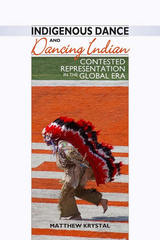 Indigenous Dance and Dancing Indian: Contested Representation in the Global Era
Matthew Krystal
University Press of Colorado, 2020 Focusing on the enactment of identity in dance, Indigenous Dance and Dancing Indian is a cross-cultural, cross-ethnic, and cross-national comparison of indigenous dance practices. Considering four genres of dance in which indigenous people are represented--K'iche Maya traditional dance, powwow, folkloric dance, and dancing sports mascots--the book addresses both the ideational and behavioral dimensions of identity. Each dance is examined as a unique cultural expression in individual chapters, and then all are compared in the conclusion, where striking parallels and important divergences are revealed. Ultimately, Krystal describes how dancers and audiences work to construct and consume satisfying and meaningful identities through dance by either challenging social inequality or reinforcing the present social order. Detailed ethnographic work, thorough case studies, and an insightful narrative voice make Indigenous Dance and Dancing Indian a substantial addition to scholarly literature on dance in the Americas. It will be of interest to scholars of Native American studies, social sciences, and performing arts.
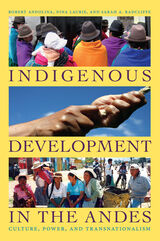 Indigenous Development in the Andes: Culture, Power, and Transnationalism
Robert Andolina, Nina Laurie, and Sarah A. Radcliffe
Duke University Press, 2009 As indigenous peoples in Latin America have achieved greater prominence and power, international agencies have attempted to incorporate the agendas of indigenous movements into development policymaking and project implementation. Transnational networks and policies centered on ethnically aware development paradigms have emerged with the goal of supporting indigenous cultures while enabling indigenous peoples to access the ostensible benefits of economic globalization and institutionalized participation. Focused on Bolivia and Ecuador, Indigenous Development in the Andes is a nuanced examination of the complexities involved in designing and executing “culturally appropriate” development agendas. Robert Andolina, Nina Laurie, and Sarah A. Radcliffe illuminate a web of relations among indigenous villagers, social movement leaders, government officials, NGO workers, and staff of multilateral agencies such as the World Bank. The authors argue that this reconfiguration of development policy and practice permits Ecuadorian and Bolivian indigenous groups to renegotiate their relationship to development as subjects who contribute and participate. Yet it also recasts indigenous peoples and their cultures as objects of intervention and largely fails to address fundamental concerns of indigenous movements, including racism, national inequalities, and international dependencies. Andean indigenous peoples are less marginalized, but they face ongoing dilemmas of identity and agency as their fields of action cross national boundaries and overlap with powerful institutions. Focusing on the encounters of indigenous peoples with international development as they negotiate issues related to land, water, professionalization, and gender, Indigenous Development in the Andes offers a comprehensive analysis of the diverse consequences of neoliberal development, and it underscores crucial questions about globalization, governance, cultural identity, and social movements.
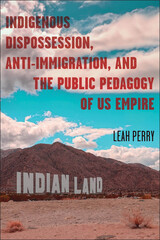 Indigenous Dispossession, Anti-Immigration, and the Public Pedagogy of US Empire
Leah Perry
Ohio State University Press, 2024 From the founding of the United States, enduringly consequential debates over Indigeneity and immigration have occurred on the battlefield and in Congress, in courtrooms, at territorial borders, and in mainstream culture. In Indigenous Dispossession, Anti-Immigration, and the Public Pedagogy of US Empire, Leah Perry traces the ways that the US created its empire through public pedagogies—which she defines as policy and media discourses—surrounding Indigenous dispossession, gendered state violence, and racialized immigration. These pedagogies have propelled the expansion of US empire, including the redrawing of the US as a neoliberal democracy. Perry argues that by changing the discourse around gender, race, immigration, and Indigeneity, the United States has continued its imperial project through different eras, always predicated on Indigenous dispossession.
In exploring crucial components of empire, such as welfare, eugenics, disability, sexual violence, foodways, queerness, and policing, Perry interrogates violence against Indigenous peoples and against immigrants, examining these not independently—as is so often the case—but as co-constitutive. Indigenous Dispossession, Anti-Immigration, and the Public Pedagogy of US Empire thus intervenes in and fills a gap in immigration studies, Indigenous studies, race and ethnic studies, gender and sexuality studies, and US history.
 Indigenous Ecocinema: Decolonizing Media Environments
Salma Monani
West Virginia University Press, 2024 Introducing the concepts of d-ecocinema and d-ecocinema criticism, Monani expands the purview of ecocinema studies and not only brings attention to a thriving Indigenous cinema archive but also argues for a methodological approach that ushers Indigenous intellectual voices front and center in how we theorize this archive. Its case-study focus on Canada, particularly the work emanating from the imagineNATIVE Film + Media Arts Festival in Toronto—a nationally and internationally recognized hub in Indigenous cinema networks—provides insights into pan-Indigenous and Nation-specific contexts of Indigenous ecocinema.
This absorbing text is the first book-length exploration foregrounding the environmental dimensions of cinema made by Indigenous peoples, including a particularly fascinating discussion on how Indigenous cinema’s ecological entanglements are a crucial and complementary aspect of its agenda of decolonialism.
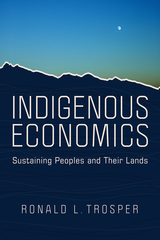 Indigenous Economics: Sustaining Peoples and Their Lands
Ronald L. Trosper
University of Arizona Press, 2022 What does “development” mean for Indigenous peoples? Indigenous Economics lays out an alternative path showing that conscious attention to relationships among humans and the natural world creates flourishing social-ecological economies.
Economist Ronald L. Trosper draws on examples from North and South America, Aotearoa/New Zealand, and Australia to argue that Indigenous worldviews centering care and good relationships provide critical and sustainable economic models in a world under increasing pressure from biodiversity loss and climate change. He explains the structure of relational Indigenous economic theory, providing principles based on his own and others’ work with tribal nations and Indigenous communities. Trosper explains how sustainability is created at every level when relational Indigenous economic theory is applied—micro, meso, and macro.
Good relationships support personal and community autonomy, replacing the individualism/collectivism dichotomy with relational leadership and entrepreneurship. Basing economies on relationships requires changing governance from the top-down approaches of nation-states and international corporations; instead, each community creates its own territorial relationships, creating plurinational relational states. This book offers an important alternative to classic economic theory. In Indigenous Economics, support for Indigenous communities’ development and Indigenous peoples’ well-being go hand-in-hand. Publication of this book is made possible in part by the Alfred P. Sloan Foundation Program in Public Understanding of Science.
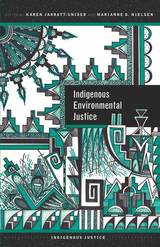 Indigenous Environmental Justice
Edited by Karen Jarratt-Snider and Marianne O. Nielsen
University of Arizona Press, 2020 This volume clearly distinguishes Indigenous environmental justice (IEJ) from the broader idea of environmental justice (EJ) while offering detailed examples from recent history of environmental injustices that have occurred in Indian Country. With connections to traditional homelands being at the heart of Native identity, environmental justice is of heightened importance to Indigenous communities. Not only do irresponsible and exploitative environmental policies harm the physical and financial health of Indigenous communities, they also cause spiritual harm by destroying land held in a place of exceptional reverence for Indigenous peoples.
With focused essays on important topics such as the uranium mining on Navajo and Hopi lands, the Dakota Access Pipeline dispute on the Standing Rock Indian Reservation, environmental cleanup efforts in Alaska, and many other pertinent examples, this volume offers a timely view of the environmental devastation that occurs in Indian Country. It also serves to emphasize the importance of self-determination and sovereignty in victories of Indigenous environmental justice.
The book explores the ongoing effects of colonization and emphasizes Native American tribes as governments rather than ethnic minorities. Combining elements of legal issues, human rights issues, and sovereignty issues, Indigenous Environmental Justice creates a clear example of community resilience in the face of corporate greed and state indifference.
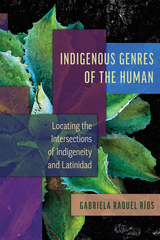 Indigenous Genres of the Human: Locating the Intersections of Indigeneity and Latinidad
Gabriela Raquel Ríos
University of Arizona Press, 2026 In this work, scholar Gabriela Raquel Ríos considers how Latina/o/x communities engage in the ethical reclamation of indigeneity. Through case studies that include testimonios and other Indigenous storytelling practices, Ríos reveals how cultural logics of colonization continue to shape—and often constrain—understandings of indigeneity across Latin America and in the United States.
Addressing different genres of human and what contemporary indigeneity and reclaiming indigeneity looks like across Latin American contexts, chapters in this work examine digital bruja poetry, Aymara women’s Lucha Libre in Bolivia, Raramuri dance in Mexico, and Indigenous Khipu in the Andes. The author weaves her own story of being from southern Texas and traveling to Mexico throughout the book.
Bridging Sylvia Wynter’s theory of “genres of the human” with critical Latinx indigeneity studies, Chicana/o/x studies, decolonial theory, and rhetorical new materialisms, this book challenges readers to rethink what it means to be human, Indigenous, and Chicanx in the wake of colonial violence. Rather than reinforcing binaries defined by settler colonialism, Ríos proposes a framework that centers community knowledge and grounded practices. Her work opens space for dialogue, listening, and healing, emphasizing that reclaiming indigeneity requires attention to the stories, movements, and rhetorical practices that emerge from within communities themselves.
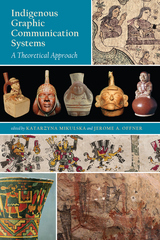 Indigenous Graphic Communication Systems: A Theoretical Approach
Katarzyna Mikulksa
University Press of Colorado, 2019 Indigenous Graphic Communication Systems challenges the adequacy of Western academic views on what writing is and explores how they can be expanded by analyzing the sophisticated graphic communication systems found in Central Mesoamerica and Andean South America.
By examining case studies from across the Americas, the authors pursue an enhanced understanding of Native American graphic communication systems and how the study of graphic expression can provide insight into ancient cultures and societies, expressed in indigenous words. Focusing on examples from Central Mexico and the Andes, the authors explore the overlap among writing, graphic expression, and orality in indigenous societies, inviting reevaluation of the Western notion that writing exists only to record language (the spoken chain of speech) as well as accepted beliefs of Western alphabetized societies about the accuracy, durability, and unambiguous nature of their own alphabetized texts. The volume also addresses the rapidly growing field of semasiography and relocates it more productively as one of several underlying operating principles in graphic communication systems.
Indigenous Graphic Communication Systems reports new results and insights into the meaning of the rich and varied content of indigenous American graphic expression and culture as well as into the societies and cultures that produce them. It will be of great interest to Mesoamericanists, students, and scholars of anthropology, archaeology, art history, ancient writing systems, and comparative world history.
The research for and publication of this book have been supported in part by the National Science Centre of Poland (decision no. NCN-KR-0011/122/13) and the Houston Museum of Natural Science.
Contributors:
Angélica Baena Ramírez, Christiane Clados, Danièle Dehouve, Stanisław Iwaniszewski, Michel R. Oudijk, Katarzyna Szoblik, Loïc Vauzelle, Gordon Whittaker, Janusz Z. Wołoszyn, David Charles Wright-Carr
Indigenous Health and Justice
Edited by Karen Jarratt-Snider and Marianne O. Nielsen
University of Arizona Press, 2024 Indigenous communities are practicing de facto sovereignty to resolve public health issues that are a consequence of settler colonialism. This work delves into health and justice through a range of topics and examples and demonstrates the resilience of Indigenous communities.
 Indigenous Heritage and Identity of the Last Elephant Catchers in Northeast Thailand
Alisa Santikarn
Amsterdam University Press, 2025 In 2019, when Mew Salangam passed away at 91, newspapers across Thailand described him as belonging to the “last generation of elephant doctors.” Mew was a member of the Kui Ajiang community in Thailand, an Indigenous group living in the Northeast known for catching elephants. Sometime beginning in the 1950s, this practice gradually came to an end.
Indigenous Heritage and Identity of the Last Elephant Catchers in Northeast Thailand examines how the end of elephant catching has affected the heritage and identity of the Kui Ajiang, offering an analysis that calls for close attention to the broader currents of Thai history and the development of Thai environmental and cultural heritage policies. Furthermore, the term Authorised Environmental Discourse (AED) is introduced in tandem with Laurajane Smith’s Authorised Heritage Discourse (AHD) to portray how heritage embedded in nature and culture reflects impacts of political authority and how a community responds to threats of loss and challenges to the authenticity of its traditions.
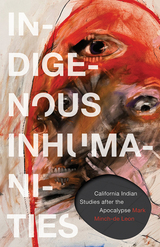 Indigenous Inhumanities: California Indian Studies after the Apocalypse
Mark Minch-de Leon
University of Minnesota Press, 2025 Reclaiming power and prophecy through California Indian intellectual resurgence and anticolonial resistance
Mark Minch-de Leon explores the anticolonial dimensions of California Indian intellectual and cultural resurgence in the aftermath of apocalypse in this compelling reexamination of Indigenous art, literature, and theory. Centering on a reinterpretation of the Ghost Dance, a ceremony first practiced in the nineteenth century, as a collective demonstration of prophecy and resilience, Indigenous Inhumanities envisions an expanded poetics of resistance through a reconfigured relationship to death and the dead. By dismantling the colonial frameworks of inclusion, recognition, and representation that reinforce settler-state power, Minch-de Leon shows how storytelling can be reclaimed as both research and as a tool for decolonization. Taking up critical issues that the state has used to discipline California Indian relations to ancestors, such as the politics of human remains repatriation and the discourse around California Indian genocide, Minch-de Leon centers Indigenous knowledge and social systems while challenging legal and political definitions of violence, power, and the human. Rich case studies showcase the evocative art of Frank Day, the poetry of Tommy Pico, and the writings of Deborah Miranda, highlighting how these creators advance Indigenous theory and disrupt settler categories. By refusing reconciliation and embracing Indigenous frameworks of radical relationality and the “inhuman” (what lies outside of human control), Minch-de Leon presents a bold vision of Indigenous antihumanist survival and resurgence. Indigenous Inhumanities illuminates the path toward decolonial futures by following the radical turn the ancestors made toward the powers of the dead to bring an end to the colonial world. Retail e-book files for this title are screen-reader friendly with images accompanied by short alt text and/or extended descriptions.
 Indigenous (In)Justice: Human Rights Law and Bedouin Arabs in the Naqab/Negev
Ahmad Amara
Harvard University Press, 2013 The indigenous Bedouin Arab population in the Naqab/Negev desert in Israel has experienced a history of displacement, intense political conflict, and cultural disruption, along with recent rapid modernization, forced urbanization, and migration. This volume of essays highlights international, national, and comparative law perspectives and explores the legal and human rights dimensions of land, planning, and housing issues, as well as the economic, social, and cultural rights of indigenous peoples. Within this context, the essays examine the various dimensions of the “negotiations” between the Bedouin Arab population and the State of Israel.
Indigenous (In)Justice locates the discussion of the Naqab/Negev question within the broader Israeli-Palestinian conflict and within key international debates among legal scholars and human rights advocates, including the application of the Declaration on the Rights of Indigenous Peoples, the formalization of traditional property rights, and the utility of restorative and reparative justice approaches. Leading international scholars and professionals, including the current United Nations Special Rapporteur on Violence against Women and the former United Nations Special Rapporteur on the Rights of Indigenous Peoples, are among the contributors to this volume.
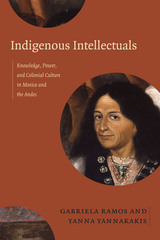 Indigenous Intellectuals: Knowledge, Power, and Colonial Culture in Mexico and the Andes
Gabriela Ramos and Yanna Yannakakis, eds.
Duke University Press, 2014 Via military conquest, Catholic evangelization, and intercultural engagement and struggle, a vast array of knowledge circulated through the Spanish viceroyalties in Mexico and the Andes. This collection highlights the critical role that indigenous intellectuals played in this cultural ferment. Scholars of history, anthropology, literature, and art history reveal new facets of the colonial experience by emphasizing the wide range of indigenous individuals who used knowledge to subvert, undermine, critique, and sometimes enhance colonial power. Seeking to understand the political, social, and cultural impact of indigenous intellectuals, the contributors examine both ideological and practical forms of knowledge. Their understanding of "intellectual" encompasses the creators of written texts and visual representations, functionaries and bureaucrats who interacted with colonial agents and institutions, and organic intellectuals.
Contributors. Elizabeth Hill Boone, Kathryn Burns, John Charles, Alan Durston, María Elena Martínez, Tristan Platt, Gabriela Ramos, Susan Schroeder, John F. Schwaller, Camilla Townsend, Eleanor Wake, Yanna Yannakakis
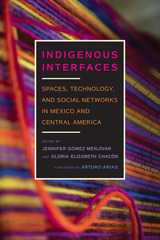 Indigenous Interfaces: Spaces, Technology, and Social Networks in Mexico and Central America
Edited by Jennifer Gómez Menjívar and Gloria Elizabeth Chacón; Foreword by Arturo Arias
University of Arizona Press, 2019 Cultural preservation, linguistic revitalization, intellectual heritage, and environmental sustainability became central to Indigenous movements in Mexico and Central America after 1992. While the emergence of these issues triggered important conversations, none to date have examined the role that new media has played in accomplishing their objectives.
Indigenous Interfaces provides the first thorough examination of indigeneity at the interface of cyberspace. Correspondingly, it examines the impact of new media on the struggles for self-determination that Indigenous peoples undergo in Mexico and Central America. The volume’s contributors highlight the fresh approaches that Mesoamerica’s Indigenous peoples have given to new media—from YouTubing Maya rock music to hashtagging in Zapotec. Together, they argue that these cyberspatial activities both maintain tradition and ensure its continuity. Without considering the implications of new technologies, Indigenous Interfaces argues, twenty-first-century indigeneity in Mexico and Central America cannot be successfully documented, evaluated, and comprehended.
Indigenous Interfaces rejects the myth that indigeneity and information technology are incompatible through its compelling analysis of the relationships between Indigenous peoples and new media. The volume illustrates how Indigenous peoples are selectively and strategically choosing to interface with cybertechnology, highlights Indigenous interpretations of new media, and brings to center Indigenous communities who are resetting modes of communication and redirecting the flow of information. It convincingly argues that interfacing with traditional technologies simultaneously with new media gives Indigenous peoples an edge on the claim to autonomous and sovereign ways of being Indigenous in the twenty-first century.
Contributors
Arturo Arias
Debra A. Castillo
Gloria Elizabeth Chacón
Adam W. Coon
Emiliana Cruz
Tajëëw Díaz Robles
Mauricio Espinoza
Alicia Ivonne Estrada
Jennifer Gómez Menjívar
Sue P. Haglund
Brook Danielle Lillehaugen
Paul Joseph López Oro
Rita M. Palacios
Gabriela Spears-Rico
Paul Worley
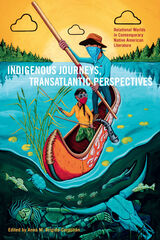 Indigenous Journeys, Transatlantic Perspectives: Relational Worlds in Contemporary Native American Literature
Anna M Brígido-Corachán
Michigan State University Press, 2023 Writing from a vantage point that respects tribal specificities and Indigenous sovereignty, the essays in this volume consider the relational place-worlds crafted by the Native American authors Louise Erdrich, Leanne Betasamosake Simpson, Gordon Henry Jr., Louis Owens, James Welch, Heid E. Erdrich, Ofelia Zepeda, and Simon J. Ortiz. Each is set in conversation with kindred writers and larger sociopolitical debates in the Americas, Africa, and Europe. The shared aim is to decolonize academic methodologies and disciplines across the Atlantic by tracing the creative, spiritual, and intellectual networks that Native writers have established with other communities at home and around the world. Key issues to arise include Native American/Indigenous theories and literary practices that center on relationality, the planetary turn, grounded normativity, trans-Indigeneity, transborder identities, movement, journeying, migration, multilingualism, genomic research, futurity, ecology, and justice.
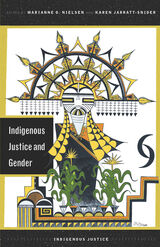 Indigenous Justice and Gender
Edited by Marianne O. Nielsen and Karen Jarratt-Snider
University of Arizona Press, 2023 This new volume offers a broad overview of topics pertaining to gender-related health, violence, and healing. Employing a strength-based approach (as opposed to a deficit model), the chapters address the resiliency of Indigenous women and two-spirit people in the face of colonial violence and structural racism.
The book centers the concept of “rematriation”—the concerted effort to place power, peace, and decision making back into the female space, land, body, and sovereignty—as a decolonial practice to combat injustice. Chapters include such topics as reproductive health, diabetes, missing and murdered Indigenous women, Indigenous women in the academy, and Indigenous women and food sovereignty.
As part of the Indigenous Justice series, this book provides an overview of the topic, geared toward undergraduate and graduate classes.
Contributors
Alisse Ali-Joseph
Michèle Companion
Mary Jo Tippeconnic Fox
Brooke de Heer
Lomayumtewa K. Ishii
Karen Jarratt-Snider
Lynn C. Jones
Anne Luna-Gordinier
Kelly McCue
Marianne O. Nielsen
Linda M. Robyn
Melinda S. Smith
Jamie Wilson
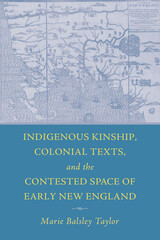 Indigenous Kinship, Colonial Texts, and the Contested Space of Early New England
Marie Balsley Taylor
University of Massachusetts Press, 2023 New England history often treats Indigenous people as minor or secondary actors within the larger colonial story. Focusing on those Native Americans who were sachems, or leaders, in local tribes when Europeans began arriving, Marie Balsley Taylor reframes stories of Indigenous and British interactions and illuminates the vital role that Indigenous kinship and diplomacy played in shaping the textual production of English colonial settlers in New England from the 1630s until King Philip’s War. Taylor argues that genres like the conversion narrative, the post-sermon question and answer session, and scientific treatise—despite being written in English for European audiences—were jointly created by Indigenous sachems and settlers to facilitate interaction within the contested space of colonial New England. Analyzing the writings of Thomas Shepard, John Eliot, John Winthrop Jr., and Daniel Gookin and the relationships these English Protestants formed with Indigenous leaders like Wequash, Cutshamekin, Cassacinamon, and Waban, this innovative study offers a new approach to early American literature—indicating that Native thought and culture played a profound role in shaping the words and deeds of colonial writers.
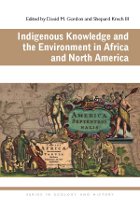 Indigenous Knowledge and the Environment in Africa and North America
David M. Gordon
Ohio University Press, 2012 Indigenous knowledge has become a catchphrase in global struggles for environmental justice. Yet indigenous knowledges are often viewed, incorrectly, as pure and primordial cultural artifacts. This collection draws from African and North American cases to argue that the forms of knowledge identified as “indigenous” resulted from strategies to control environmental resources during and after colonial encounters. At times indigenous knowledges represented a “middle ground” of intellectual exchanges between colonizers and colonized; elsewhere, indigenous knowledges were defined through conflict and struggle. The authors demonstrate how people claimed that their hybrid forms of knowledge were communal, religious, and traditional, as opposed to individualist, secular, and scientific, which they associated with European colonialism. Indigenous Knowledge and the Environment offers comparative and transnational insights that disturb romantic views of unchanging indigenous knowledges in harmony with the environment. The result is a book that informs and complicates how indigenous knowledges can and should relate to environmental policy-making. Contributors: David Bernstein, Derick Fay, Andrew H. Fisher, Karen Flint, David M. Gordon, Paul Kelton, Shepard Krech III, Joshua Reid, Parker Shipton, Lance van Sittert, Jacob Tropp, James L. A. Webb, Jr., Marsha Weisiger
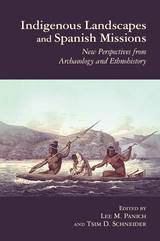 Indigenous Landscapes and Spanish Missions: New Perspectives from Archaeology and Ethnohistory
Edited by Lee M. Panich and Tsim D. Schneider
University of Arizona Press, 2014 Spanish missions in North America were once viewed as confining and stagnant communities, with native peoples on the margins of the colonial enterprise. Recent archaeological and ethnohistorical research challenges that notion. Indigenous Landscapes and Spanish Missions considers how native peoples actively incorporated the mission system into their own dynamic existence. The book, written by diverse scholars and edited by Lee M. Panich and Tsim D. Schneider, covers missions in the Spanish borderlands from California to Texas to Georgia.
Offering thoughtful arguments and innovative perspectives, the editors organized the book around three interrelated themes. The first section explores power, politics, and belief, recognizing that Spanish missions were established within indigenous landscapes with preexisting tensions, alliances, and belief systems. The second part, addressing missions from the perspective of indigenous inhabitants, focuses on their social, economic, and historical connections to the surrounding landscapes. The final section considers the varied connections between mission communities and the world beyond the mission walls, including examinations of how mission neophytes, missionaries, and colonial elites vied for land and natural resources.
Indigenous Landscapes and Spanish Missions offers a holistic view on the consequences of missionization and the active negotiation of missions by indigenous peoples, revealing cross-cutting perspectives into the complex and contested histories of the Spanish borderlands. This volume challenges readers to examine deeply the ways in which native peoples negotiated colonialism not just inside the missions themselves but also within broader indigenous landscapes. This book will be of interest to archaeologists, historians, tribal scholars, and anyone interested in indigenous encounters with colonial institutions.
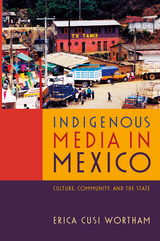 Indigenous Media in Mexico: Culture, Community, and the State
Erica Cusi Wortham
Duke University Press, 2013 In Indigenous Media in Mexico, Erica Cusi Wortham explores the use of video among indigenous peoples in Mexico as an important component of their social and political activism. Funded by the federal government as part of its "pluriculturalist" policy of the 1990s, video indígena programs became social processes through which indigenous communities in Oaxaca and Chiapas engendered alternative public spheres and aligned themselves with local and regional autonomy movements. Drawing on her in-depth ethnographic research among indigenous mediamakers in Mexico, Wortham traces their shifting relationship with Mexican cultural agencies; situates their work within a broader, hemispheric network of indigenous media producers; and complicates the notion of a unified, homogeneous indigenous identity. Her analysis of projects from community-based media initiatives in Oaxaca to the transnational Chiapas Media Project highlights variations in cultural identity and autonomy based on specific histories of marginalization, accommodation, and resistance.
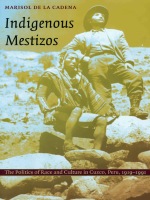 Indigenous Mestizos: The Politics of Race and Culture in Cuzco, Peru, 1919-1991
Marisol de la Cadena
Duke University Press, 2000 In the early twentieth century, Peruvian intellectuals, unlike their European counterparts, rejected biological categories of race as a basis for discrimination. But this did not eliminate social hierarchies; instead, it redefined racial categories as cultural differences, such as differences in education or manners. In Indigenous Mestizos Marisol de la Cadena traces the history of the notion of race from this turn-of-the-century definition to a hegemony of racism in Peru. De la Cadena’s ethnographically and historically rich study examines how indigenous citizens of the city of Cuzco have been conceived by others as well as how they have viewed themselves and places these conceptions within the struggle for political identity and representation. Demonstrating that the terms Indian and mestizo are complex, ambivalent, and influenced by social, legal, and political changes, she provides close readings of everyday concepts such as marketplace identity, religious ritual, grassroots dance, and popular culture, as well as of such common terms as respect, decency, and education. She shows how Indian has come to mean an indigenous person without economic and educational means—one who is illiterate, impoverished, and rural. Mestizo, on the other hand, has come to refer to an urban, usually literate, and economically successful person claiming indigenous heritage and participating in indigenous cultural practices. De la Cadena argues that this version of de-Indianization—which, rather than assimilation, is a complex political negotiation for a dignified identity—does not cancel the economic and political equalities of racism in Peru, although it has made room for some people to reclaim a decolonized Andean cultural heritage. This highly original synthesis of diverse theoretical arguments brought to bear on a series of case studies will be of interest to scholars of cultural anthropology, postcolonialism, race and ethnicity, gender studies, and history, in addition to Latin Americanists.
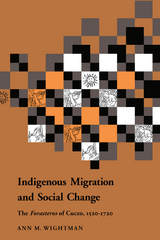 Indigenous Migration and Social Change: The Foresteros of Cuzco, 1570-1720
Ann M. Wightman
Duke University Press, 1990 Many observers in colonial Spanish America—whether clerical, governmental, or foreign—noted the large numbers of forasteros, or Indians who were not seemingly attached to any locality. These migrants, or “wanderers,” offended the bureaucratic sensibilities of the Spanish administration, as they also frustrated their tax and revenue efforts. Ann M. Wightman’s research on these early “undocumentals” in the Cuzco region of Peru reveals much of importance on Andean society and its adaptation and resistance to Spanish cultural and political hegemony. The book thereby informs our understanding of social change in the colonial period.
Wightman shows that the dismissal of the forasteros as marginalized rural poor is superficial at best, and through laborious and painstaking archival research she presents a clear picture of the transformation of traditional society as the native populations coped with the disruptions of the conquest—and in doing so, reveals the reciprocal adaptations of the colonial power. Her choice of Cuzco is particularly appropriate, as this was a “heartland” region crucial to both the Incan and Spanish empires. The questions addressed by Wightman are of great concern to current Andean ethnohistory, one of the liveliest areas of such research, and are sure to have an important impact.
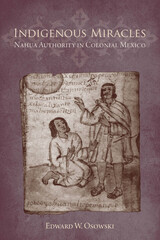 Indigenous Miracles: Nahua Authority in Colonial Mexico
Edward W. Osowski
University of Arizona Press, 2010 While King Carlos I of Spain struggled to suppress the Protestant Reformation in the Old World, the Spanish turned to New Spain to promote the Catholic cause, unimpeded by the presence of the “false” Old World religions. To this end, Osowski writes, the Spanish “saw indigenous people as necessary protagonists in the anticipated triumph of the faith.” As the conversion of the indigenous people of Mexico proceeded in earnest, Catholic ritual became the medium through which indigenous leaders and Spaniards negotiated colonial hegemony.
Indigenous Miracles is about how the Nahua elite of central Mexico secured political legitimacy through the administration of public rituals centered on miraculous images of Christ the King. Osowski argues that these images were adopted as community symbols and furthermore allowed Nahua leaders to “represent their own kingship,” protecting their claims to legitimacy. This legitimacy allowed them to act collectively to prevent the loss of many aspects of their culture. Osowski demonstrates how a shared religion admitted the possibility of indigenous agency and new ethnic identities.
Consulting both Nahuatl and Spanish sources, Osowski strives to fill a gap in the history of the Nahuas from 1760 to 1810, a momentous time when previously sanctioned religious practices were condemned by the viceroys and archbishops of the Bourbon royal dynasty. His approach synthesizes ethnohistory and institutional history to create a fascinating account of how and why the Nahuas protected the practices and symbols they had appropriated under Hapsburg rule. Ultimately, Osowski’s account contributes to our understanding of the ways in which indigenous agency was negotiated in colonial Mexico.
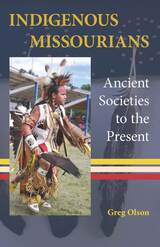 Indigenous Missourians: Ancient Societies to the Present
Greg Olson
University of Missouri Press, 2023 Winner of the 2024 Missouri Conference on History Book Award; the 2024 Missouri History Book Award; and Honoree for the 2024 Society of Midland Authors Award for History
The history of Indigenous people in present-day Missouri is far more nuanced, complex, and vibrant than the often-told tragic stories of conflict with white settlers and forced Indian removal would lead us to believe. In this path-breaking narrative, Greg Olson presents the Show Me State’s Indigenous past as one spanning twelve millennia of Native presence, resilience, and evolution. While previous Missouri histories have tended to include Indigenous people only during periods when they constituted a threat to the state’s white settlement, Olson shows us the continuous presence of Native people that includes the present day.
Beginning thousands of years before the state of Missouri existed, Olson recounts how centuries of inventiveness and adaptability enabled Native people to create innovations in pottery, agriculture, architecture, weaponry, and intertribal diplomacy. Olson also shows how the resilience of Indigenous people like the Osages allowed them to thrive as fur traders, even as settler colonialists waged an all-out policy of cultural genocide against them.
Though the state of Missouri claimed to have forced Indigenous people from its borders after the 1830s, Olson uses U.S. Census records and government rolls from the allotment period to show that thousands remained. In the end, he argues that, with a current population of 27,000 Indigenous people, Missouri remains very much a part of Indian Country, and that Indigenous history is Missouri history.
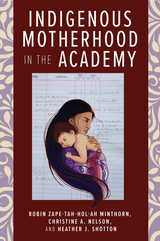 Indigenous Motherhood in the Academy
Robin Zape-tah-hol-ah Minthorn
Rutgers University Press, 2022 Indigenous Motherhood in the Academy highlights the experiences and narratives emerging from Indigenous mothers in the academy who are negotiating their roles in multiple contexts. The essays in this volume contribute to the broader higher education literature and the literature on Indigenous representation in the academy, filling a longtime gap that has excluded Indigenous women scholar voices. This book covers diverse topics such as the journey to motherhood, lessons through motherhood, acknowledging ancestors and grandparents in one’s mothering, how historical trauma and violence plague the past, and balancing mothering through the healing process. More specific to Indigenous motherhood in the academy is how culture and place impacts mothering (specifically, if Indigenous mothers are not in their traditional homelands as they raise their children), how academia impacts mothering, how mothering impacts scholarship, and how to negotiate loss and other complexities between motherhood and one’s role in the academy.
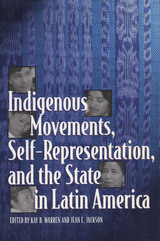 Indigenous Movements, Self-Representation, and the State in Latin America
Edited by Kay B. Warren and Jean E. Jackson
University of Texas Press, 2003 Throughout Latin America, indigenous peoples are responding to state violence and pro-democracy social movements by asserting their rights to a greater measure of cultural autonomy and self-determination. This volume's rich case studies of movements in Colombia, Guatemala, and Brazil weigh the degree of success achieved by indigenous leaders in influencing national agendas when governments display highly ambivalent attitudes about strengthening ethnic diversity. The contributors to this volume are leading anthropologists and indigenous activists from the United States and Latin America. They address the double binds of indigenous organizing and "working within the system" as well as the flexibility of political tactics used to achieve cultural goals outside the scope of state politics. The contributors answer questions about who speaks for indigenous communities, how indigenous movements relate to the popular left, and how conflicts between the national indigenous leadership and local communities play out in specific cultural and political contexts. The volume sheds new light on the realities of asymmetrical power relations and on the ways in which indigenous communities and their representatives employ Western constructions of subjectivity, alterity, and authentic versus counterfeit identity, as well as how they manipulate bureaucratic structures, international organizations, and the mass media to advance goals that involve distinctive visions of an indigenous future.
 Indigenous Narratives of Territory and Creation: Hemispheric Perspectives
Penelope Kelsey and Leila Gómez, special issue editors
Duke University Press, 2020 Indigenous activism in the Americas has long focused on the symbolic reclamation of land. Drawing on interdisciplinary perspectives, contributors to this issue explore narratives of territory and origin that provide a foundation for this political practice. The contributors study Indigenous-language stories from displaced communities, analyzing the meaning and power of these narratives in the context of diaspora and the struggle for land. Essays address topics including territorial struggle and environmentalism, Indigenous resistance to neoliberal policies of land dispossession, and alliances between academic and Indigenous knowledges and activisms. This issue brings together fruitful comparisons of theoretical frameworks and case studies in Indigenous studies across North and South America. Its contributors advance the process of returning to Indigenous knowledge, offering essential alternatives to Western epistemologies.
Contributors. Amber Meadow Adams, Alexandre Belmonte, Enrique Manuel Bernales Albites, Andrew Cowell, Ella Deloria, Leila Gómez, Sarah Hernandez, Penelope Kelsey, José Antonio Mazzotti, Javier Muñoz-Díaz, Craig Perez, Cheryl Savageau, Ángel Tuninetti, Christopher T. Vecsey
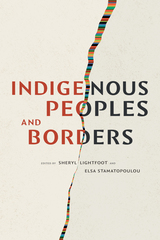 Indigenous Peoples and Borders
Sheryl Lightfoot and Elsa Stamatopoulou, editors
Duke University Press, 2024 The legacies of borders are far-reaching for Indigenous Peoples. This collection offers new ways of understanding borders by departing from statist approaches to territoriality. Bringing together the fields of border studies, human rights, international relations, and Indigenous studies, it features a wide range of voices from across academia, public policy, and civil society. The contributors explore the profound and varying impacts of borders on Indigenous Peoples around the world and the ways borders are challenged and worked around. From Bangladesh’s colonially imposed militarized borders to resource extraction in the Russian Arctic and along the Colombia-Ecuador border to the transportation of toxic pesticides from the United States to Mexico, the chapters examine sovereignty, power, and obstructions to Indigenous rights and self-determination as well as globalization and the economic impacts of borders. Indigenous Peoples and Borders proposes future action that is informed by Indigenous Peoples’ voices, needs, and advocacy.
Contributors. Tone Bleie, Andrea Carmen, Jacqueline Gillis, Rauna Kuokkanen, Elifuraha Laltaika, Sheryl Lightfoot, David Bruce MacDonald, Toa Elisa Maldonado Ruiz, Binalakshmi “Bina” Nepram, Melissa Z. Patel, Manoel B. do Prado Junior, Hana Shams Ahmed, Elsa Stamatopoulou, Liubov Suliandziga, Rodion Sulyandziga, Yifat Susskind, Erika M. Yamada
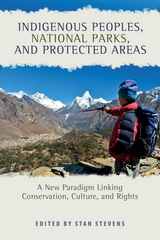 Indigenous Peoples, National Parks, and Protected Areas: A New Paradigm Linking Conservation, Culture, and Rights
Edited by Stan Stevens
University of Arizona Press, 2014 A vast number of national parks and protected areas throughout the world have been established in the customary territories of Indigenous peoples. In many cases these conservation areas have displaced Indigenous peoples, undermining their cultures, livelihoods, and self-governance, while squandering opportunities to benefit from their knowledge, values, and practices. This book makes the case for a paradigm shift in conservation from exclusionary, uninhabited national parks and wilderness areas to new kinds of protected areas that recognize Indigenous peoples’ conservation contributions and rights. It documents the beginnings of such a paradigm shift and issues a clarion call for transforming conservation in ways that could enhance the effectiveness of protected areas and benefit Indigenous peoples in and near tens of thousands of protected areas worldwide.
Indigenous Peoples, National Parks, and Protected Areas integrates wide-ranging, multidisciplinary intellectual perspectives with detailed analyses of new kinds of protected areas in diverse parts of the world. Eleven geographers and anthropologists contribute nine substantive fieldwork-based case studies. Their contributions offer insights into experience with new conservation approaches in an array of countries, including Australia, Canada, Guatemala, Honduras, Nepal, Nicaragua, Peru, South Africa, and the United States.
This book breaks new ground with its in-depth exploration of changes in conservation policies and practices—and their profound ramifications for Indigenous peoples, protected areas, and social reconciliation.
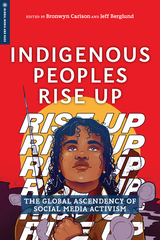 Indigenous Peoples Rise Up: The Global Ascendency of Social Media Activism
Bronwyn Carlson
Rutgers University Press, 2021 Indigenous Peoples Rise Up: The Global Ascendency of Social Media Activism illustrates the impact of social media in expanding the nature of Indigenous communities and social movements. Social media has bridged distance, time, and nation states to mobilize Indigenous peoples to build coalitions across the globe and to stand in solidarity with one another. These movements have succeeded and gained momentum and traction precisely because of the strategic use of social media. Social media—Twitter and Facebook in particular—has also served as a platform for fostering health, well-being, and resilience, recognizing Indigenous strength and talent, and sustaining and transforming cultural practices when great distances divide members of the same community.
Including a range of international indigenous voices from the US, Canada, Australia, Aotearoa (New Zealand) and Africa, the book takes an interdisciplinary approach, bridging Indigenous studies, media studies, and social justice studies. Including examples like Idle No More in Canada, Australian Recognise!, and social media campaigns to maintain Maori language, Indigenous Peoples Rise Up serves as one of the first studies of Indigenous social media use and activism.
Indigenous Perspective to Climate and Environment
Darren Parry
University of Utah Press, 2024 The lands and waters of the American West encountered by European colonizers were not “untouched” or “wild” as some have recorded, but rather the result of a broad range of Indigenous land and water management techniques. To assume that western-based scientific knowledge is superior to Indigenous wisdom can be a barrier to meaningful and lasting collaboration. We must work together if we are to heal the land that we have collectively sullied.
Indigenous Poetics
Inés Hernández-Ávila
Michigan State University Press, 2025 Indigenous Poetics is a collection of essays by contemporary Native American poets in the United States who explore how the genre helps to radically understand, contemplate, and realize something deeper about ourselves, our communities, and our worlds. The collection illuminates the creative process, identity, language, and the making of poetry. The contributors tell us, in their own words and on their own Indigenous terms, how they engage poetic expression as one would a tool, a teacher, a guide, a map, or a friend. Indigenous Poetics reveals poetry’s crucial role in the flourishing of Native American and Indigenous Studies.
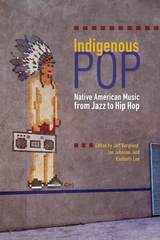 Indigenous Pop: Native American Music from Jazz to Hip Hop
Edited by Jeff Berglund, Jan Johnson, and Kimberli Lee
University of Arizona Press, 2016 Popular music compels, it entertains, and it has the power to attract and move audiences. With that in mind, the editors of Indigenous Pop showcase the contributions of American Indian musicians to popular forms of music, including jazz, blues, country-western, rock and roll, reggae, punk, and hip hop.
From Joe Shunatona and the United States Indian Reservation Orchestra to Jim Pepper, from Buffy Saint-Marie to Robbie Robertson, from Joy Harjo to Lila Downs, Indigenous Pop vividly addresses the importance of Native musicians and popular musical genres, establishing their origins and discussing what they represent.
Arranged both chronologically and according to popular generic forms, the book gives Indigenous pop a broad new meaning. In addition to examining the transitive influences of popular music on Indigenous expressive forms, the contributors also show ways that various genres have been shaped by what some have called the “Red Roots” of American-originated musical styles. This recognition of mutual influence extends into the ways of understanding how music provides methodologies for living and survival.
Each in-depth essay in the volume zeros in on a single genre and in so doing exposes the extraordinary whole of Native music. This book showcases the range of musical genres to which Native musicians have contributed and the unique ways in which their engagement advances the struggle for justice and continues age-old traditions of creative expression.
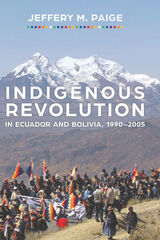 Indigenous Revolution in Ecuador and Bolivia, 1990–2005
Jeffery M. Paige
University of Arizona Press, 2020 Uprisings by indigenous peoples of Ecuador and Bolivia between 1990 and 2005 overthrew the five-hundred-year-old racial and class order inherited from the Spanish Empire. It started in Ecuador with the Great Indigenous Uprising, which was fought for cultural and economic rights. A few years later massive indigenous mobilizations began in Bolivia, culminating in 2005 with the election of Evo Morales, the first indigenous president. Jeffrey M. Paige, an internationally recognized authority on the sociology of revolutionary movements, interviewed forty-five indigenous leaders who were actively involved in the uprisings. The leaders recount how peaceful protest and electoral democracy paved the path to power. Through the interviews, we learn how new ideologies of indigenous socialism drew on the deep commonalities between the communal dreams of their ancestors and the modern ideology of democratic socialism. This new discourse spoke to the people most oppressed by both withering racism and neoliberal capitalism. Emphasizing mutual respect among ethnic groups (including the dominant Hispanic group), the new revolutionary dynamic proposes a communal worldview similar to but more inclusive than Western socialism because it adds indigenous cultures and nature in a spiritual whole. Although absent in the major revolutions of the past century, the themes of indigenous revolution—democracy, indigeneity, spirituality, community, and ecology—are critically important. Paige’s interviews present the powerful personal experiences and emotional intensity of the revolutionary leadership. They share the stories of mass mobilization, elections, and indigenous socialism that created a new form of twenty-first-century revolution with far-reaching applications beyond the Andes.
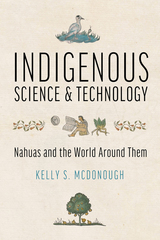 Indigenous Science and Technology: Nahuas and the World Around Them
Kelly S. McDonough
University of Arizona Press, 2024 This is a book about how Nahuas—native speakers of Nahuatl, the common language of the Aztec Empire and of more than 2.5 million Indigenous people today—have explored, understood, and explained the world around them in pre-invasion, colonial, and contemporary time periods. It is a deep dive into Nahua theoretical and practical inquiry related to the environment, as well as the dynamic networks in which Nahuas create, build upon, and share knowledges, practices, tools, and objects to meet social, political, and economic needs.
In this work, author Kelly S. McDonough addresses Nahua understanding of plants and animals, medicine and ways of healing, water and water control, alphabetic writing, and cartography. Interludes between the chapters offer short biographical sketches and interviews with contemporary Nahua scientists, artists, historians, and writers, accompanied by their photos. The book also includes more than twenty full-color images from sources including the Florentine Codex, a sixteenth-century collaboration between Indigenous and Spanish scholars considered the most comprehensive extant source on the pre-Hispanic and early colonial Aztec (Mexica) world.
In Mexico today, the terms “Indigenous” and “science and technology” are rarely paired together. When they are, the latter tend to be framed as unrecoverable or irreparably damaged pre-Hispanic traditions, relics confined to a static past. In Indigenous Science and Technology, McDonough works against such erroneous and racialized discourses with a focus on Nahua environmental engagements and relationalities, systems of communication, and cultural preservation and revitalization. Attention to these overlooked or obscured knowledges provides a better understanding of Nahua culture, past and present, as well as the entangled local and global histories in which they were—and are—vital actors.
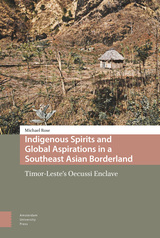 Indigenous Spirits and Global Aspirations in a Southeast Asian Borderland: Timor-Leste's Oecussi Enclave
Michael Rose
Amsterdam University Press, 2020 Over the past 40 years, life in Timor-Leste has changed radically. Before 1975 most of the population lived in highland villages, spoke local languages, and rarely used money. Today many have moved to peri-urban lowland settlements, and even those whose lives remain dominated by customary ways understand that those of their children will not. For the Atoni Pah Meto of Timor-Leste’s remote Oecussi Enclave, the world was neatly divided into two distinct categories: the meto (indigenous), and the kase (foreign). Now matters are less clear; the good things of the globalised world are pursued not through rejecting the meto ways of the village, or collapsing them into the kase, but through continual crossing between them. In this way, the people of Oecussi are able to identify in the struggles of lowland life, the comforting and often decisive presence of familiar highland spirits.
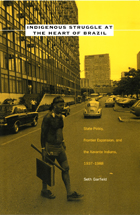 Indigenous Struggle at the Heart of Brazil: State Policy, Frontier Expansion, and the Xavante Indians, 1937–1988
Seth Garfield
Duke University Press, 2001 Indigenous Struggle at the Heart of Brazil examines the dynamic interplay between the Brazilian government and the Xavante Indians of central Brazil in the context of twentieth-century western frontier expansion and the state’s indigenous policy. Offering a window onto Brazilian developmental policy in Amazonia and the subsequent process of indigenous political mobilization, Seth Garfield bridges historical and anthropological approaches to reconsider state formation and ethnic identity in twentieth-century Brazil.
Garfield explains how state officials, eager to promote capital accumulation, social harmony, and national security on the western front, sought to delimit indigenous reserves and assimilate native peoples. Yet he also shows that state efforts to celebrate Indians as primordial Brazilians and nationalist icons simultaneously served to underscore and redefine ethnic difference. Garfield explores how various other social actors—elites, missionaries, military officials, intellectuals, international critics, and the Indians themselves—strove to remold this multifaceted project. Paying particular attention to the Xavante’s methods of engaging state power after experience with exile, territorial loss, and violence in the “white” world, Garfield describes how they emerged under military rule not as the patriotic Brazilians heralded by state propagandists but as a highly politicized ethnic group clamoring for its constitutional land rights and social entitlements.
Indigenous Struggle at the Heart of Brazil will interest not only historians and anthropologists but also those studying nationbuilding, Brazil, Latin America, comparative frontiers, race, and ethnicity.
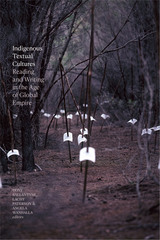 Indigenous Textual Cultures: Reading and Writing in the Age of Global Empire
Tony Ballantyne, Lachy Paterson, and Angela Wanhalla, editors
Duke University Press, 2020 As modern European empires expanded, written language was critical to articulations of imperial authority and justifications of conquest. For imperial administrators and thinkers, the non-literacy of “native” societies demonstrated their primitiveness and inability to change. Yet as the contributors to Indigenous Textual Cultures make clear through cases from the Pacific Islands, Australasia, North America, and Africa, indigenous communities were highly adaptive and created novel, dynamic literary practices that preserved indigenous knowledge traditions. The contributors illustrate how modern literacy operated alongside orality rather than replacing it. Reconstructing multiple traditions of indigenous literacy and textual production, the contributors focus attention on the often hidden, forgotten, neglected, and marginalized cultural innovators who read, wrote, and used texts in endlessly creative ways. This volume demonstrates how the work of these innovators played pivotal roles in reimagining indigenous epistemologies, challenging colonial domination, and envisioning radical new futures.
Contributors. Noelani Arista, Tony Ballantyne, Alban Bensa, Keith Thor Carlson, Evelyn Ellerman, Isabel Hofmeyr, Emma Hunter, Arini Loader, Adrian Muckle, Lachy Paterson, Laura Rademaker, Michael P. J. Reilly, Bruno Saura, Ivy T. Schweitzer, Angela Wanhalla
Indigenous Traditions and Ecology: The Interbeing of Cosmology and Community
John A. Grim
Harvard University Press, 2001 A new perspective on religions and the environment emerges from this collection. The authors, a diverse group of indigenous and non-native scholars and environmental activists, address compelling and urgent questions facing indigenous communities as they struggle with threats to their own sovereignty, increased market and media globalization, and the conservation of endangered bioregions.
Drawing attention to the pressures threatening indigenous peoples and ways of life, this volume describes modes of resistance and regeneration by which communities maintain a spiritual balance with larger cosmological forces while creatively accommodating current environmental, social, economic, and political changes.
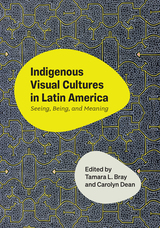 Indigenous Visual Cultures in Latin America: Seeing, Being, and Meaning
Edited by Tamara L. Bray and Carolyn Dean
University of Texas Press, 2026 Reframing the study of Indigenous visual culture, this volume explores how images and objects generate affect and relation in non-Western contexts, foregrounding alternative modes of material engagement and meaning-making. While traditional approaches to Indigenous visual culture have often centered on iconography and representation, this volume turns toward other ways that images and objects act in the world. Indigenous Visual Cultures in Latin America explores how material productions function not merely as signs that point elsewhere but as agents that help shape relationships, environments, and affective experience. Spanning Mesoamerica, the Andes, and Amazonia from 1500 BCE to the present, the chapters examine how meaning may reside in materials themselves; how making is a form of exchange between maker and matter; and how visual forms participate in configuring relations among humans, ancestors, deities, and place. These works are not passive containers of meaning, but charged presences—generative forces within ongoing worlds. Attuned to Indigenous ways of knowing and being, the volume invites readers to think beyond the frame, beyond the image, and beyond representation itself.
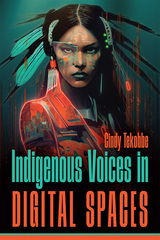 Indigenous Voices in Digital Spaces
Cindy Tekobbe
Utah State University Press, 2024 Indigenous Voices in Digital Spaces applies Indigenous frameworks and epistemologies to online cultural movements through four case studies, including hashtags, memes, cryptocurrency, and digital artistry, and develops decolonizing practices for digital rhetoric, online identity work, and digital literacy practices.
Tekobbe’s methods for analyzing and understanding Indigenous knowledges online center Indigenous storytelling and “thick” (broad, deep, and complex) Indigenous meaning-making. Employing this thickness to interpret Indigenous knowledge ways resists the settler-colonial logics that tend to flatten complex Indigenous concepts into one-note representations of racial stereotypes. Native Americans’ use of social media and digital platforms to support social movements uniquely constructs Indigenous identities as living, producing, and culture-making people, which confronts the commonplace, one-dimensional narrative that Indigenous North Americans either live in isolation or are people of history resigned to the long-forgotten past. Tekobbe’s methods are applicable to additional online research to break through Western paradigms of oppositional critique, the colonial power matrix embedded in hierarchical and taxonomical classification systems, and participant objectification.
Indigenous Voices in Digital Spaces offers new methodological and epistemological opportunities to explore digital communities and technologies, problematizing conventional Western critique. This book is useful to instructors in Indigenous studies, internet studies, digital literacies, cultural studies, and communications, as well as Indigenous and internet studies researchers.
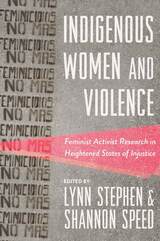 Indigenous Women and Violence: Feminist Activist Research in Heightened States of Injustice
Edited by Lynn Stephen and Shannon Speed
University of Arizona Press, 2021 Indigenous Women and Violence offers an intimate view of how settler colonialism and other structural forms of power and inequality created accumulated violences in the lives of Indigenous women. This volume uncovers how these Indigenous women resist violence in Mexico, Central America, and the United States, centering on the topics of femicide, immigration, human rights violations, the criminal justice system, and Indigenous justice. Taking on the issues of our times, Indigenous Women and Violence calls for the deepening of collaborative ethnographies through community engagement and performing research as an embodied experience. This book brings together settler colonialism, feminist ethnography, collaborative and activist ethnography, emotional communities, and standpoint research to look at the links between structural, extreme, and everyday violences across time and space.
Indigenous Women and Violence is built on engaging case studies that highlight the individual and collective struggles that Indigenous women face from the racial and gendered oppression that structures their lives. Gendered violence has always been a part of the genocidal and assimilationist projects of settler colonialism, and it remains so today. These structures—and the forms of violence inherent to them—are driving criminalization and victimization of Indigenous men and women, leading to escalating levels of assassination, incarceration, or transnational displacement of Indigenous people, and especially Indigenous women.
This volume brings together the potent ethnographic research of eight scholars who have dedicated their careers to illuminating the ways in which Indigenous women have challenged communities, states, legal systems, and social movements to promote gender justice. The chapters in this book are engaged, feminist, collaborative, and activism focused, conveying powerful messages about the resilience and resistance of Indigenous women in the face of violence and systemic oppression.
Contributors: R. Aída Hernández-Castillo, Morna Macleod, Mariana Mora, María Teresa Sierra, Shannon Speed, Lynn Stephen, Margo Tamez, Irma Alicia Velásquez Nimatuj
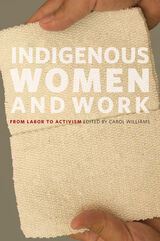 Indigenous Women and Work: From Labor to Activism
Edited by Carol Williams
University of Illinois Press, 2012 The essays in Indigenous Women and Work create a transnational and comparative dialogue on the history of the productive and reproductive lives and circumstances of Indigenous women from the late nineteenth century to the present in the United States, Australia, New Zealand/Aotearoa, and Canada. Surveying the spectrum of Indigenous women's lives and circumstances as workers, both waged and unwaged, the contributors offer varied perspectives on the ways women's work has contributed to the survival of communities in the face of ongoing tensions between assimilation and colonization. They also interpret how individual nations have conceived of Indigenous women as workers and, in turn, convert these assumptions and definitions into policy and practice. The essays address the intersection of Indigenous, women's, and labor history, but will also be useful to contemporary policy makers, tribal activists, and Native American women's advocacy associations. Contributors are Tracey Banivanua Mar, Marlene Brant Castellano, Cathleen D. Cahill, Brenda J. Child, Sherry Farrell Racette, Chris Friday, Aroha Harris, Faye HeavyShield, Heather A. Howard, Margaret D. Jacobs, Alice Littlefield, Cybèle Locke, Mary Jane Logan McCallum, Kathy M'Closkey, Colleen O'Neill, Beth H. Piatote, Susan Roy, Lynette Russell, Joan Sangster, Ruth Taylor, and Carol Williams.
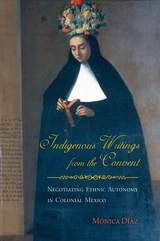 Indigenous Writings from the Convent: Negotiating Ethnic Autonomy in Colonial Mexico
Mónica Díaz
University of Arizona Press, 2010 Sometime in the 1740s, Sor María Magdalena, an indigenous noblewoman living in one of only three convents in New Spain that allowed Indians to profess as nuns, sent a letter to Father Juan de Altamirano to ask for his help in getting church prelates to exclude Creole and Spanish women from convents intended for indigenous nuns only. Drawing on this and other such letters—as well as biographies, sermons, and other texts—Mónica Díaz argues that the survival of indigenous ethnic identity was effectively served by this class of noble indigenous nuns.
While colonial sources that refer to indigenous women are not scant, documents in which women emerge as agents who actively participate in shaping their own identity are rare. Looking at this minority agency—or subaltern voice—in various religious discourses exposes some central themes. It shows that an indigenous identity recast in Catholic terms was able to be effectively recorded and that the religious participation of these women at a time when indigenous parishes were increasingly secularized lent cohesion to that identity.
Indigenous Writings from the Convent examines ways in which indigenous women participated in one of the most prominent institutions in colonial times—the Catholic Church—and what they made of their experience with convent life. This book will appeal to scholars of literary criticism, women’s studies, and colonial history, and to anyone interested in the ways that class, race, and gender intersected in the colonial world.
 Indignant Liberalism: Political Protest and Generational Change in El Salvador
Ellen Moodie
University of Texas Press, 2026 Documenting the rise and disillusionment of El Salvador’s postwar activists in the face of populist authoritarian politics. The conclusion of El Salvador’s long civil war, in 1992, was supposed to bring about equality and political freedom. Leftist insurgents laid down arms, and the government formally embraced liberal ideals. Yet today, El Salvador is ruled by an authoritarian president who came to power via unconstitutional means. What went wrong? Anthropologist and journalist Ellen Moodie embedded with indignados—young middle-class protestors, demanding that the government live up to its liberal commitments—to better understand the course of political change since the civil war. Yet the “post-postwar” generation is only the latest demographic disappointed with liberalism in practice. Their revolutionary predecessors responded to a twentieth-century “racial liberalism” that saw descendants of colonists “civilizing” Indigenous people while dispossessing them of lands and mobilizing them for labor. Today, the failure to make good on the promises of postwar liberalism has inspired robust support for strongman Nayib Bukele. Moodie argues that El Salvador’s case, though inflected by local concerns, is not unique. Rather, it is another stark demonstration of how liberalism’s imaginary social contract gives rise to populist authoritarianism.
 Indirect Action: Schizophrenia, Epilepsy, AIDS, and the Course of Health Activism
Lisa Diedrich
University of Minnesota Press, 2016 The experience of illness (both mental and physical) figures prominently in the critical thought and activism of the 1960s and 1970s, though it is largely overshadowed by practices of sexuality. Lisa Diedrich explores how and why illness was indeed so significant to the social, political, and institutional transformation beginning in the 1960s through the emergence of AIDS in the United States. A rich intervention—both theoretical and methodological, political and therapeutic—Indirect Action illuminates the intersection of illness, thought, and politics. Not merely a revision of the history of this time period, Indirect Action expands the historiographical boundaries through which illness and health activism in the United States have been viewed. Diedrich explores the multiplicity illness–thought–politics through an array of subjects: queering the origin story of AIDS activism by recalling its feminist history; exploring health activism and the medical experience; analyzing psychiatry and self-help movements; thinking ecologically about counterpractices of generalism in science and medicine; and considering the experience and event of epilepsy and the witnessing of schizophrenia. Indirect Action places illness in the leading role in the production of thought during the emergence of AIDS, ultimately showing the critical interconnectedness of illness and political and critical thought.
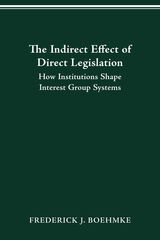 THE INDIRECT EFFECT OF DIRECT LEGISLATION: HOW INSTITUTIONS SHAPE INTEREST GROUP SYSTEMS
FREDERICK J BOEHMKE
Ohio State University Press, 2005 Frederick J. Boehmke's book makes explicit the many consequences—intended and unintended—of having direct legislation possible in a state. Many studies of the initiative process argue that it is a flawed process that rewards wealthy interests. While evidence to support this conclusion is often drawn from a number of high-profile, high-expenditure initiative campaigns, ballot campaigns are merely one consequence of the initiative process. The ability to propose legislation directly to the people fundamentally changes the process through which citizens are represented by organized interest groups, benefiting typically underrepresented interests.
To demonstrate this, the author models the incentives that the initiative process creates for interests to organize and for how they communicate their preferences to policy makers. Interests that represent a broader range of the public are found to gain the most from the option to propose initiatives, implying that the set of organized interests in initiative states should reflect this advantage. Ironically, an effect of direct legislation is to potentially increase the effectiveness of special interest lobbying in state legislatures—in a sense, the opposite of the direct control that gives direct legislation its theoretical appeal. Yet, the clear effect is one of empowering voices that traditionally had very little effect in the legislative process. If greater representation is the goal of direct legislation, it is a clear success, even though that success does not really come in the act of ballot initiatives itself.
 Indirect Light
Malachi Black
Four Way Books, 2024 Reliving the overdoses of beloved friends, Malachi Black closes this book’s opening poem with a resuscitating command: “Doctor, / turn back. One of us lives.” Indirect Light is a testament to and apologia for this assertion of vitality, each eponymous poem an elegy dedicated to one of Black’s dearly departed. Though this book mourns an irretrievable past, it wages war against amnesia, refusing to let death erase the vibrancy of their lives. These poems preserve “the breath we left beside us on the train tracks,” “the watery inscriptions of nearby dogwood branches / dipped in shade,” “our bookbags’ mouths / pouting open on our laps,” “our street-scabbed bodies / briefly tinseled in the sun.” Insofar as this collection returns to friends and kin to honor them by the indirect light of memory, it also seeks to memorialize the author’s personal experience of adolescence and addiction amidst the opioid epidemic. It is a lament for all that’s lost and a paean to the near misses and the just enough: a dim glow you can see by, a cup of coffee passed during NA, a prayer during detox to “be // as empty / as the sky” if floating means survival.
 Indirect Subjects: Nollywood's Local Address
Matthew H. Brown
Duke University Press, 2021 In Indirect Subjects, Matthew H. Brown analyzes the content of the prolific Nigerian film industry's mostly direct-to-video movies alongside local practices of production and circulation to show how screen media play spatial roles in global power relations. Scrutinizing the deep structural and aesthetic relationship between Nollywood, as the industry is known, and Nigerian state television, Brown tracks how several Nollywood films, in ways similar to both state television programs and colonial cinema productions, invite local spectators to experience liberal capitalism not only as a form of exploitation but as a set of expectations about the future. This mode of address, which Brown refers to as “periliberalism,” sustains global power imbalances by locating viewers within liberalism but distancing them from its processes and benefits. Locating the wellspring of this hypocrisy in the British Empire's practice of indirect rule, Brown contends that culture industries like Nollywood can sustain capitalism by isolating ordinary African people, whose labor and consumption fuel it, from its exclusive privileges.
 Indiscreet Fantasies: Iberian Queer Cinema
Andrés Lema-Hincapié
Bucknell University Press, 2021 Pedro Almodóvar may have helped put queer Iberian cinema on the map, but there are multitudes of LGBTQ filmmakers from Catalonia, Portugal, Castile, Galicia, and the Basque Country who have made the Peninsula one of the world’s most vital sources for queer film. Together, they have produced a cinema whose expressions of queer desire have challenged the region’s conservative religious and family values, while intervening in vital debates about politics, history, and nation. Indiscreet Fantasies is a unique collection that offers in-depth analyses of fifteen different films produced in the region over the past fifty years, each by a different director, from Narciso Ibáñez Serrador’s La residencia (The House That Screamed, 1969) to João Pedro Rodrigues’s O ornitólogo (The Ornithologist, 2016). Contributors examine how queer Iberian cinema has responded to historical trauma—from the AIDS crisis to the repressive and homophobic Franco regime—and explore how these films demonstrate a fluid understanding of sexuality, gender, and national identity. The result will give readers a new appreciation for the cultural diversity of Iberia and the richness of its thought-provoking queer cinema.
Published by Bucknell University Press. Distributed worldwide by Rutgers University Press.
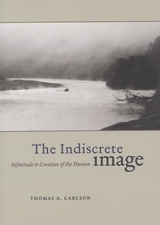 The Indiscrete Image: Infinitude and Creation of the Human
Thomas A. Carlson
University of Chicago Press, 2008 Humanity’s creative capacity has never been more unsettling than it is at our current moment, when it has ushered us into new technological worlds that challenge the very definition of “the human.” Those anxious to safeguard the human against techno-scientific threats often appeal to religious traditions to protect the place and dignity of the human. But how well do we understand both theological tradition and today’s technological culture? In The Indiscrete Image, Thomas A. Carlson challenges our common ideas about both, arguing instead that it may be humanity’s final lack of definition that first enables, and calls for, human creativity and its correlates—including technology, tradition, and their inextricable interplay within religious existence.
Framed in response to Martin Heidegger’s influential account of the relation between technological modernity and theological tradition, The Indiscrete Image builds an understanding of creativity as conditioned by insurmountable unknowing and incalculable possibility through alternative readings of Christian theological tradition and technological culture—and the surprising resonance between these two. Carlson concludes that the always ongoing work of world creation, tied essentially to human self-creation, implies neither an idol’s closure nor an icon’s transcendence, but the “indiscrete image” whose love makes possible—by keeping open—both the human and its world.
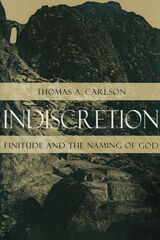 Indiscretion: Finitude and the Naming of God
Thomas A. Carlson
University of Chicago Press, 1998 How can one think and name an inconceivable and ineffable God? Christian mystics have approached the problem by speaking of God using "negative" language—devices such as grammatical negation and the rhetoric of "darkness" or "unknowing"—and their efforts have fascinated contemporary scholars. In this strikingly original work, Thomas A. Carlson reinterprets premodern approaches to God's ineffability and postmodern approaches to the mystery of the human subject in light of one another. The recent interest in mystical theological traditions, Carlson argues, is best understood in relation to contemporary philosophy's emphasis on the idea of human finitude and mortality.
Combining both historical research in theology (from Pseudo-Dionysius to Aquinas to Eckhart) and contemporary philosophical analysis (from Hegel and Nietzsche to Heidegger, Derrida, and Marion), Indiscretion will interest philosophers, theologians, and other scholars concerned with the possibilities and limits of language surrounding both God and human subjectivity.
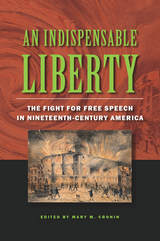 An Indispensable Liberty: The Fight for Free Speech in Nineteenth-Century America
Edited by Mary M. Cronin
Southern Illinois University Press, 2016 Most Americans today view freedom of speech as a bedrock of all other liberties, a defining feature of American citizenship. During the nineteenth century, the popular concept of American freedom of speech was still being formed. In An Indispensable Liberty: The Fight for Free Speech in Nineteenth-Century America, contributors examine attempts to restrict freedom of speech and the press during and after the Civil War.
The eleven essays that make up this collection show how, despite judicial, political, and public proclamations of support for freedom of expression, factors like tradition, gender stereotypes, religion, and fear of social unrest often led to narrow judicial and political protection for freedom of expression by people whose views upset the status quo. These views, expressed by abolitionists, suffragists, and labor leaders, challenged rigid cultural mores of the day, and many political and cultural leaders feared that extending freedom of expression to agitators would undermine society. The Civil War intensified questions about the duties and privileges of citizenship. After the war, key conflicts over freedom of expression were triggered by Reconstruction, suffrage, the Comstock Act, and questions about libel.
The volume’s contributors blend social, cultural, and intellectual history to untangle the complicated strands of nineteenth-century legal thought. By chronicling the development of modern-day notions of free speech, this timely collection offers both a valuable exploration of the First Amendment in nineteenth-century America and a useful perspective on the challenges we face today.
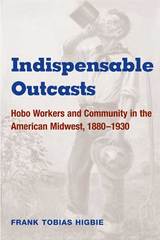 Indispensable Outcasts: Hobo Workers and Community in the American Midwest, 1880-1930
Frank Tobias Higbie
University of Illinois Press, 2003 Often overlooked in labor history, the hoboes who rode the rails in search of seasonal work nevertheless secured a place in the American imagination. Frank Tobias Higbie weaves together history, anthropology, gender studies, and literary analysis to reposition these workers at the center of Progressive Era debates over class, race, manly responsibility, community, and citizenship. Combining incisive cultural criticism with labor history, Higbie illustrates how these so-called marginal figures were in fact integral to communities and to cultural conflicts over class, masculinity, and sexuality. He draws from life histories, the investigations of social reformers, and the organizing materials of the Industrial Workers of the World to present a complex portrait of hobo life, from its often violent and dangerous working conditions to its ethic of “transient mutuality” that enabled survival and resistance on the road. Frank and compelling,Indispensable Outcasts examines hoboes within the sprawling story of American labor while meditating on writing history from the bottom up and the ways a fascination with personal narrative can color a historian's work.
The Indissolubility of Marriage and the Council of Trent
E. Christian Brugger
Catholic University of America Press, 2017 This important volume examines the Catholic Church’s doctrine on the indissolubility of marriage as taught by the 16th century Ecumenical Council of Trent (1545-1563). In the Council’s reply to Reformation challenges on the sacraments, it took up the ques
Individual and Community: Variations on a Theme in American Fiction
Kenneth H. Baldwin and David Kirby, eds.
Duke University Press, 1975 The contributors to Individual and Community attempt to illuminate aspects of the individual-community relationship. Though different in focus and approach, the essays themselves express a "community" of concern, a concern which includes not just the situations of characters in fictional worlds, but one which touches the relationship of both novelists and reader to a world of words.
The essays are intended to point to the continuity of an important theme in American fiction and to offer insight into the variety of philosophical and literary strategies utilized in significant works of significant authors in dealing with the question of the individual and the community.
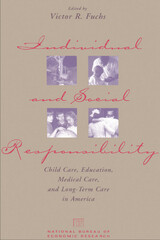 Individual and Social Responsibility: Child Care, Education, Medical Care, and Long-Term Care in America
Edited by Victor R. Fuchs
University of Chicago Press, 1995 Does government spend too little or too much on child care? How can education dollars be spent more efficiently? Should government's role in medical care increase or decrease? In this volume, social scientists, lawyers, and a physician explore the political, social, and economic forces that shape policies affecting human services.
Four in-depth studies of human-service sectors—child care, education, medical care, and long-term care for the elderly—are followed by six cross-sector studies that stimulate new ways of thinking about human services through the application of economic theory, institutional analysis, and the history of social policy.
The contributors include Kenneth J. Arrow, Martin Feldstein, Victor Fuchs, Alan M. Garber, Eric A. Hanushek, Christopher Jencks, Seymour Martin Lipset, Glenn Loury, Roger G. Noll, Paul M. Romer, Amartya Sen, and Theda Skocpol.
This timely study sheds important light on the tension between individual and social responsibility, and will appeal to economists and other social scientists and policymakers concerned with social policy issues.
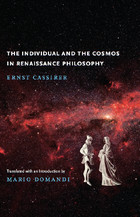 The Individual and the Cosmos in Renaissance Philosophy
Ernst Cassirer
University of Chicago Press, 2010 This provocative volume, one of the most important interpretive works on the philosophical thought of the Renaissance, has long been regarded as a classic in its field. Ernst Cassirer here examines the changes brewing in the early stages of the Renaissance, tracing the interdependence of philosophy, language, art, and science; the newfound recognition of individual consciousness; and the great thinkers of the period—from da Vinci and Galileo to Pico della Mirandola and Giordano Bruno. The Individual and the Cosmos in Renaissance Philosophy discusses the importance of fifteenth-century philosopher Nicholas Cusanus, the concepts of freedom and necessity, and the subject-object problem in Renaissance thought. “This fluent translation of a scholarly and penetrating original leaves little impression of an attempt to show that a ‘spirit of the age’ or ‘spiritual essence of the time’ unifies and expresses itself in all aspects of society or culture.”—Philosophy
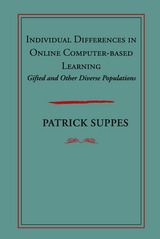 Individual Differences in Online Computer-based Learning: Gifted and Other Diverse Populations
Patrick Suppes
CSLI, 2013 In 1894 John Dewey established his experimental laboratory school at the University of Chicago, with a focus on teaching each student according to their individual differences. This concept indicated a shift away from the emphasis on communal, classroom teaching, which marked educational practices in the nineteenth century during the advent of widely available public education. With the introduction of computer-based online instruction in schools, curricula are able to be fully informed by individual difference, subtly and quickly tracking students’ progress. In these courses, teachers play the role of troubleshooters instead of lecturers. Individual Differences examines a large number of studies on computer-based and online instruction, with special attention paid to gifted students in the fields of mathematics, science, technology, and engineering. Other chapters also focus on a wide variety of student populations: deaf students, American Indian rural students, and underachieving, impoverished students.
The Individual Education Planning Committee: A Step in the History of Special Education
William M. Cruickshank, Ph.D., William C. Morse, Ph.D., and James O. Grant, Ph.D.
University of Michigan Press, 1990 This book addresses the provisions for the Individual Educational Planning Committee in Public Law 94-142 (1975). This committee is a mechanism required for every child who by reason of a disability or intellectual deviation is to be placed in one or another type of educational program of a given school district and to develop each child's individual educational plan.
 Individual Freedoms and State Security in the African Context: The Case of Zimbabwe
John Hatchard
Ohio University Press, 1993 In 1980 the ZANU/PF government of Robert Mugabe came to power after an extended war of liberation. They inherited a cluster of emergency laws similar to those available to the authorities in South Africa. It was also the beginning of the cynical South African state policy of destabilization of the frontline states. This led to a dangerous period of insurrection in Mashonaland and increased activity by Renamo. Dr. Hatchard uses the case of Zimbabwe to ask questions about the use of authority in contemporary African states. He examines:
1. Whether and in what circumstances the declaration and retention of a state of emergency is justified;
2.The scope of emergency regulations and their impact on individual freedoms;
3.What safeguards are necessary in order to protect those freedoms during a state of emergency. The relationship is studied from a political as well as a legal perspective. Dr. Hatchard examines the role law has played, is playing and may play. The author concludes that, even if the state of emergency is justified, this does not necessitate the curtailment of the exercise of individual freedoms. There are many comparisons with the rest of Africa. The book is of practical importance for members of the judiciary, legal practitioners, politicians and human rights organizations. The difficult questions it poses make stimulating teaching material for students of the Third World who want to understand the reality of the exercise of power in fragile situations.
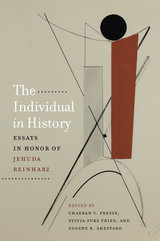 The Individual in History: Essays in Honor of Jehuda Reinharz
Edited by ChaeRan Y. Freeze, Sylvia Fuks Fried, and Eugene R. Sheppard
Brandeis University Press, 2015 Jehuda Reinharz, born in Haifa in 1944, spent his childhood in Israel and his adolescence in Germany, and moved with his family to the United States when he was seventeen. These three diverse geographies and the experiences they engendered shaped his formative years and the future of a prolific scholar who devoted his life to the study of the central role of leadership as Jews faced the challenges of emancipation and integration in Germany, the rise of modern antisemitism, the formation of Zionist youth culture and politics, and the transformation of Jewish politics in Palestine and the State of Israel. In this volume, eminent scholars in their respective fields extend the lines of Reinharz’s research interests and personal activism by focusing on the ideological, political, and scholarly contributions of a diverse range of individuals in Jewish history. Essays are clustered around five central themes: ideology and politics; statecraft; intellectual, social and cultural spheres; witnessing history; and in the academy. This volume offers a panoramic view of modern Jewish history through engaging essays that celebrate Reinharz’s rich contribution as a path-breaking and prolific scholar, teacher, and leader in the academy and beyond.
Individual Justice in Mass Tort Litigation
Jack B. Weinstein
Northwestern University Press, 1994 Documenting a prominent jurist's efforts, a collection of case studies examines his successes with Vietnam veteran exposure to Agent Orange, asbestos, and DES and repetitive stress syndrome, describes current legal attitudes, and recommends compassionate alternatives.
The Individual, Society, and Education: A HISTORY OF AMERICAN EDUCATIONAL IDEAS
Clarence J. Karier
University of Illinois Press, 1986 This is an updated version of Karier's highly regarded Man, Society,
and Education, which focuses on the concepts of human nature and community
throughout American educational history. For the new edition, Karier has
added chapters on the major movements in American education from World
War II to the present and on the major Supreme Court cases involving educational
policy during the same period.
"This classic volume remains a remarkable study in the history of
ideas into which the implications for American schooling have been deftly
woven. It is balanced, thorough, and intelligently challenging."
--- Ann M. Keppel, College of Education, University of Hawaii at
Manoa
"This new edition should have great use as a primary text at the
graduate and advanced undergraduate levels."
--- Peter A. Sola, School of Education, Howard University
Individualism and Economic Order
F. A. Hayek
University of Chicago Press, 1948 A classic collection of writings from a Nobel Prize winner on free markets versus planned economies
In this influential collection of writings, Nobel laureate Friedrich A. Hayek discusses topics from moral philosophy and the methods of the social sciences to economic theory as different aspects of the same central issue: free markets versus socialist planned economies. First published in the 1930s and '40s, these essays continue to illuminate the problems faced by economists, planners, government officials, and citizens in the changing, globalized economy of today.
Individualism and Economic Order
F. A. Hayek
University of Chicago Press, 1948 This is an auto-narrated audiobook version of this book.
In this collection of writings, Nobel laureate Friedrich A. Hayek discusses topics from moral philosophy and the methods of the social sciences to economic theory as different aspects of the same central issue: free markets versus socialist planned economies. First published in the 1930s and 40s, these essays continue to illuminate the problems faced by developing and formerly socialist countries.
F. A. Hayek, recipient of the Medal of Freedom in 1991 and winner of the Nobel Memorial Prize in Economics in 1974, taught at the University of Chicago, the University of London, and the University of Freiburg. Among his other works published by the University of Chicago Press is The Road to Serfdom, now available in a special fiftieth anniversary edition.
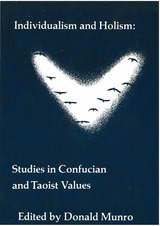 Individualism and Holism: Studies in Confucian and Taoist Values
Donald J. Munro, Editor
University of Michigan Press, 1985 The notion of “individualism” inevitably creeps into the conversation of Americans who try to compare their country with China. It is something we supposedly have and prize which the Chinese do not now have nor probably ever had. For several generations, noncommunists and communists in China have excoriated individualism as the equivalent of selfishness. For them it is a morally insupportable value, not least because it is thought to fragment societies. Inasmuch as the word “individualism” defines a number of different, though related, value concepts in modern usage, the point of departure for our analysis will be the examination of each of these. This approach will enable us to judge exactly what it is we were supposed to have, whether or not the concept has played a role in Chinese society, past or present, and, if so, what significance has been attached to it. The word “holism” rarely creeps into anyone’s conversation, except, perhaps, that of the sociologist or philosopher. It is a scholarly word. Yet there is considerable overlap between lay remarks about individual interest being subordinate to group interest and the scholar’s technical descriptions of what some holisms expect of people. The ideas suggested by the term are not exclusively scholarly. It seems to point to some Chinese ways of thinking about relations among individuals that contrast with our ways. But if anything, it is vaguer than “individualism.” [1]
Individualism and Its Discontents: Appropriations of Emerson, 1880-1950
Charles E. Mitchell
University of Massachusetts Press, 1997 We are currently updating our website and have not yet posted complete information for this title. Many of our books are in the Google preview program, which allows readers to view up to 20% of the book. If this title is active in the program, you will find the Google Preview button in the sidebar below.
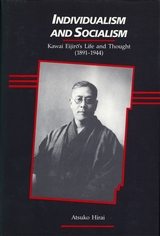 Individualism and Socialism: Kawai Eijirō’s Life and Thought (1891–1944)
Atsuko Hirai
Harvard University Press, 1986 Kawai Eijirō was a controversial figure in Japan during the interwar years. Dedicated to the idea that the socialist aspiration for economic equality could be combined with a classical liberal commitment to individual political and civil rights, he antagonized both Marxists and Japanese nationalists. He was hounded by the government as a leftist and brought to trial during World War II.
This is the first study of Kawai in English. Atsuko Hirai examines the family and school influences that contributed to the development of Kawai’s thought, and analyzes the manner in which the ideas of such Western philosophers as Kant, Hegel, John Stuart Mill, Marx, T. H. Green, and the British labor ideologues were absorbed into a receptive and creative East Asian mind. The events of Kawai’s life are intertwined with the development of his idealist political philosophy, all culminating in a trial of unprecedented scale.
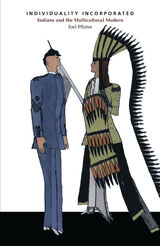 Individuality Incorporated: Indians and the Multicultural Modern
Joel Pfister
Duke University Press, 2004 Spanning the 1870s to the present, Individuality Incorporated demonstrates how crucial a knowledge of Native American-White history is to rethinking key issues in American studies, cultural studies, and the history of subjectivity. Joel Pfister proposes an ingenious critical and historical reinterpretation of constructions of “Indians” and “individuals.” Native Americans have long contemplated the irony that the government used its schools to coerce children from diverse tribes to view themselves first as “Indians”—encoded as the evolutionary problem—and then as “individuals”—defined as the civilized industrial solution. As Luther Standing Bear, Charles Eastman, and Black Elk attest, tribal cultures had their own complex ways of imagining, enhancing, motivating, and performing the self that did not conform to federal blueprints labeled “individuality.” Enlarging the scope of this history of “individuality,” Pfister elaborates the implications of state, corporate, and aesthetic experiments that moved beyond the tactics of an older melting pot hegemony to impose a modern protomulticultural rule on Natives. The argument focuses on the famous Carlisle Indian School; assimilationist novels; Native literature and cultural critique from Zitkala-Sa to Leslie Marmon Silko; Taos and Santa Fe bohemians (Mabel Dodge Luhan, D. H. Lawrence, Mary Austin); multicultural modernisms (Fred Kabotie, Oliver La Farge, John Sloan, D’Arcy McNickle); the Southwestern tourism industry’s development of corporate multiculturalism; the diversity management schemes that John Collier implemented as head of the Indian New Deal; and early formulations of ethnic studies. Pfister’s unique analysis moves from Gilded Age incorporations of individuality to postmodern incorporations of multicultural reworkings of individuality to unpack what is at stake in producing subjectivity in World America.
The Individuality of Portugal: A Study in Historical-Political Geography
By Dan Stanislawski
University of Texas Press, 1959 Many map users have wondered why Portugal, sharing with Spain the Iberian Peninsula, ever became a separate nation. That question is answered with remarkable clarity by Dan Stanislawski. This book also presents an analysis of the factors that produce separate nations and offers a study of the evolution of national cultures generally, especially as they apply to Portugal.
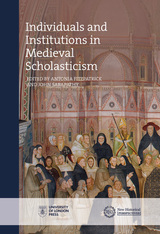 Individuals and Institutions in Medieval Scholasticism
Edited by Antonia Fitzpatrick and John Sabapathy
University of London Press, 2020 Individuals and Institutions in Medieval Scholasticism is one of the first pieces of close exploratory scholarship on the fundamental relationship between medieval scholastic thought, individual scholars, and their institutions. The text revolves around these essential questions: What was the relationship between particular intellectuals and their wider networks (including but not limited to “schools”), how did intellectuals shape their institutions, and how were their institutions shaped by them? This theoretically sophisticated collection uses a range of European methodological approaches to address a variety of genres such as commentaries, quodlibetal questions, polemics, epic poetry, and inquisition records, and a range of subject matter including history, practical ethics, medicine, theology, philosophy, the constitution of religious orders, the practice of confession, and the institution of cults. This book will be an important reference point for medieval historians, while also raising questions relevant to those working on individualization and institutionalization in other periods and disciplines.
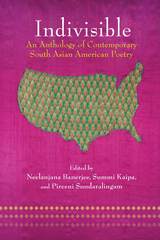 Indivisible: An Anthology of Contemporary South Asian American Poetry
Neelanjana Banerjee
University of Arkansas Press, 2010 The first anthology of its kind, Indivisible brings together forty-nine American poets who trace their roots to Bangladesh, India, Nepal, Pakistan, and Sri Lanka. Featuring award-winning poets including Meena Alexander, Agha Shahid Ali, Chitra Banerjee Divakaruni, and Vijay Seshadri, here are poets who share a long history of grappling with a multiplicity of languages, cultures, and faiths. The poems gathered here take us from basketball courts to Bollywood, from the Grand Canyon to sugar plantations, and from Hindu-Muslim riots in India to anti-immigrant attacks on the streets of post–9/11 America. Showcasing a diversity of forms, from traditional ghazals and sestinas to free verse, experimental writing, and slam poetry, Indivisible presents 141 poems by authors who are rewriting the cultural and literary landscape of their time and their place. Includes biographies of each poet.
 Indivisible by Two: Lives of Extraordinary Twins
Nancy L. Segal
Harvard University Press, 2005 A leading expert on twins delves into the stories behind her research to reveal the profound joys and real-life traumas of twelve remarkable sets of twins, triplets, and quadruplets.
Indivisible by Two introduces us to an assortment of memorable characters, from the “Fireman Twins”—brothers who, though reared separately, are astonishingly similar in personality and behavioral traits—to the twin sisters who overcame one twin’s infertility by having the other serve as her surrogate mother. We meet one of the few identical brother–sister pairs in the world after one of two sisters was surgically transformed into a man, and identical triplet brothers, only one of whom is gay while the others are straight. We see uniquely blended families—identical twin brothers marrying identical twin sisters, and Chinese twins adopted by different Canadian families yet raised as sisters.
Being a twin can also render the experience of historical tragedy uniquely painful. We meet Stepha and Annetta, survivors of Josef Mengele’s heinous experiments in Auschwitz, and untangle the troubled lifelong tie between Jack and Oskar, born in the 1930s to a Jewish father and a German Gentile mother, one raised as a Jew in Trinidad and the other as a Catholic and a member of the Hitler Youth in Nazi Germany.
Nancy Segal unravels these stories and others with an eye for the challenges that life as a twin (or triplet or quadruplet) can pose to parents, friends, and spouses, as well as the twins themselves. These moving stories remind us how incompletely any theory explains real life—twin or not.
The Indo-European Dialects
Antoine Meillet
University of Alabama Press, 1967 Tracing the echoes of ancient tongues—where language meets history. This work translates Meillet’s classic philological study from the original 1908 French edition, which itself was based upon a course Meillet delivered at the Collège de France in 1906-1907. This edition includes the author's new introduction for the 1922 edition. Indexes, missing from the French editions, have been added by the translator for the convenience of the reader, as have bibliographical references to salient works from the half-century after original composition.
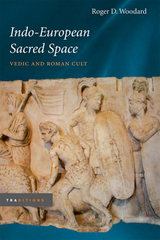 Indo-European Sacred Space: Vedic and Roman Cult
Roger D. Woodard
University of Illinois Press, 2006 In Indo-European Sacred Space, Roger D. Woodard provides a careful examination of the sacred spaces of ancient Rome, finding them remarkably consistent with older Indo-European religious practices as described in the Vedas of ancient India. Employing and expanding on the fundamental methods of Émile Benveniste, as well as Georges Dumézil's tripartite analysis of Proto-Indo-European society, Woodard clarifies not only the spatial dynamics of the archaic Roman cult but, stemming from that, an unexpected clarification of several obscure issues in the study of Roman religion.
Looking closely at the organization of Roman religious activity, especially as regards sacrifices, festivals, and the hierarchy of priests, Woodard sheds new light on issues including the presence of the god Terminus in Jupiter's Capitoline temple, the nature of the Roman suovetaurilia, the Ambarvalia and its relationship to the rites of the Fratres Arvales, and the identification of the "Sabine" god Semo Sancus. Perhaps most significantly, this work also presents a novel and persuasive resolution to the long standing problem of "agrarian Mars."
 An Indomitable Beast: The Remarkable Journey of the Jaguar
Alan Rabinowitz
Island Press, 2014 The jaguar is one of the most mysterious and least-known big cats of the world. The largest cat in the Americas, it has survived an onslaught of environmental and human threats partly because of an evolutionary history unique among wild felines, but also because of a power and indomitable spirit so strong, the jaguar has shaped indigenous cultures and the beliefs of early civilizations on two continents. In An Indomitable Beast: The Remarkable Journey of the Jaguar, big-cat expert Alan Rabinowitz shares his own personal journey to conserve a species that, despite its past resilience, is now on a slide toward extinction if something is not done to preserve the pathways it prowls through an ever-changing, ever-shifting landscape dominated by humans. Rabinowitz reveals how he learned from newly available genetic data that the jaguar was a single species connected genetically throughout its entire range from Mexico to Argentina, making it unique among all other large carnivores in the world. In a mix of personal discovery and scientific inquiry, he sweeps his readers deep into the realm of the jaguar, offering fascinating accounts from the field. Enhanced with maps, tables, and color plates, An Indomitable Beast brings important new research to life for scientists, anthropologists, and animal lovers alike. This book is not only about jaguars, but also about tenacity and survival. From the jaguar we can learn better strategies for saving other species and also how to save ourselves when faced with immediate and long-term catastrophic changes to our environment.
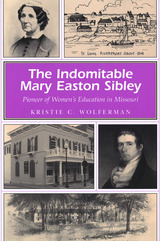 The Indomitable Mary Easton Sibley: Pioneer of Women's Education in Missouri
Kristie C. Wolferman
University of Missouri Press, 2008 Acknowledged as a significant figure in the history of women on the early western frontier, Mary Easton Sibley may be little known to many modern readers. Yet she was involved in most of the important events in nineteenth-century Missouri, pursued and practiced educational innovations, and founded a school that continues to thrive today. This first biography of Sibley sheds new light on this important pioneer. Kristie Wolferman retraces the course of an exciting life, beginning with four-year-old Mary’s arrival in St. Louis in 1804 when her father was appointed attorney general for the District of Louisiana—and the Eastons became one of the first American families to settle in this bustling French town. At fifteen, Mary married George Champlin Sibley, the factor of Fort Osage in Western Missouri, where the young bride lived among the Indians on the edge of the frontier and took up her teaching vocation. She then went on to found Linden Wood in St. Charles, the first college for women west of the Mississippi, and she also taught classes for African American and immigrant children. Throughout the story, Wolferman shows us a life intimately entwined with the history of the state, as Mary witnessed St. Louis in its primitive years and frontier life at Fort Osage, as well as changes in Indian policy and citizenship for former slaves. Although Sibley’s life has been told in older accounts, Wolferman’s is the first to draw fully on Mary and George Sibley’s journals and letters, with Mary’s journal especially shedding light on her views regarding women’s social and political roles, slavery, temperance, religion, and other topics. By reconstructing Sibley’s inner life as well as her career, Wolferman depicts not merely a frontier heroine and educational pioneer but an assertive woman who did not hesitate to express unconventional views. Today, Lindenwood University is a major coeducational institution that continues to honor Mary Sibley’s philosophy and dedication. This biography not only brings to life one of Missouri’s most remarkable women educators but also demonstrates how her story reflects educational, religious, and social developments in both the state and the nation. The Indomitable Mary Easton Sibley recognizes her as a key player on the frontier and as a major part of Missouri’s heritage.
Indonesia: Archipelago of Fear
Andre Vltchek
Pluto Press, 2012 Indonesia: Archipelago of Fear is a fascinating and at times unsettling journey into the world's most populous Muslim nation as it struggles to emerge from decades of dictatorship and the plunder of its natural resources.
Andre Vltchek brings together more than a decade of investigative journalism in and around Indonesia to chart the recent history of the country, from the revolution which overthrew General Suharto's genocidal dictatorship in 1998 to the present day. He covers the full breadth of the country from Islamic Aceh to mostly Catholic East Timor.
Tracing Indonesia's current problems back to Suharto's coup and the genocide of 1965 – and the support given by the West to Suharto – Vltchek provides an intimate and deeply humane insight into the hopes and fears of Indonesia's people.
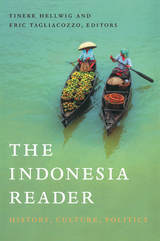 The Indonesia Reader: History, Culture, Politics
Tineke Hellwig and Eric Tagliacozzo, eds.
Duke University Press, 2009 Indonesia is the world’s largest archipelago, encompassing nearly eighteen thousand islands. The fourth-most populous nation in the world, it has a larger Muslim population than any other. The Indonesia Reader is a unique introduction to this extraordinary country. Assembled for the traveler, student, and expert alike, the Reader includes more than 150 selections: journalists’ articles, explorers’ chronicles, photographs, poetry, stories, cartoons, drawings, letters, speeches, and more. Many pieces are by Indonesians; some are translated into English for the first time. All have introductions by the volume’s editors. Well-known figures such as Indonesia’s acclaimed novelist Pramoedya Ananta Toer and the American anthropologist Clifford Geertz are featured alongside other artists and scholars, as well as politicians, revolutionaries, colonists, scientists, and activists. Organized chronologically, the volume addresses early Indonesian civilizations; contact with traders from India, China, and the Arab Middle East; and the European colonization of Indonesia, which culminated in centuries of Dutch rule. Selections offer insight into Japan’s occupation (1942–45), the establishment of an independent Indonesia, and the post-independence era, from Sukarno’s presidency (1945–67), through Suharto’s dictatorial regime (1967–98), to the present Reformasi period. Themes of resistance and activism recur: in a book excerpt decrying the exploitation of Java’s natural wealth by the Dutch; in the writing of Raden Ajeng Kartini (1879–1904), a Javanese princess considered the icon of Indonesian feminism; in a 1978 statement from East Timor objecting to annexation by Indonesia; and in an essay by the founder of Indonesia’s first gay activist group. From fifth-century Sanskrit inscriptions in stone to selections related to the 2002 Bali bombings and the 2004 tsunami, The Indonesia Reader conveys the long history and the cultural, ethnic, and ecological diversity of this far-flung archipelago nation.
 Indonesian Destinies
Theodore Friend
Harvard University Press, 2005 "How can such a gentle people as we are be so murderous?" a prominent Indonesian asks. That question--and the mysteries of the archipelago's vast contradictions--haunt Theodore Friend's remarkable work, a narrative of Indonesia during the last half century, from the postwar revolution against Dutch imperialism to the unrest of today. Part history, part meditation on a place and a past observed firsthand, Indonesian Destinies penetrates events that gave birth to the world's fourth largest nation and assesses the continuing dangers that threaten to tear it apart.
Friend reveals Sukarno's character through wartime collaboration with Japan, and Suharto's through the mass murder of communists that brought him to power for thirty-two years. He guides our understanding of the tolerant forms of Islam prevailing among the largest Muslim population in the world, and shows growing tensions generated by international terrorism. Drawing on a deep knowledge of the country's cultures, its leaders, and its ordinary people, Friend gives a human face and a sense of immediacy to the self-inflicted failures and immeasurable tragedies that cast a shadow over Indonesia's past and future. A clear and compelling passion shines through this richly illustrated work. Rarely have narrative history and personal historical witness been so seamlessly joined.
 An Indonesian History: Personalised Politics in Makassar and South Sulawesi, c.1600–2018
Heather Sutherland
National University of Singapore Press, 2024 A history of regionalism in Indonesia.
Indonesia, the world’s fourth most populous country, is a vast archipelago with a relatively short history of unified rule. The devolution of power to the provinces after 1998 has meant that regional social traditions and historical legacies are powerful forces in contemporary politics. South Sulawesi (Southwest Celebes), a crucial and understudied region of Indonesia, is no exception.
Starting in 1669, tensions between the Dutch East India Company’s cosmopolitan port town of Makassar and the aggressive, competitive dynasties of the interior began to shape peninsula politics. A strong ethnic Chinese community embodied the town’s wide horizons, while in the countryside, the nobility’s engagement with Islam ranged from symbiotic co-optation to hostility. Religion, rather than politics, framed the main challenges to authority. Finally integrated in 1965, the city and province remain among the most clientelist in the country, their politics personalized and transactional. Nevertheless, the large city of Makassar is booming. Dutch indirect rule and neocolonial strategies entrenched the power of local elites, who resisted changes imposed by Batavia or, after 1950, by Jakarta.
In this history, Heather Sutherland’s long-term perspective avoids dichotomies like continuity and change or autonomy and dependence, recognizing that trade-offs have always been fundamental to interaction within and between town and country and between the province and distant capitals.
Indonesian Notebook: A Sourcebook on Richard Wright and the Bandung Conference
Brian Russell Roberts and Keith Foulcher, editors
Duke University Press, 2016 While Richard Wright's account of the 1955 Bandung Conference has been key to shaping Afro-Asian historical narratives, Indonesian accounts of Wright and his conference attendance have been largely overlooked. Indonesian Notebook contains myriad documents by Indonesian writers, intellectuals, and reporters, as well as a newly recovered lecture by Wright, previously published only in Indonesian. Brian Russell Roberts and Keith Foulcher introduce and contextualize these documents with extensive background information and analysis, showcasing the heterogeneity of postcolonial modernity and underscoring the need to consider non-English language perspectives in transnational cultural exchanges. This collection of primary sources and scholarly histories is a crucial companion volume to Wright'sThe Color Curtain.
Indonesian Women and Local Politics: Islam, Gender and Networks in Post-Suharto Indonesia
Kurniawati Hastuti Dewi
National University of Singapore Press, 2015 In an important social change, female Muslim political leaders in Java have enjoyed considerable success in direct local elections following the fall of Suharto in Indonesia. Indonesian Women and Local Politics shows that Islam, gender, and social networks have been decisive in their political victories. Islamic ideas concerning female leadership provide a strong religious foundation for their political campaigns. However, their approach to women's issues shows that female leaders do not necessarily adopt a woman's perspectives when formulating policies. This new trend of Muslim women in politics will continue to shape the growth and direction of democratization in local politics in post-Suharto Indonesia and will color future discourse on gender, politics, and Islam in contemporary Southeast Asia.
The Indoor Gardener
Daisy T. Abbott
University of Minnesota Press, 1939
The Indoor Gardener was first published in 1939. Minnesota Archive Editions uses digital technology to make long-unavailable books once again accessible, and are published unaltered from the original University of Minnesota Press editions.
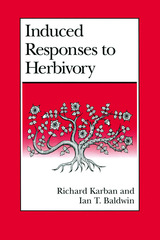 Induced Responses to Herbivory
Richard Karban and Ian T. Baldwin
University of Chicago Press, 1997 Plants face a daunting array of creatures that eat them, bore into them, and otherwise use virtually every plant part for food, shelter, or both. But although plants cannot flee from their attackers, they are far from defenseless. In addition to adaptations like thorns, which may be produced in response to attack, plants actively alter their chemistry and physiology in response to damage. For instance, young potato plant leaves being eaten by potato beetles respond by producing chemicals that inhibit beetle digestive enzymes.
Over the past fifteen years, research on these induced responses to herbivory has flourished, and here Richard Karban and Ian T. Baldwin present the first comprehensive evaluation and synthesis of this rapidly developing field. They provide state-of-the-discipline reviews and highlight areas where new research will be most productive. Their comprehensive overview will be welcomed by a wide variety of theoretical and applied researchers in ecology, evolutionary biology, plant biology, entomology, and agriculture.
|
|
